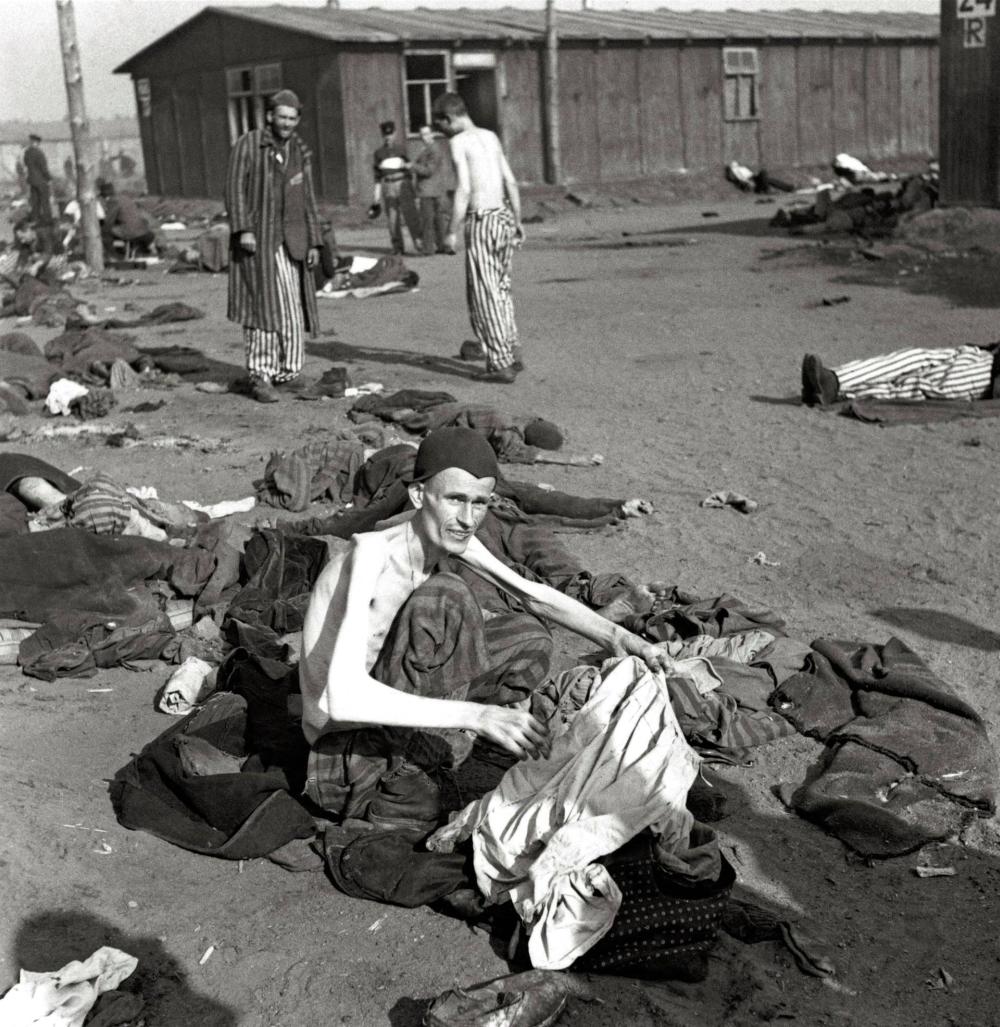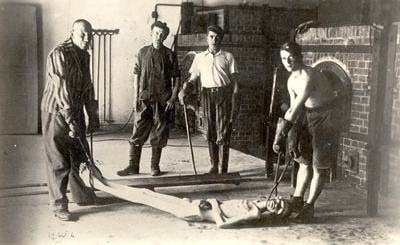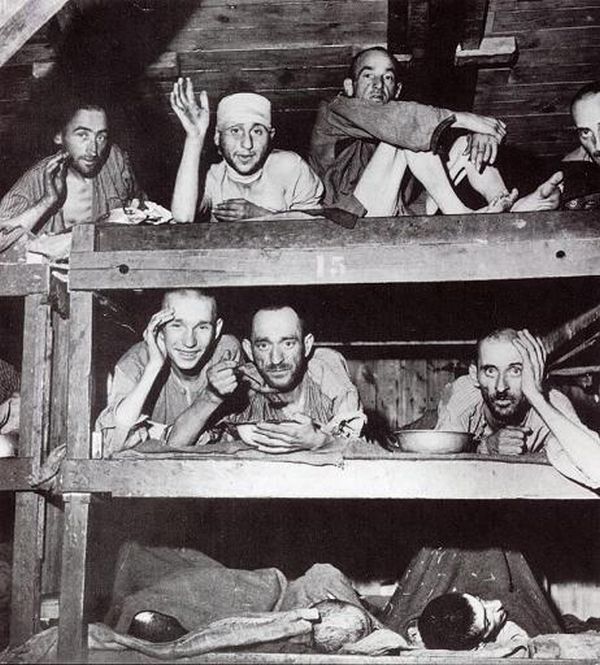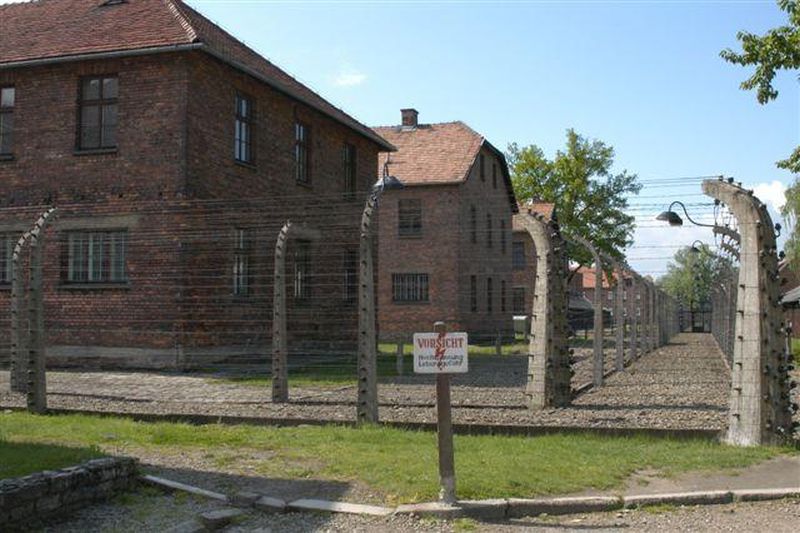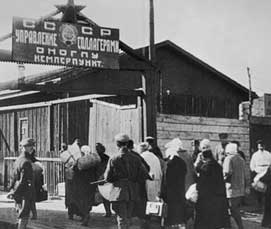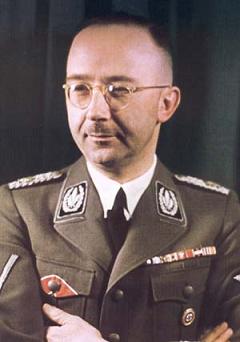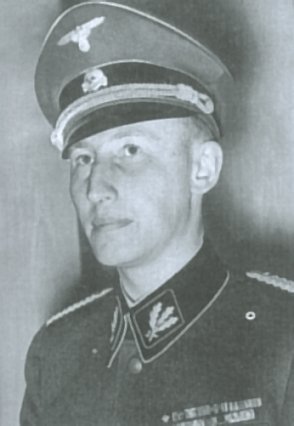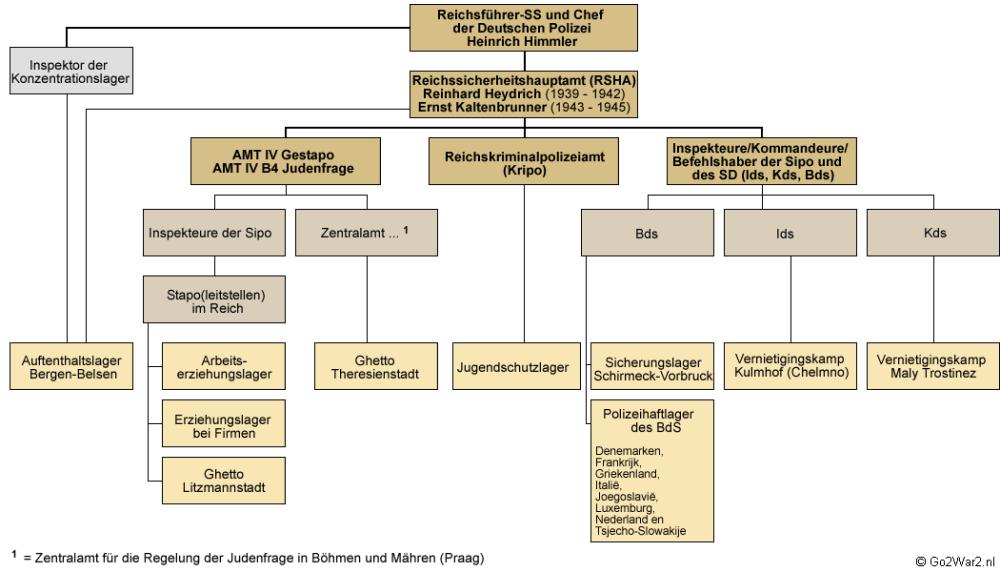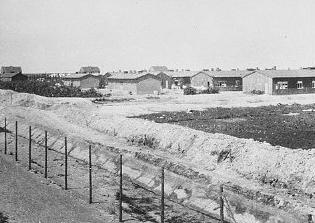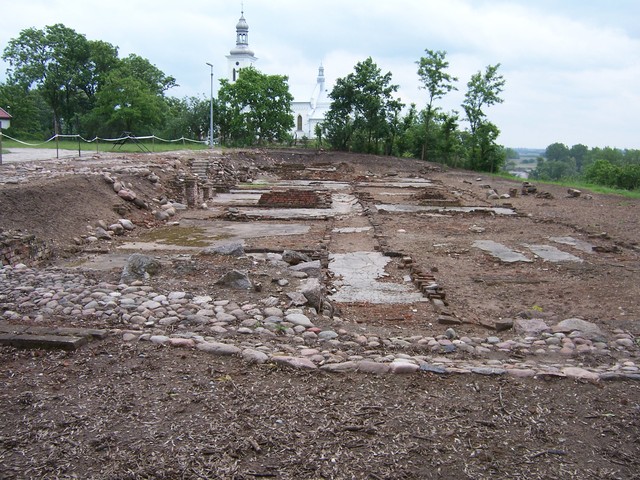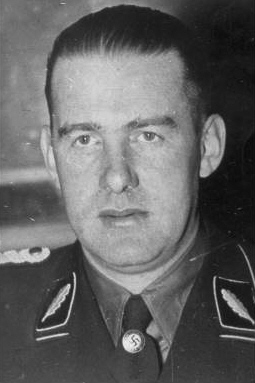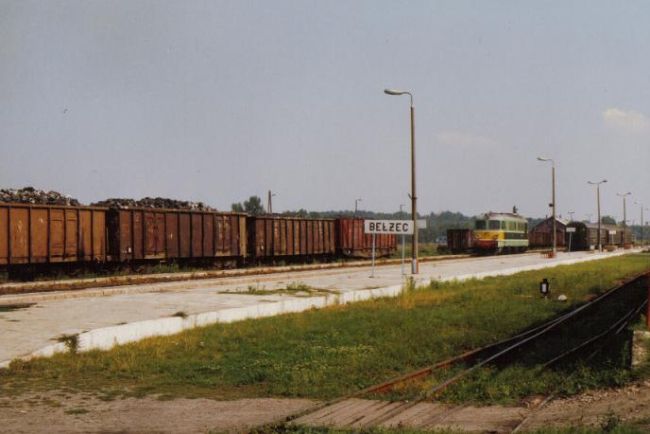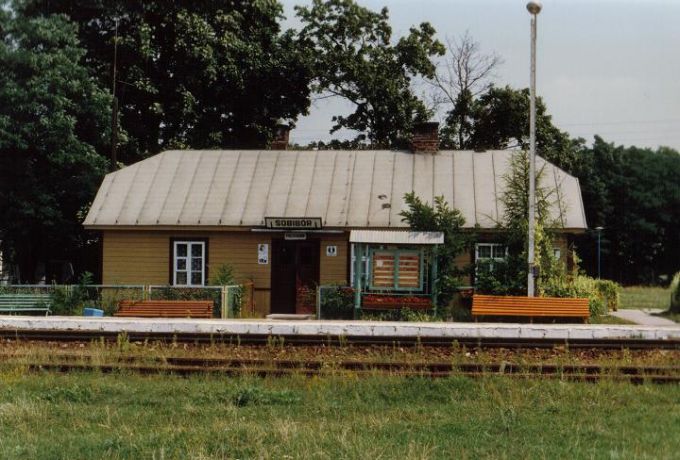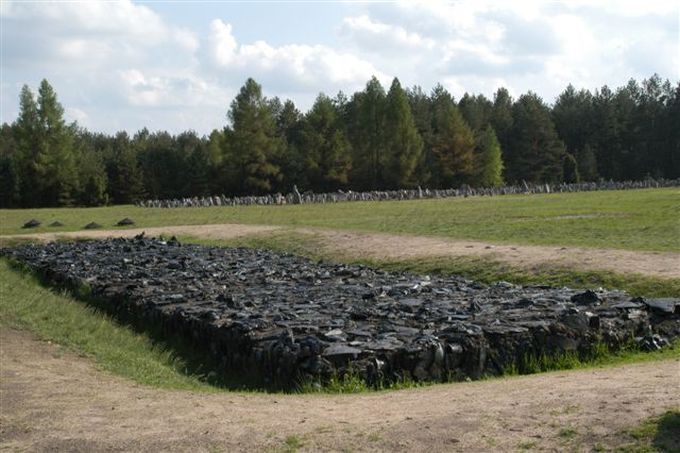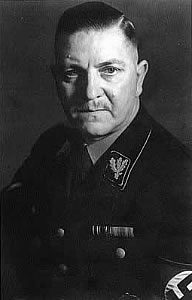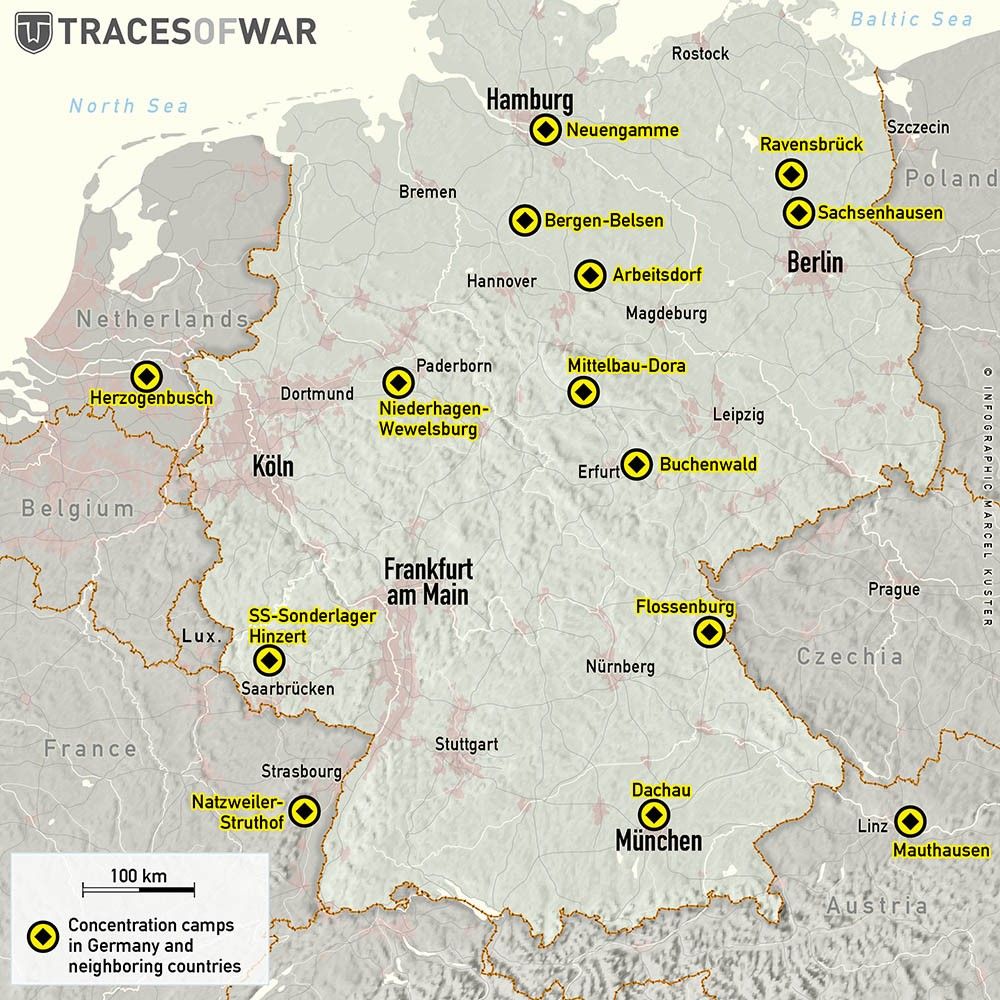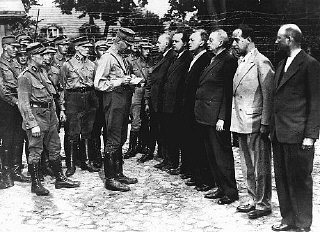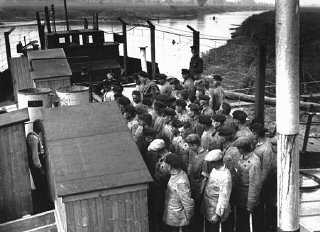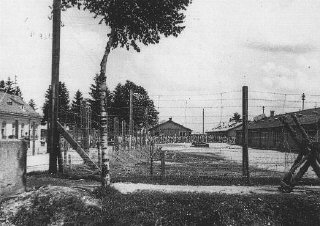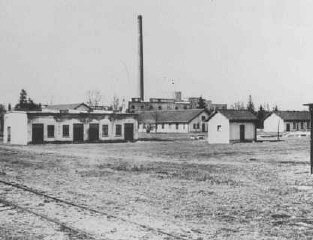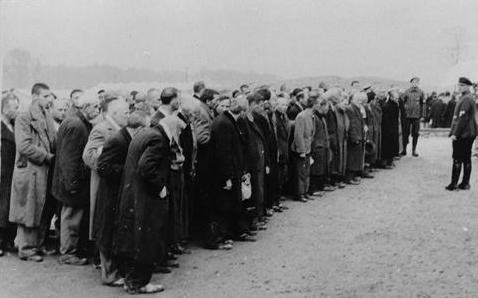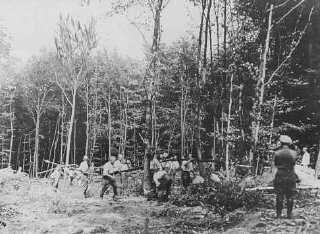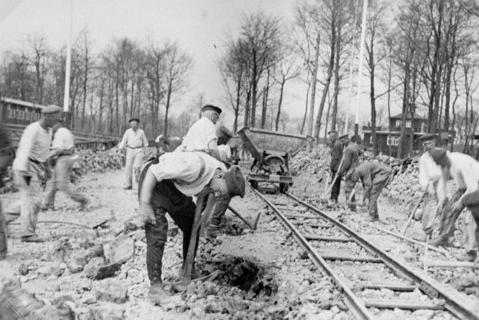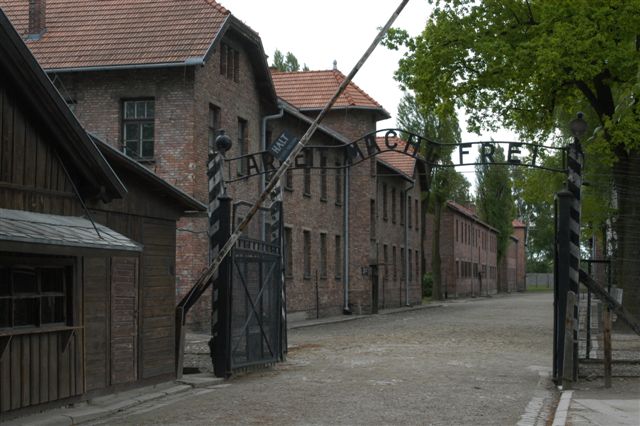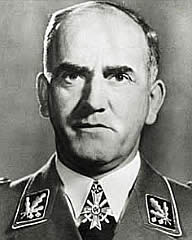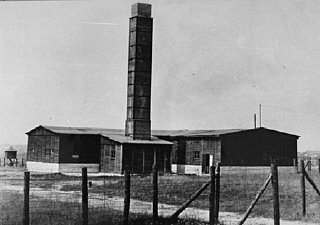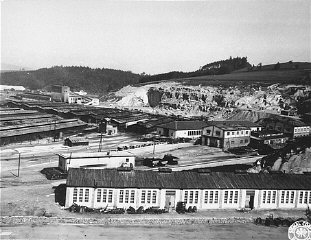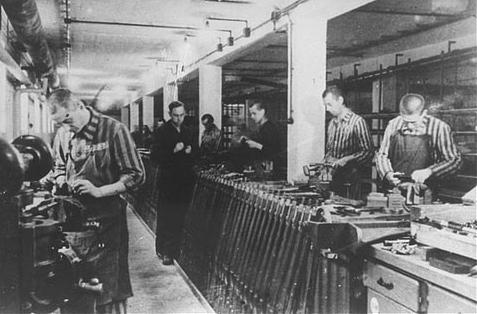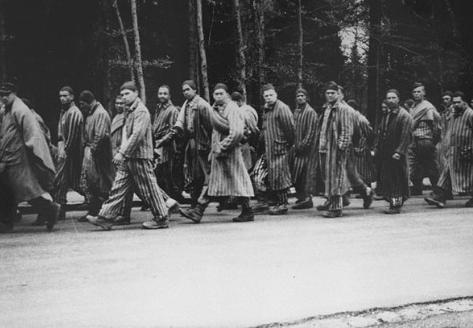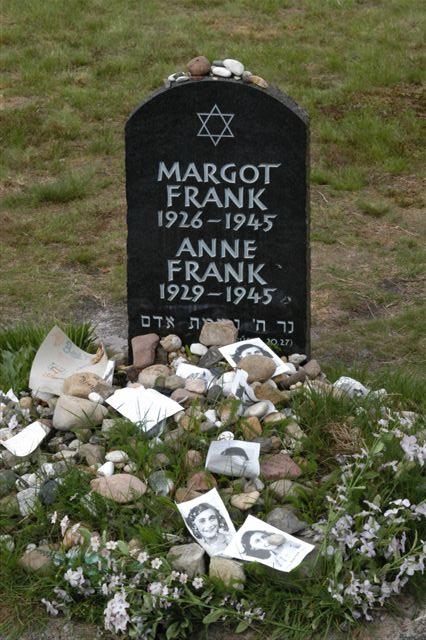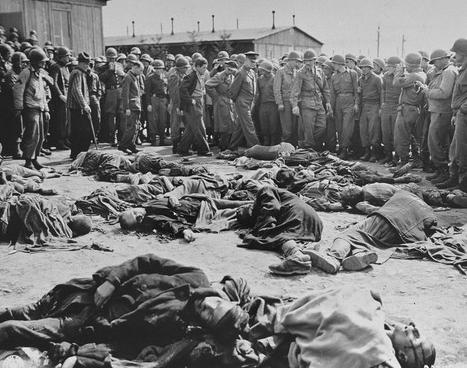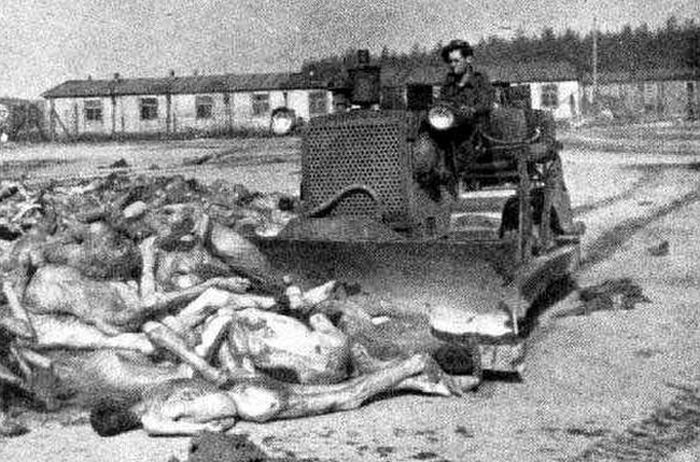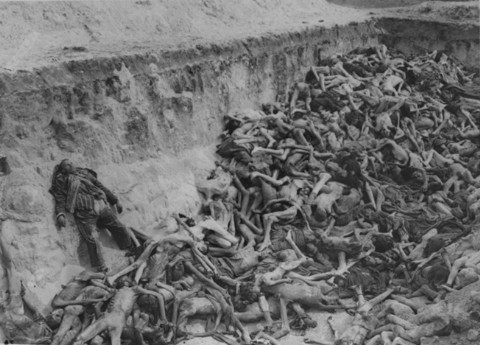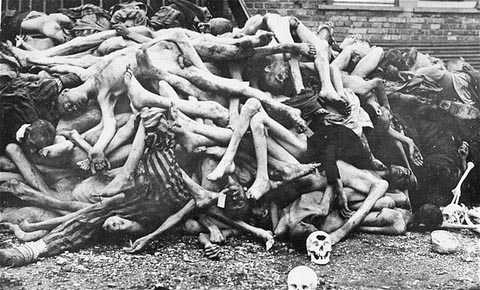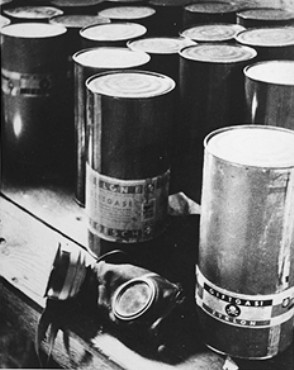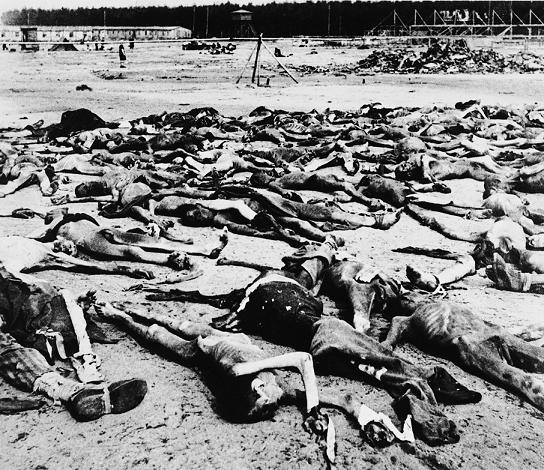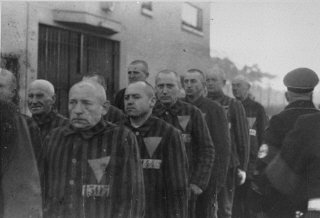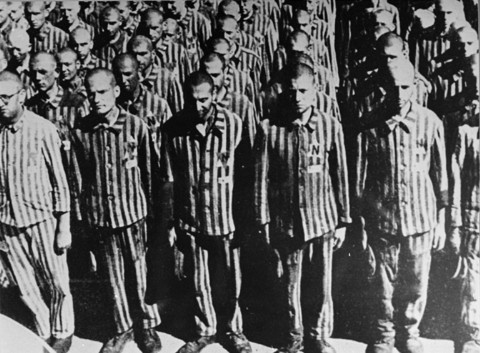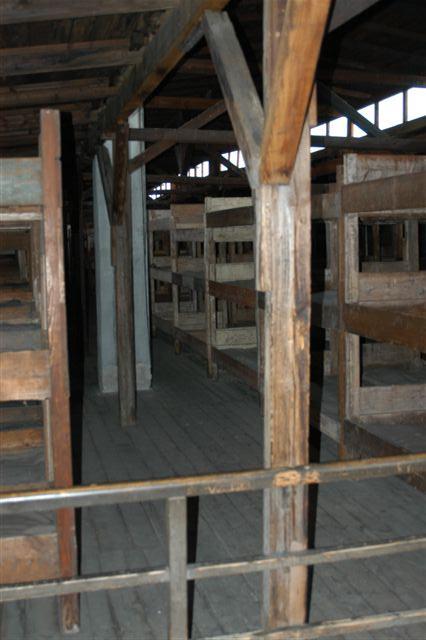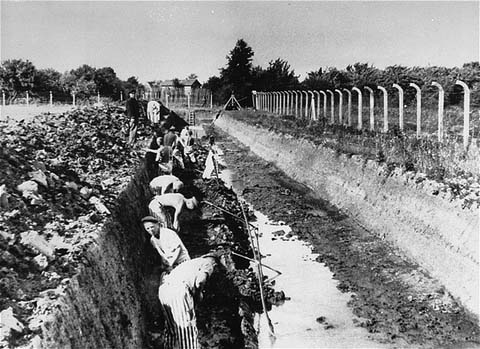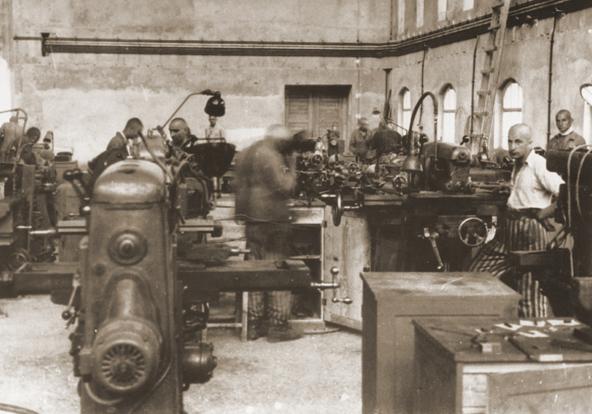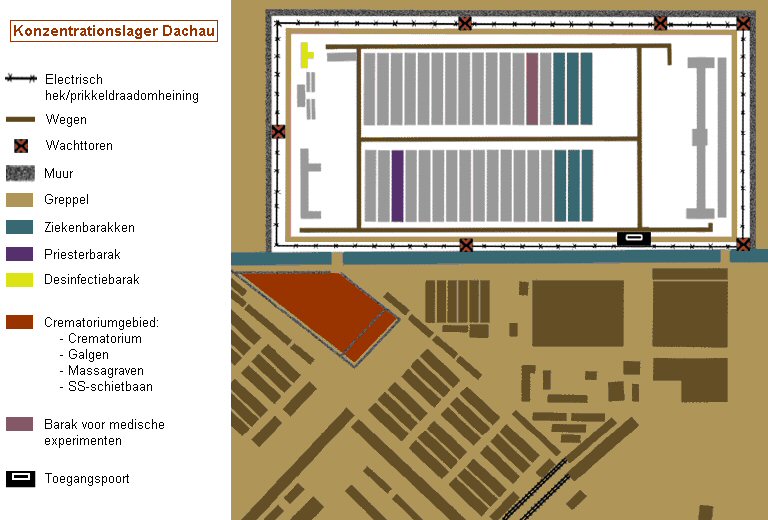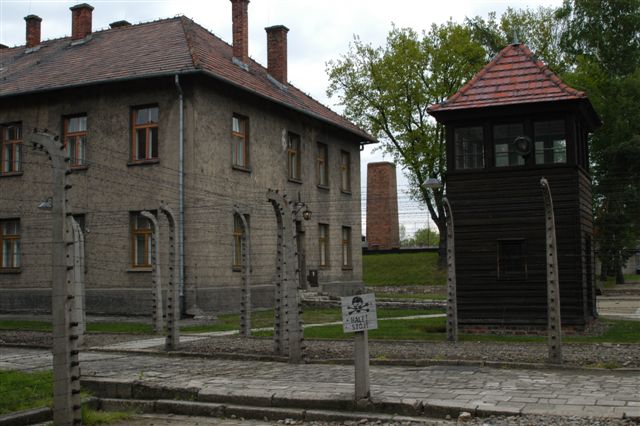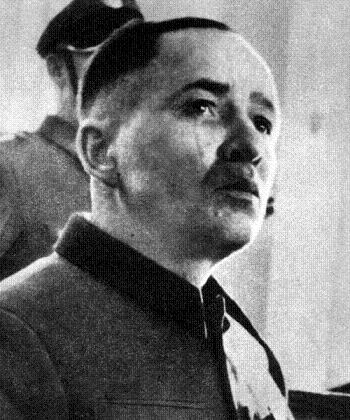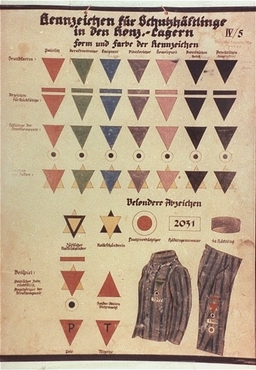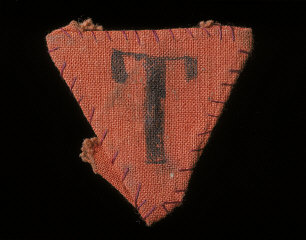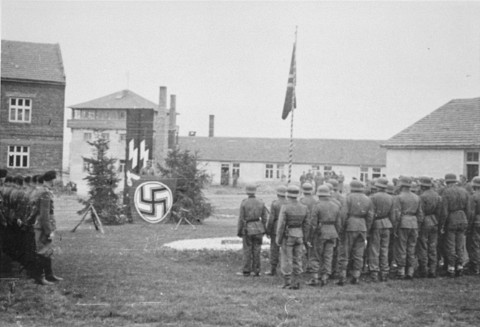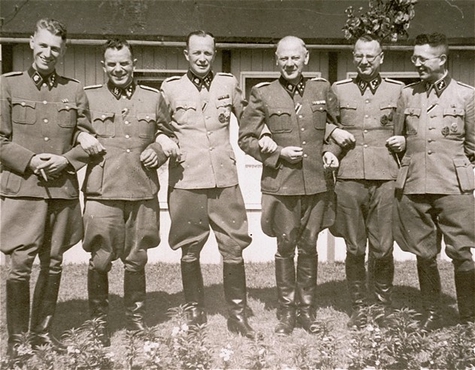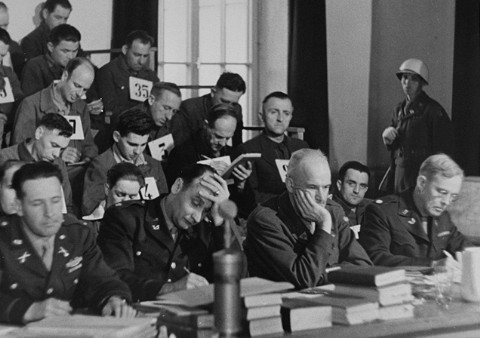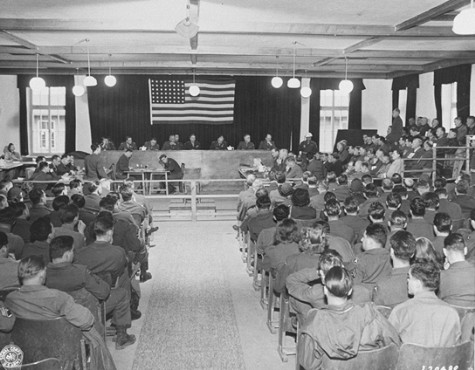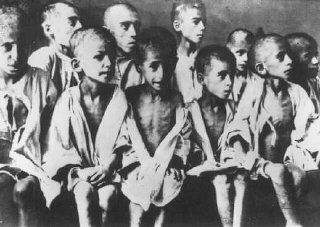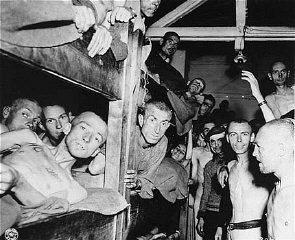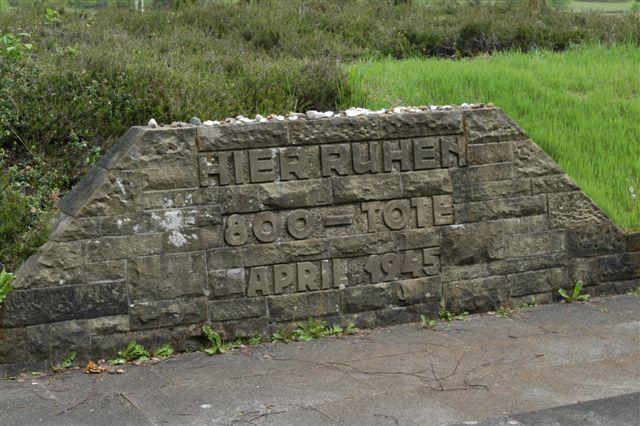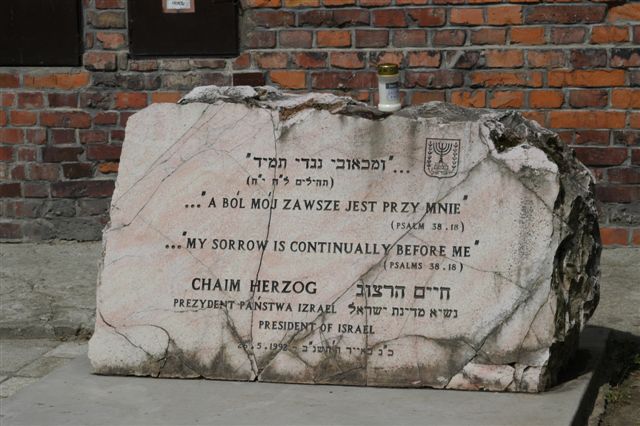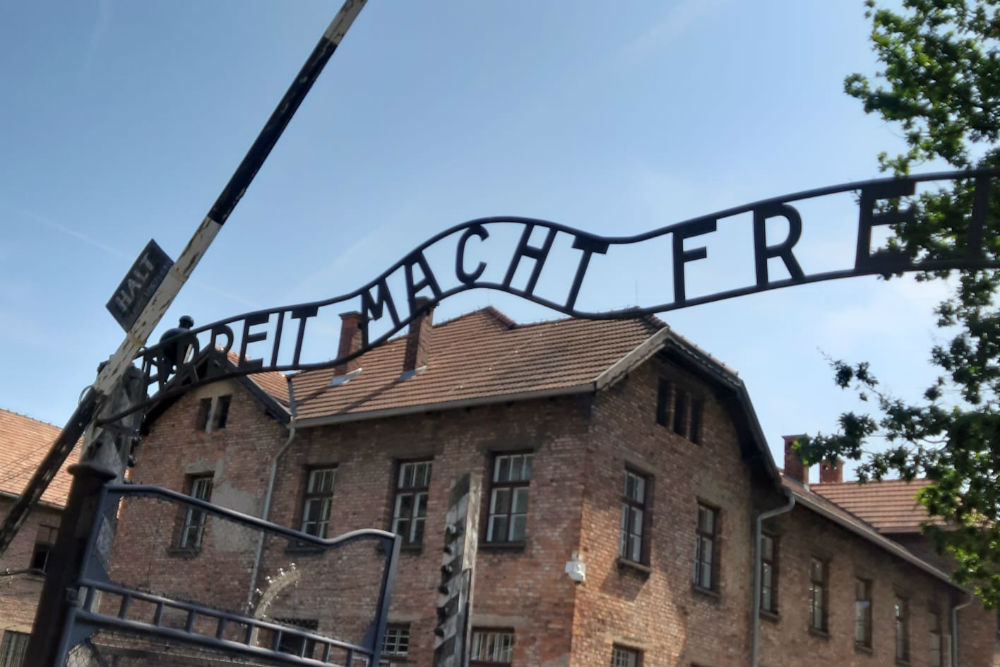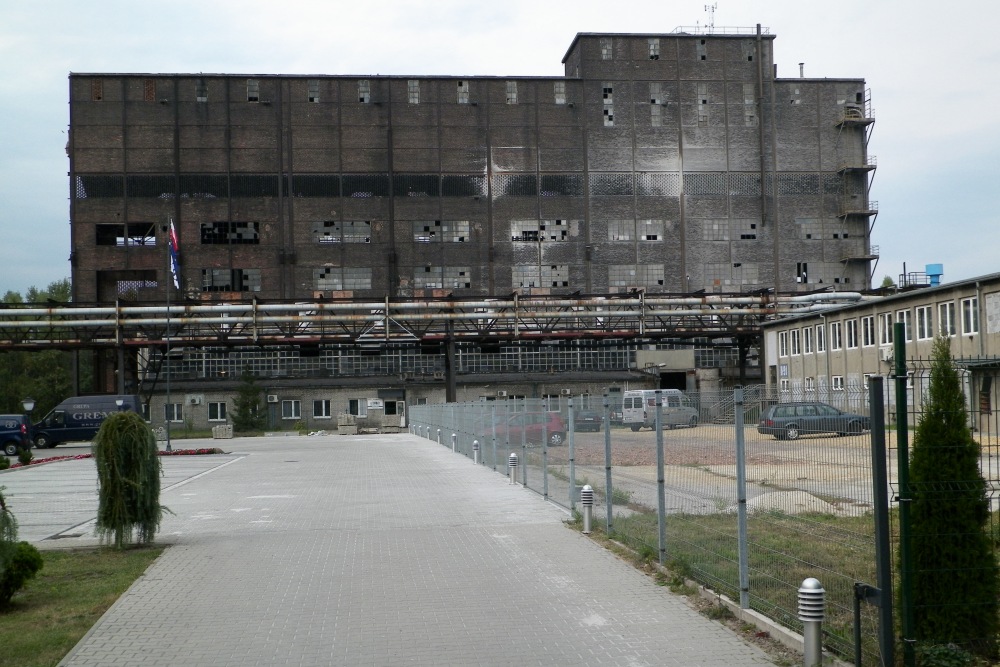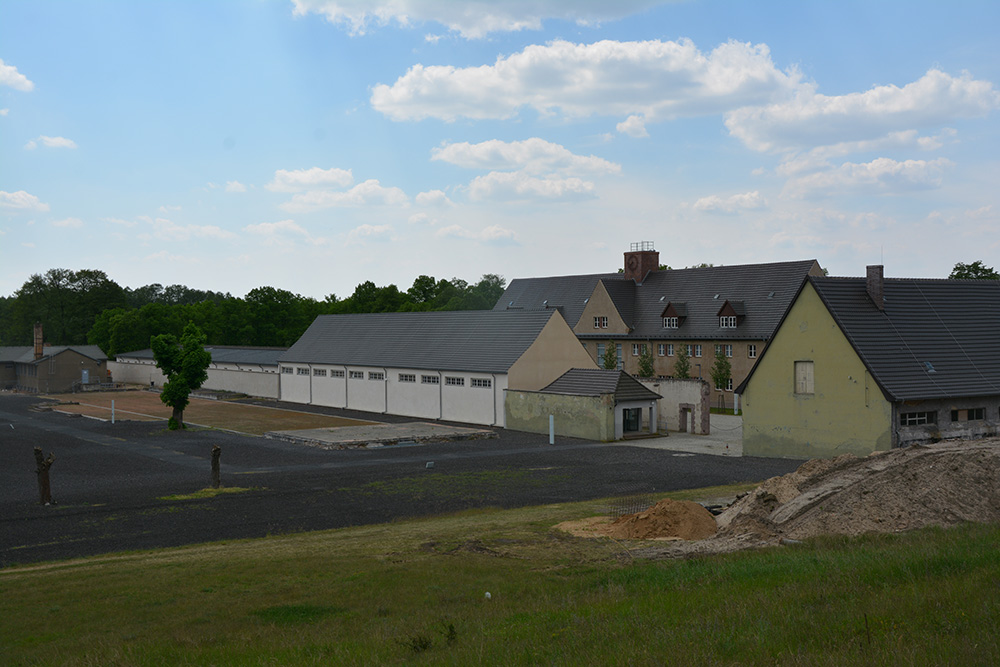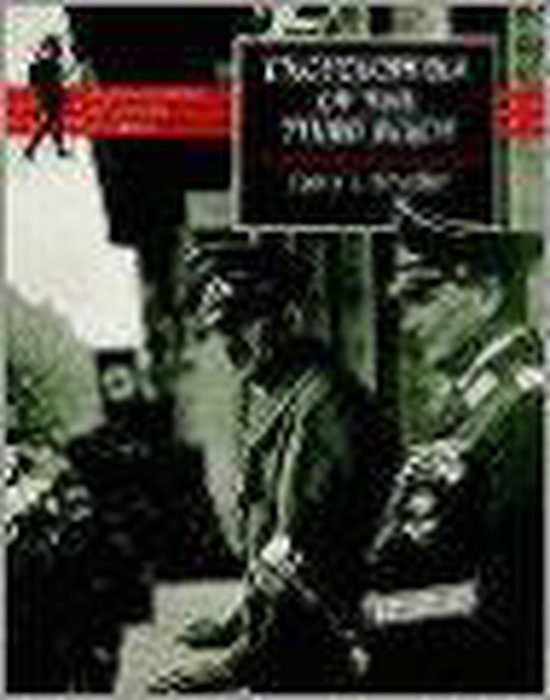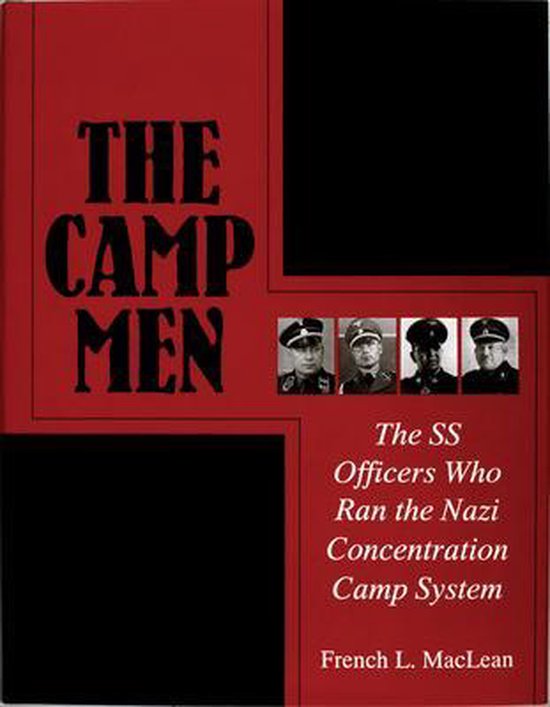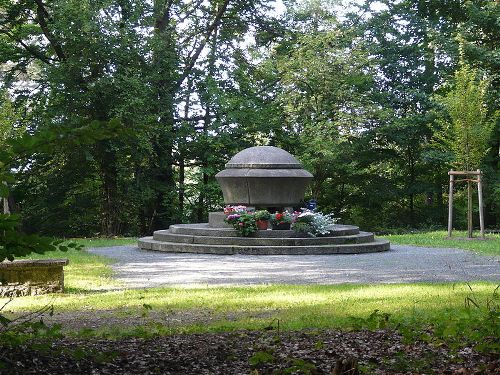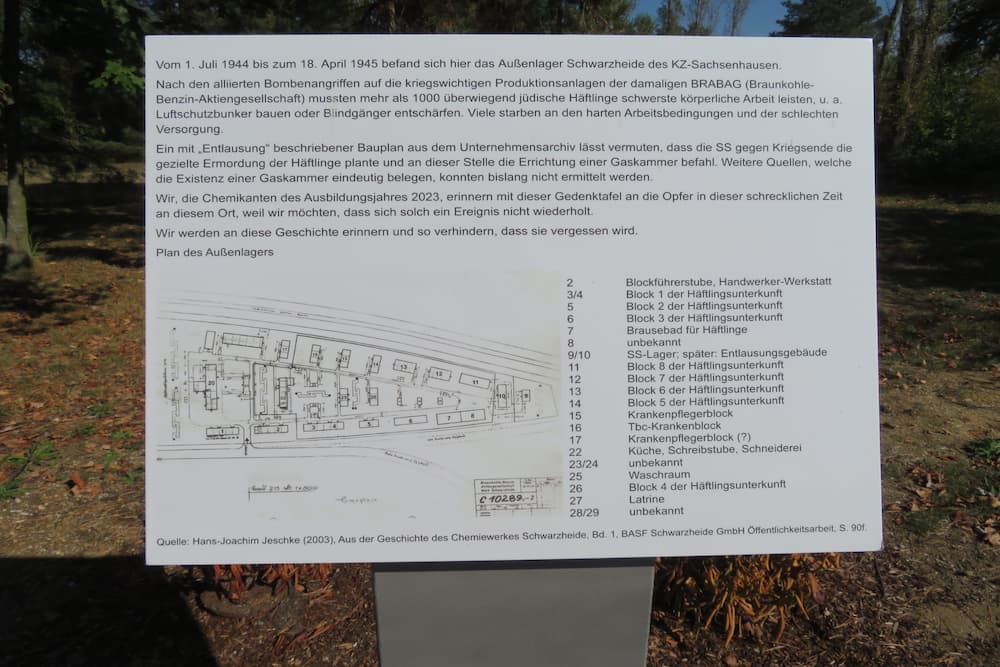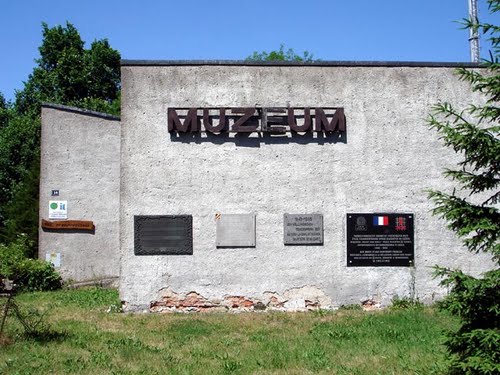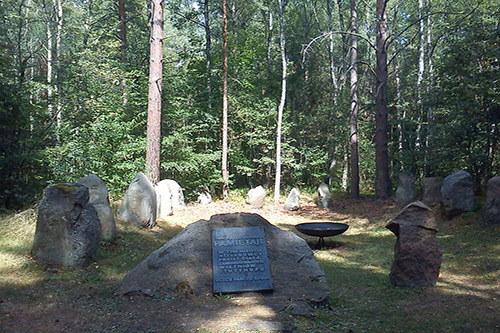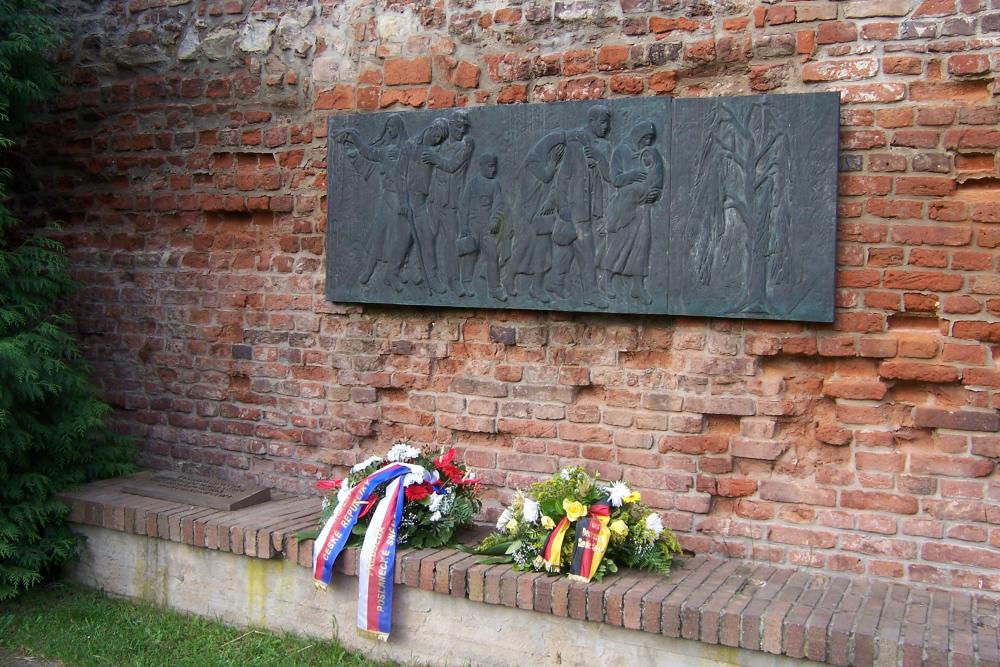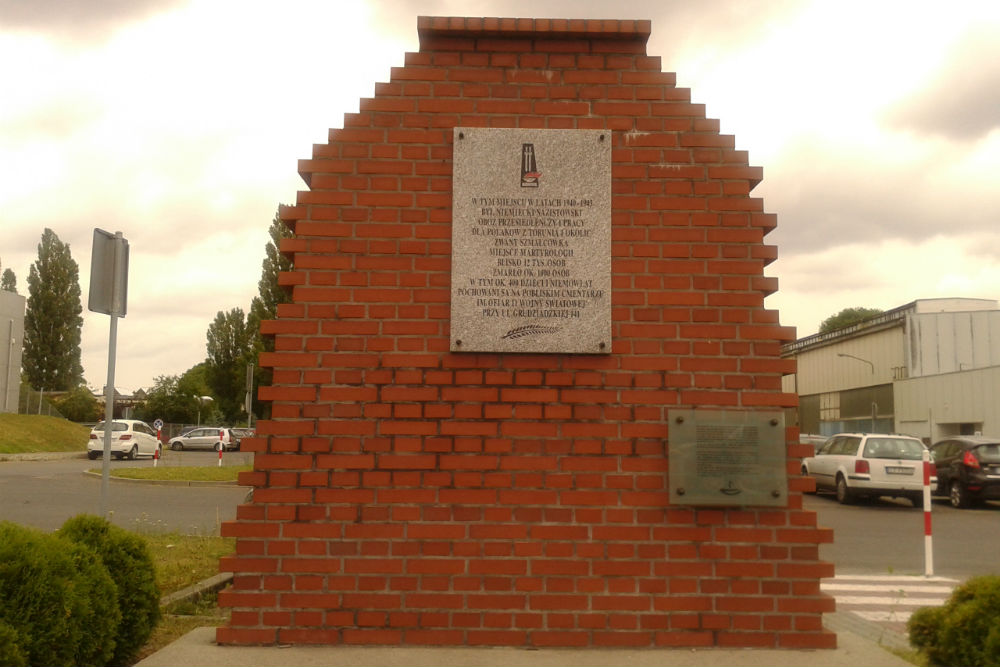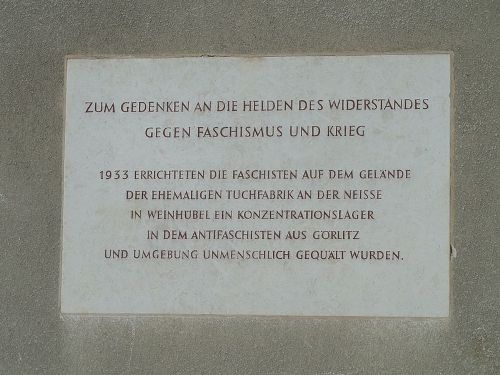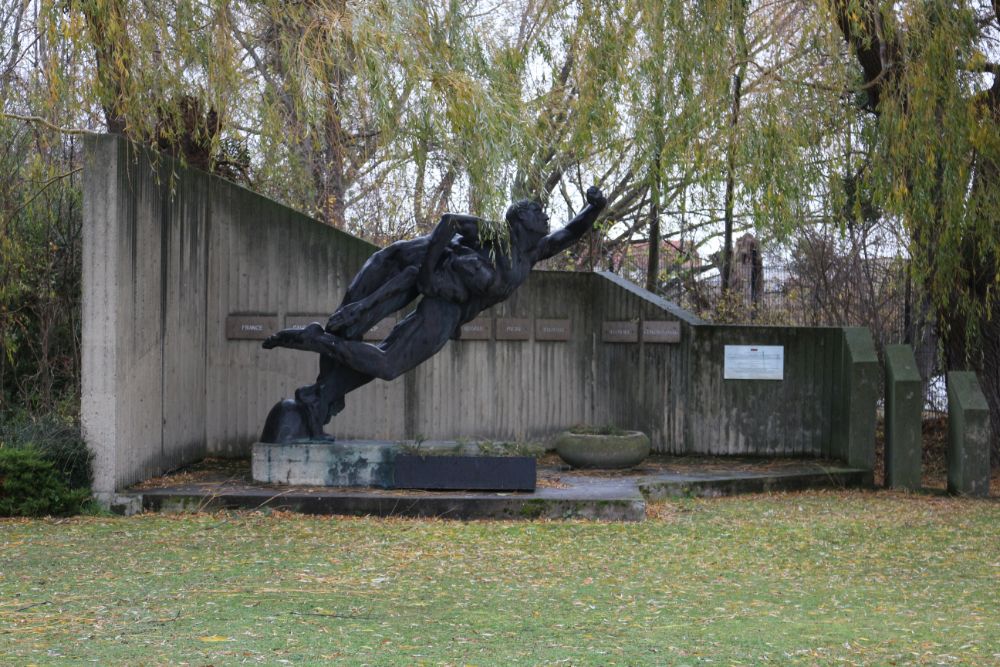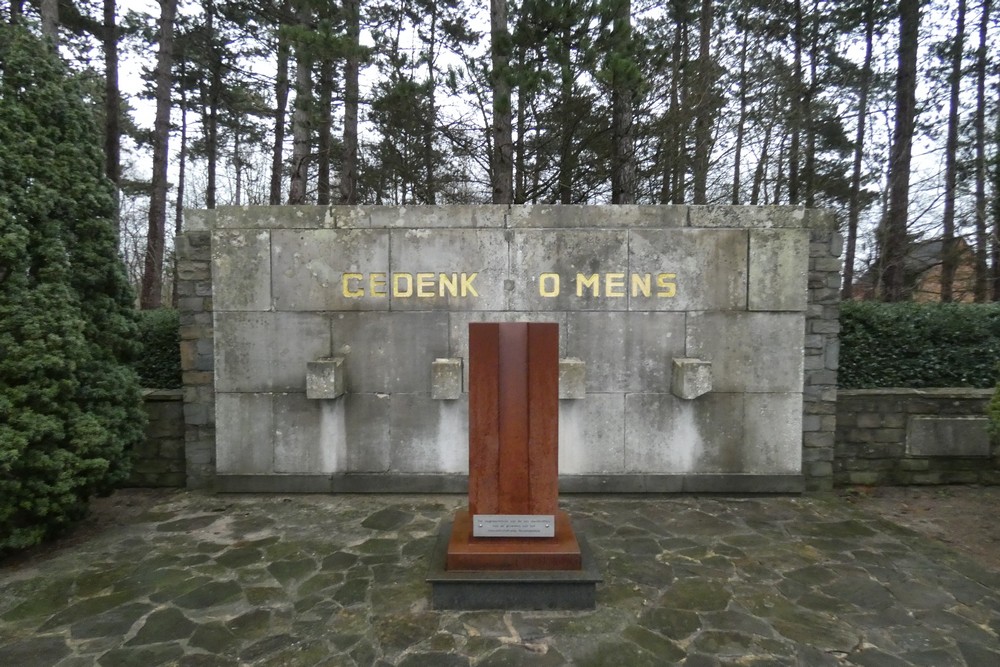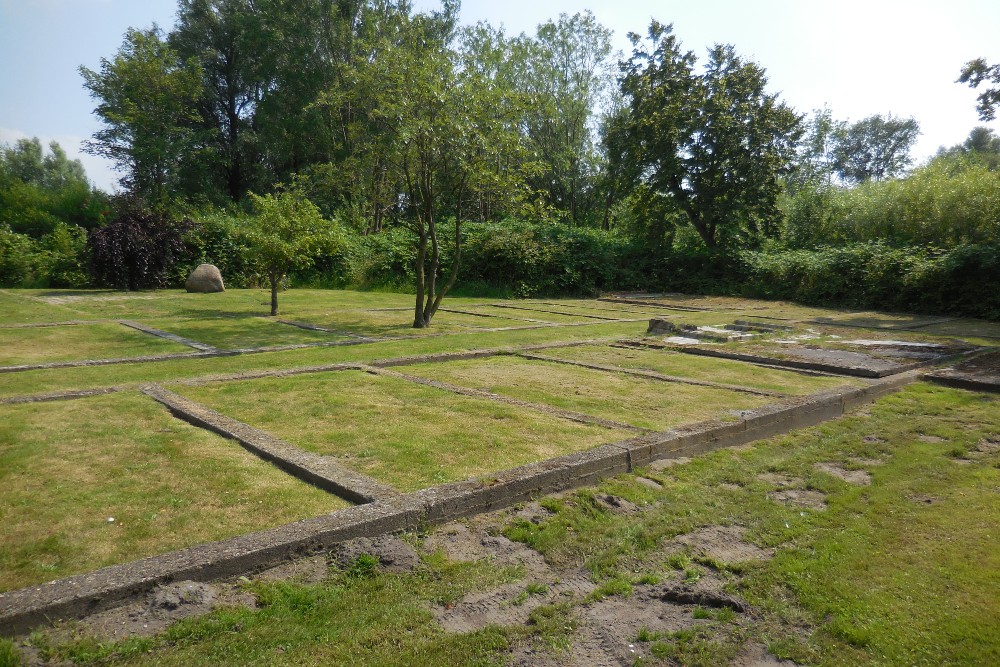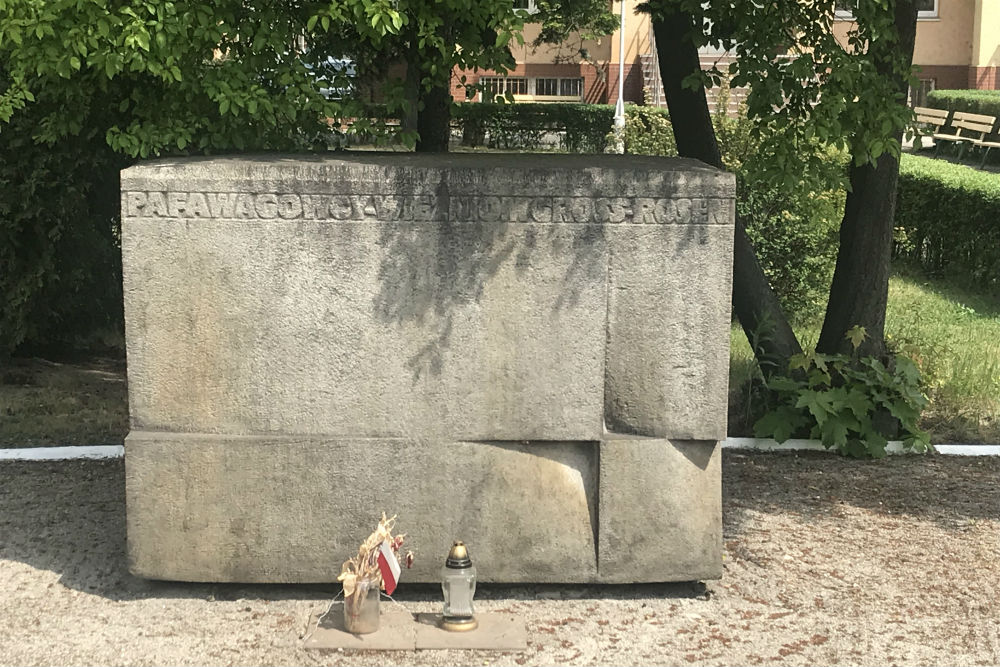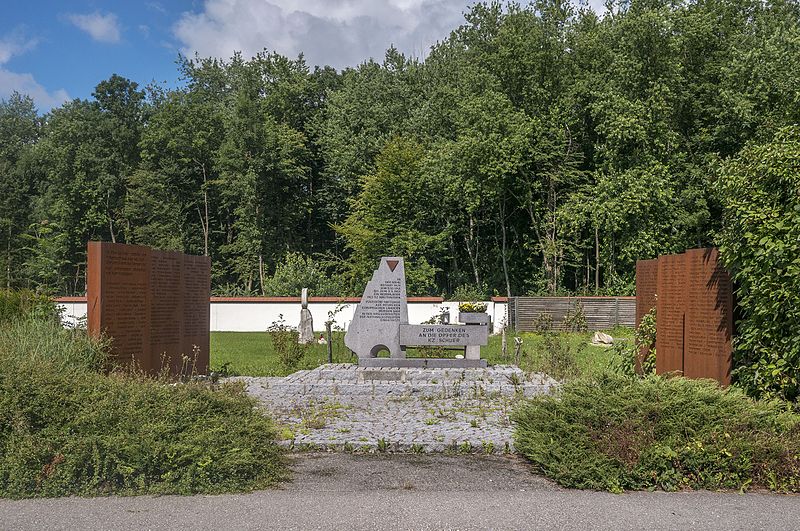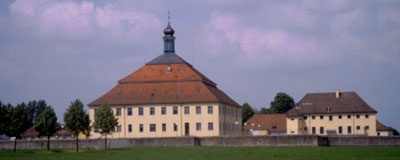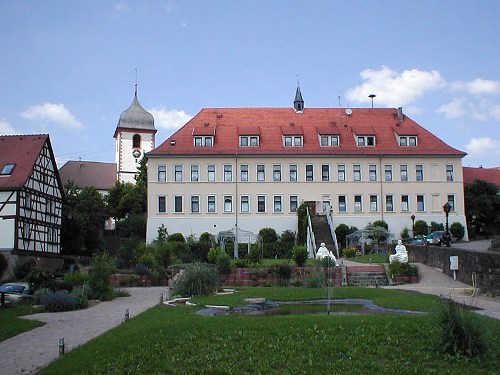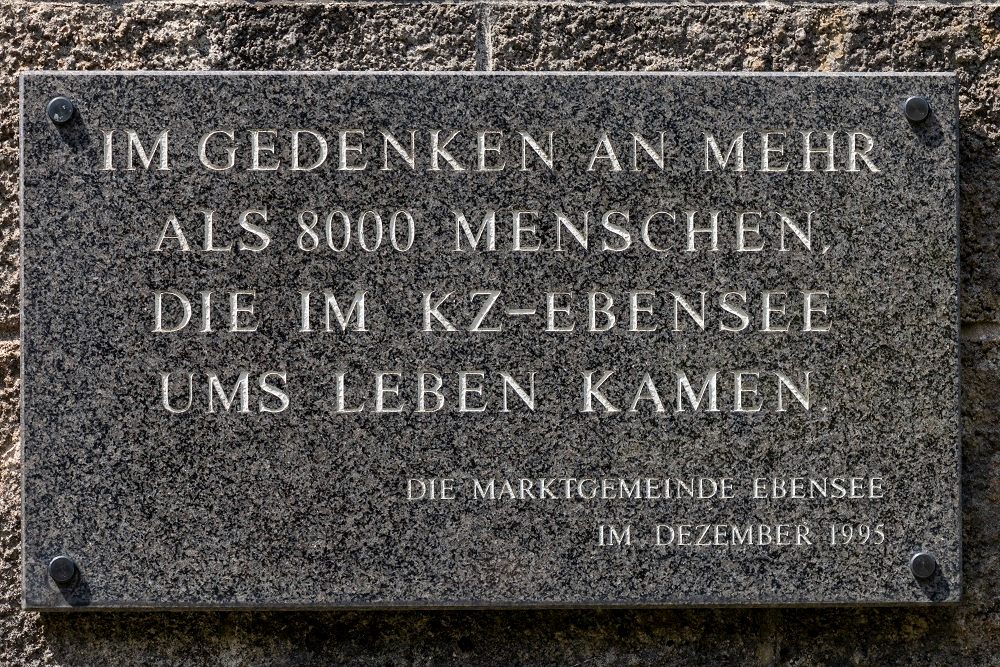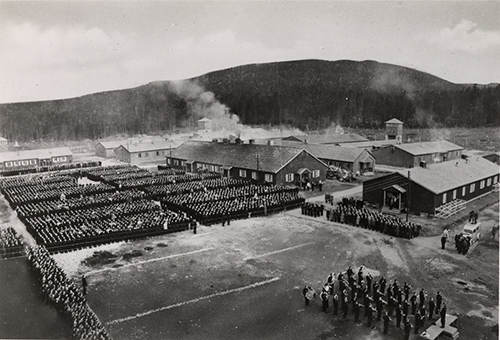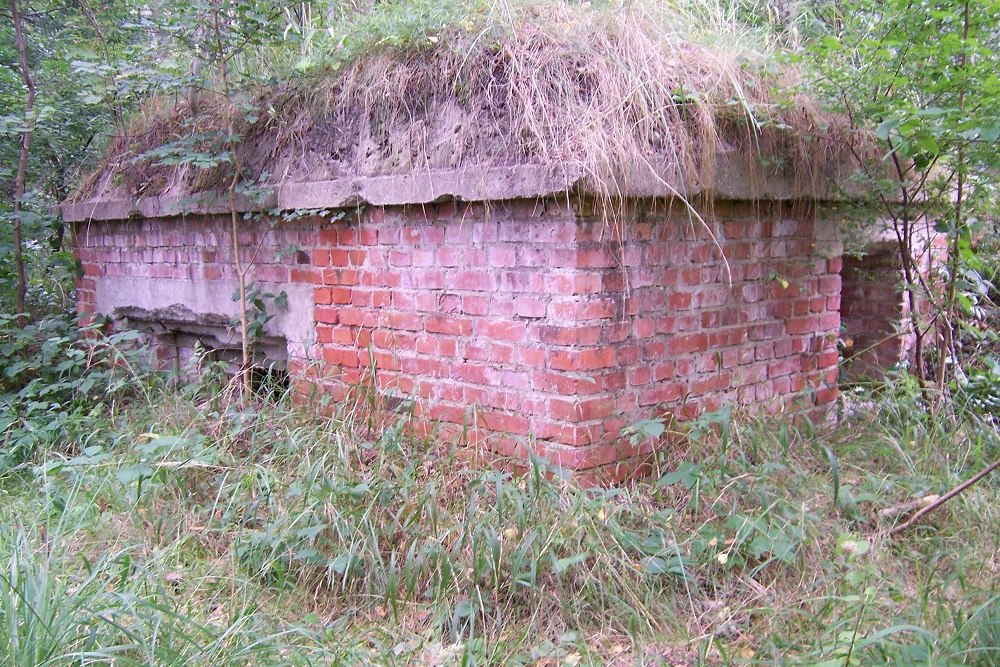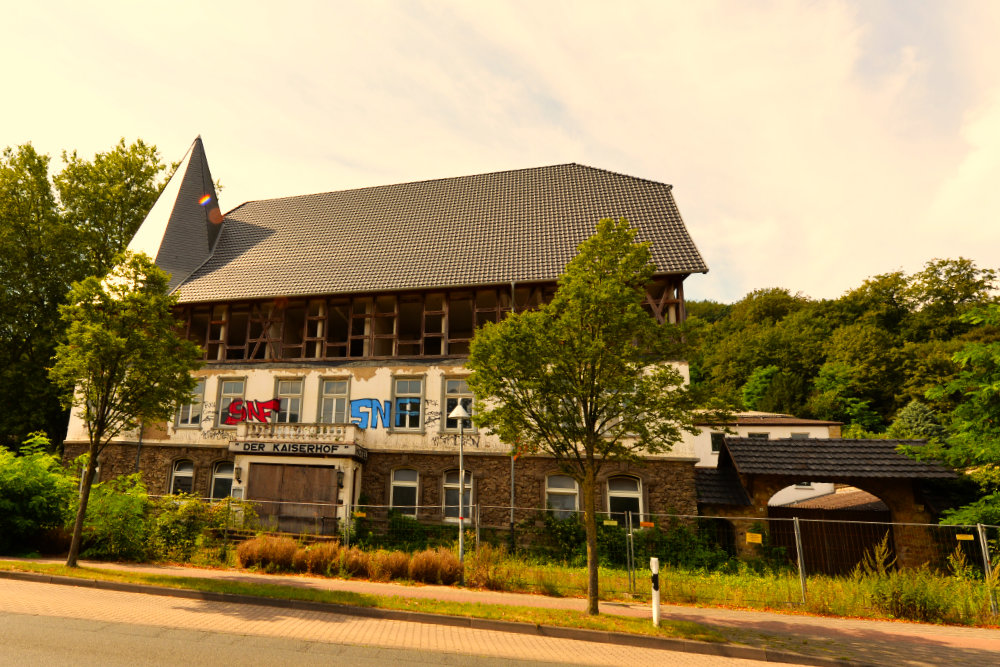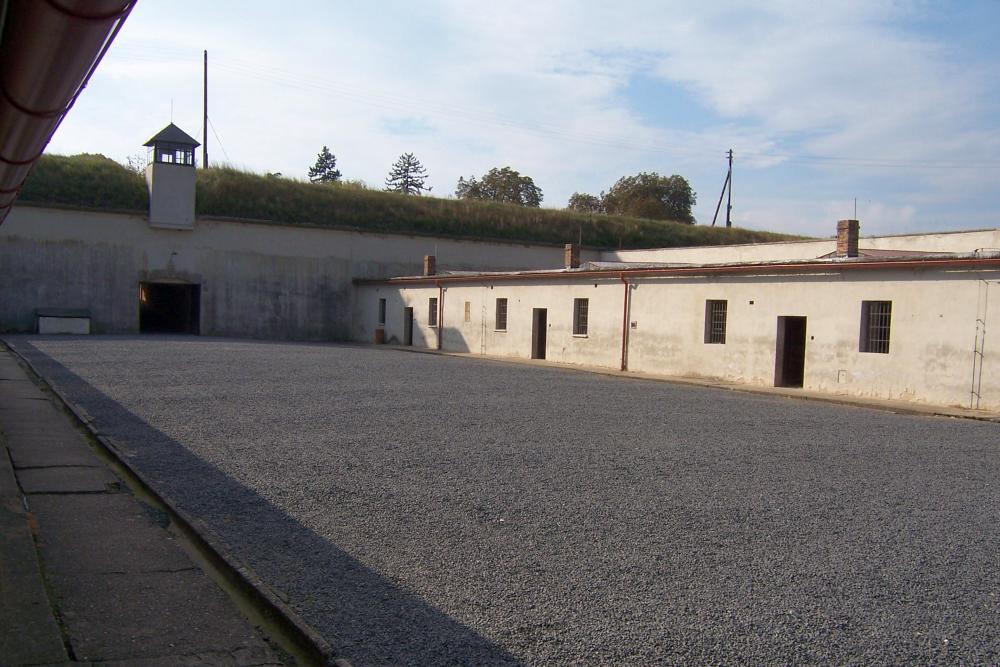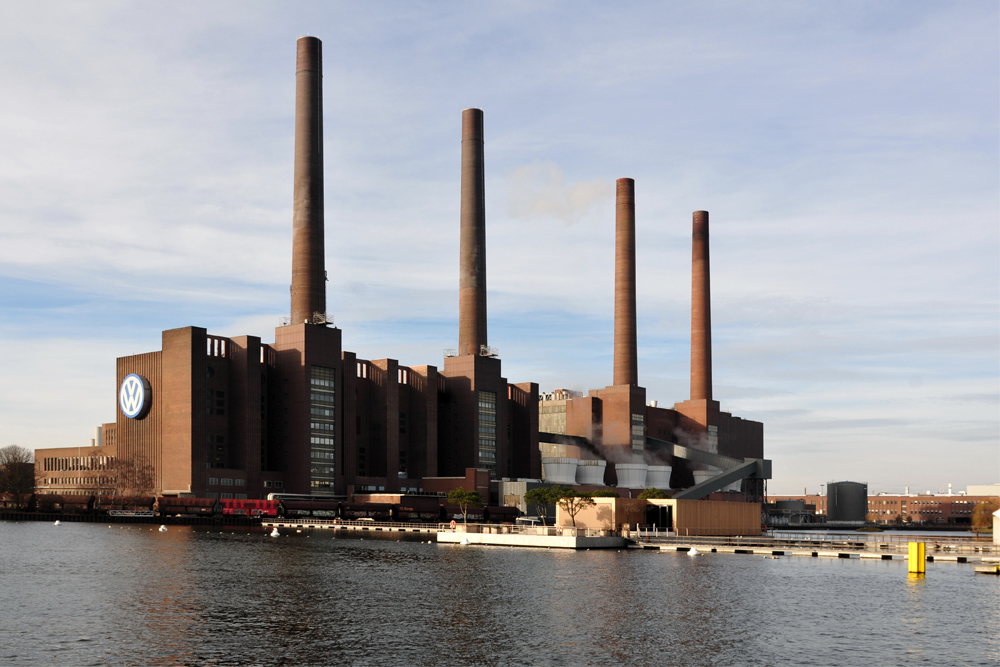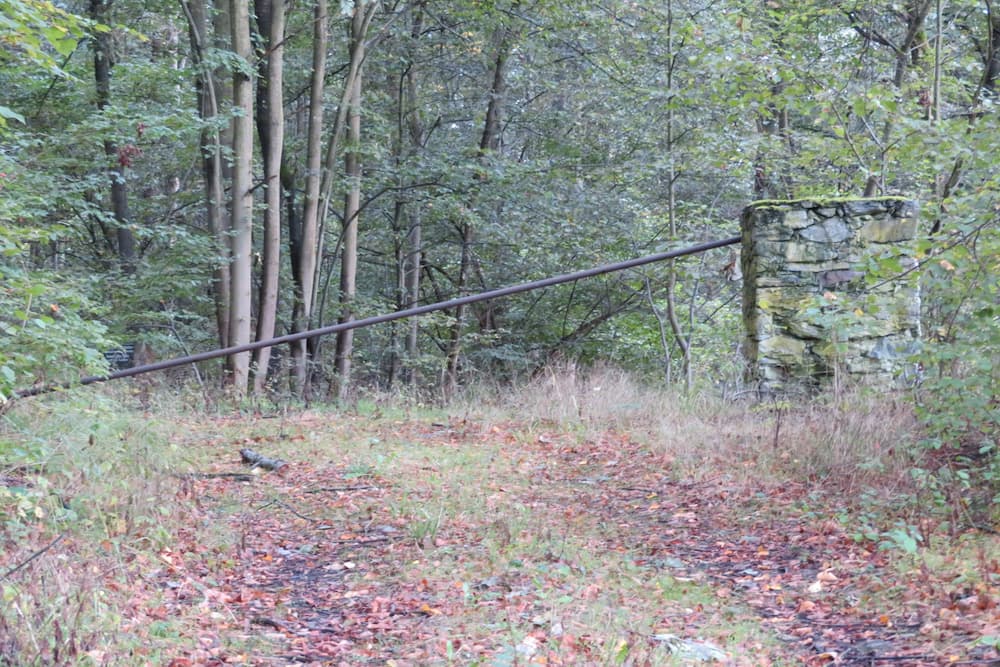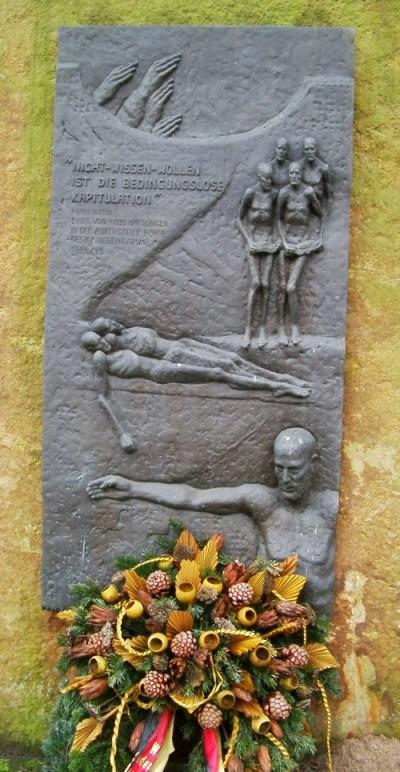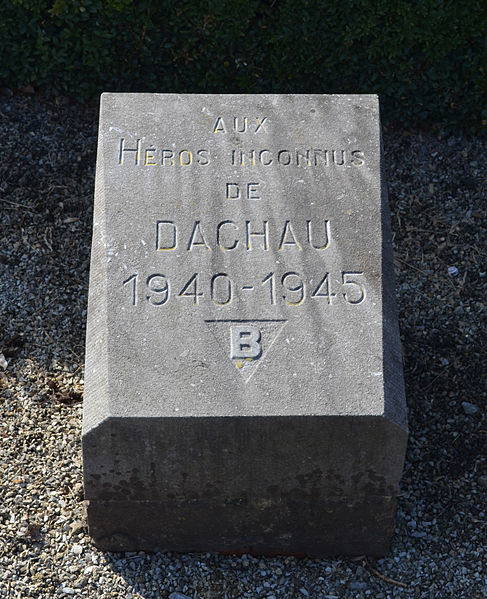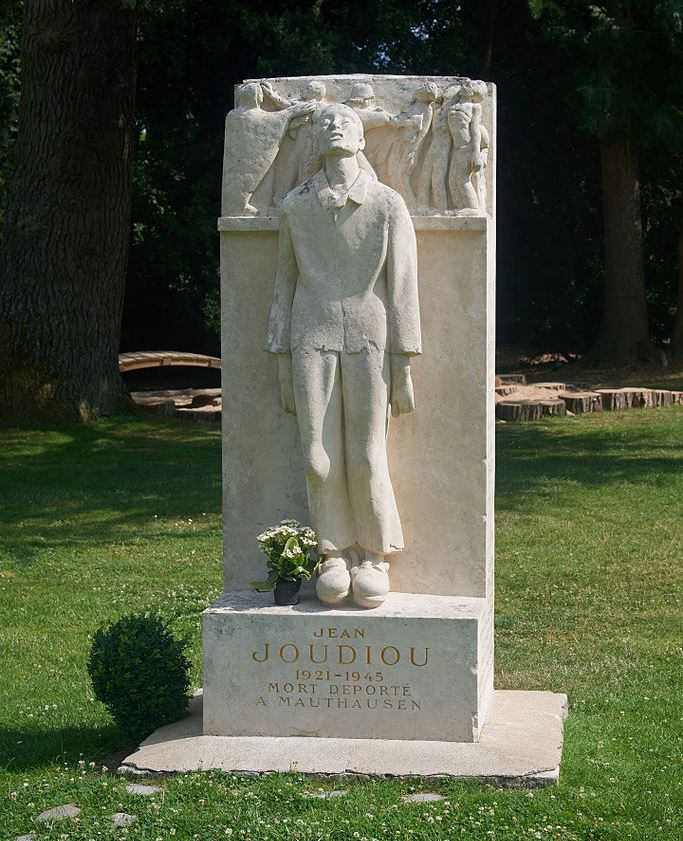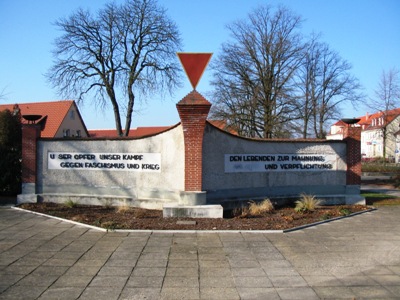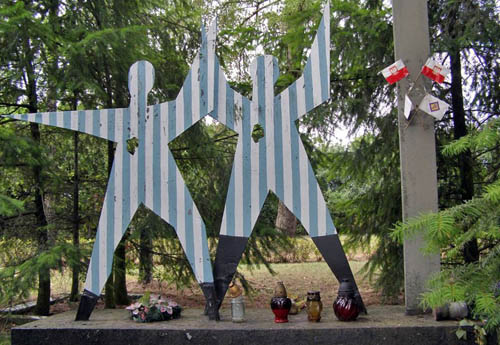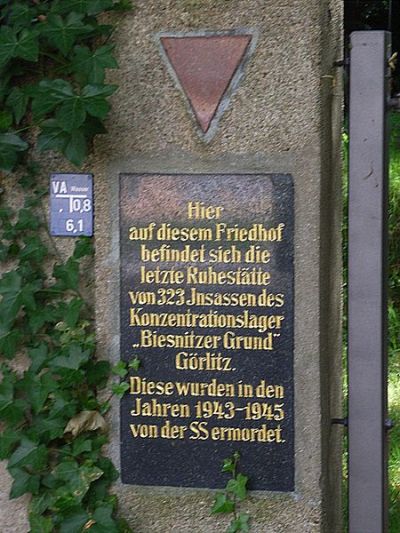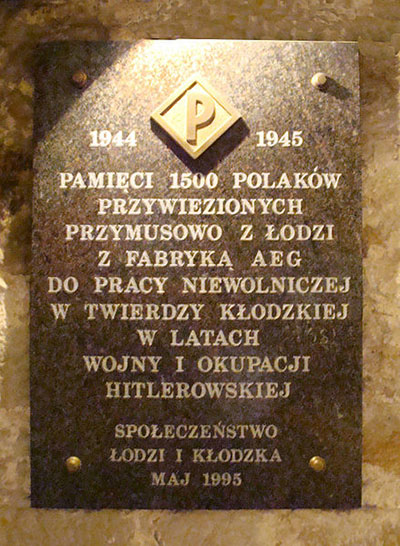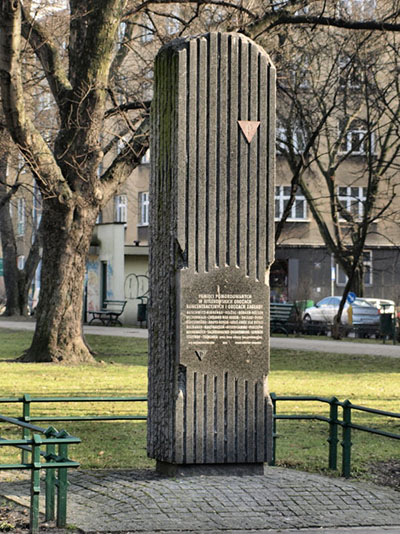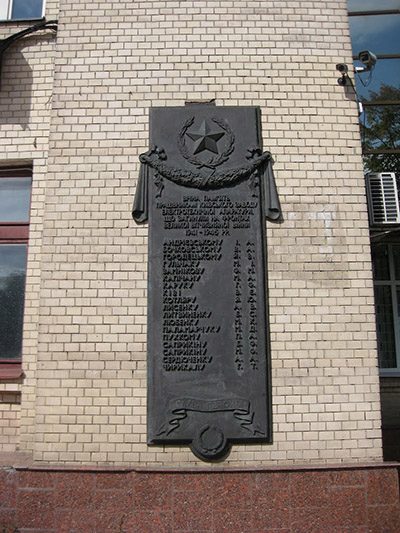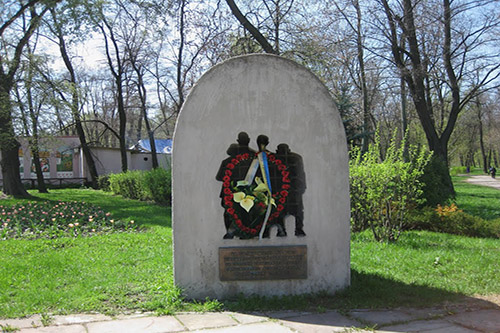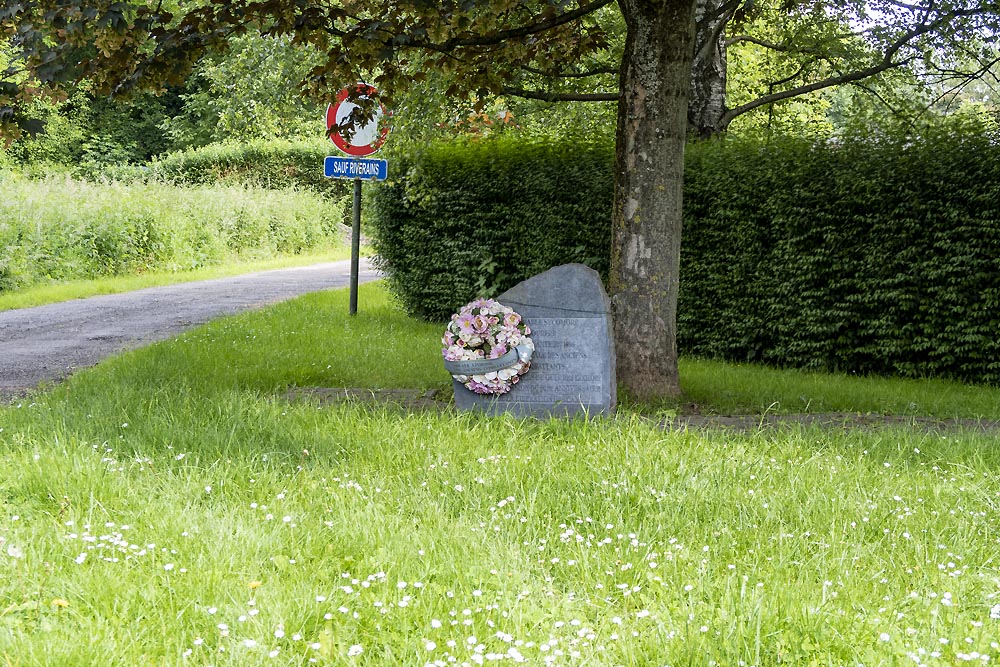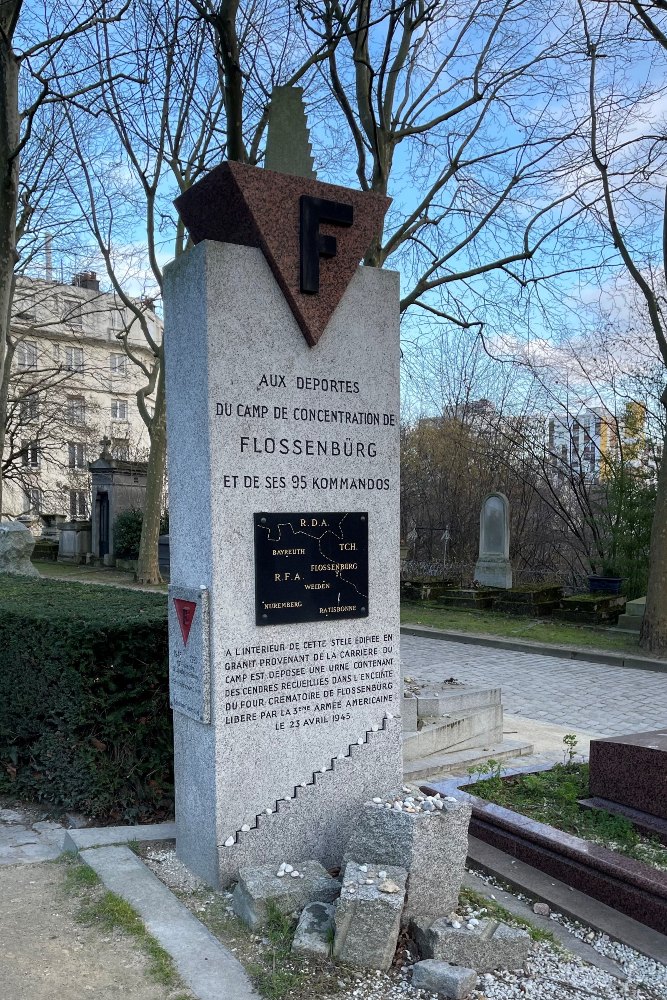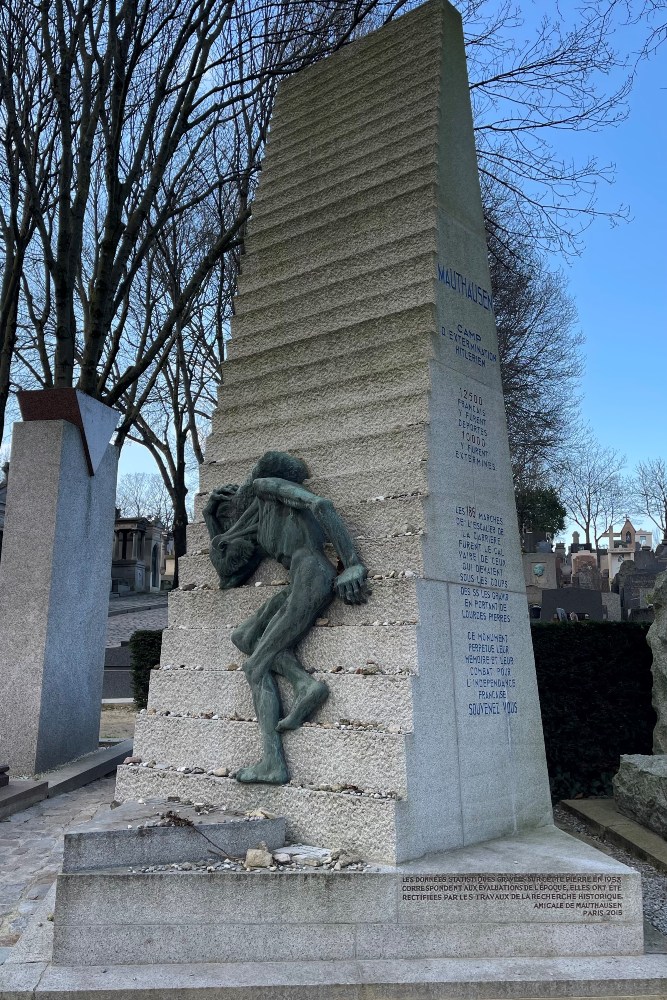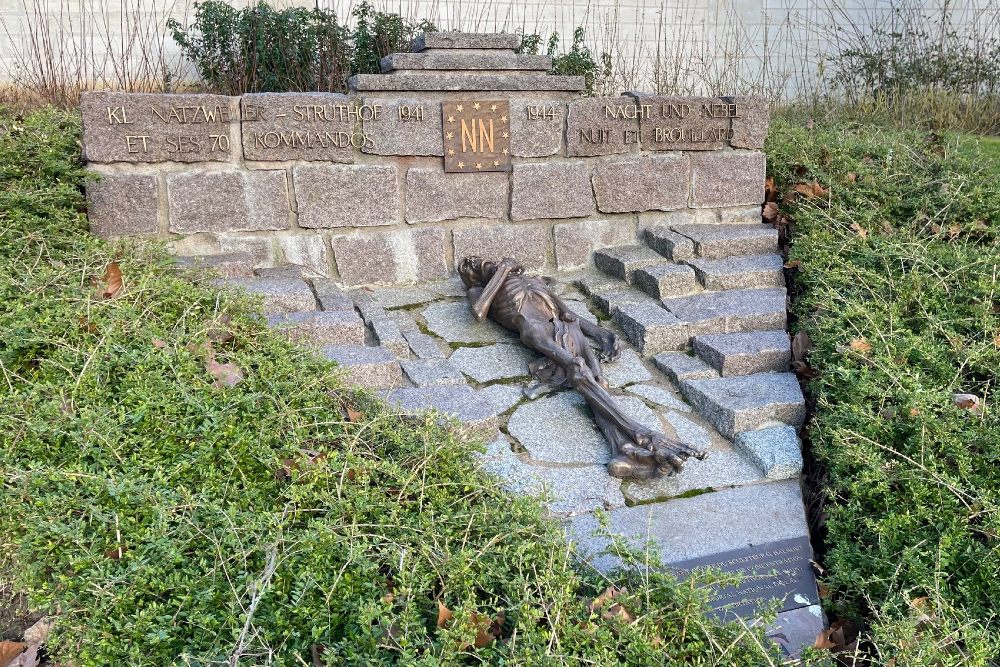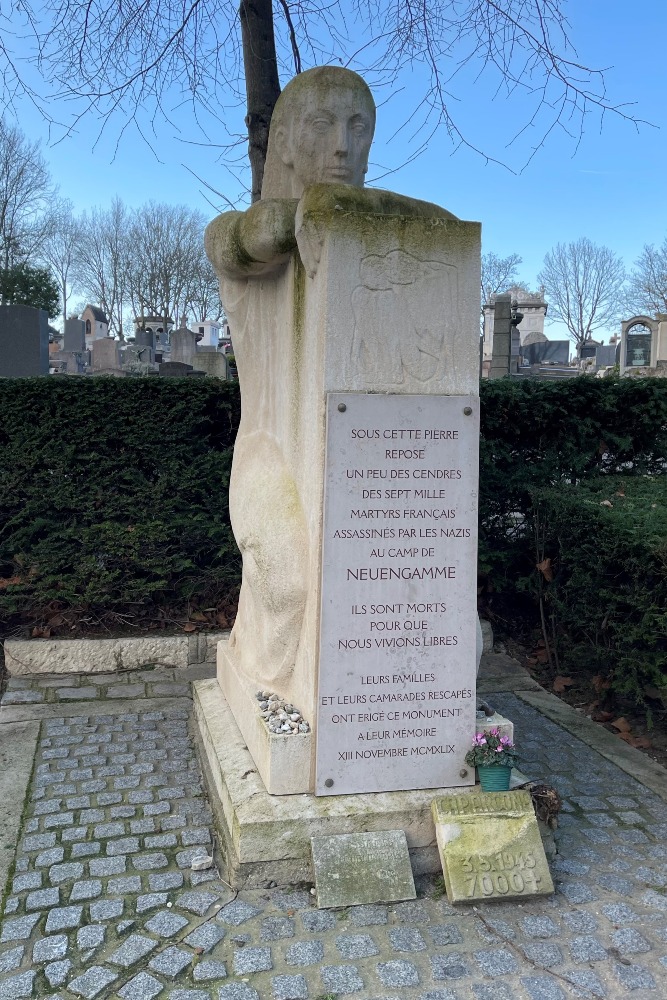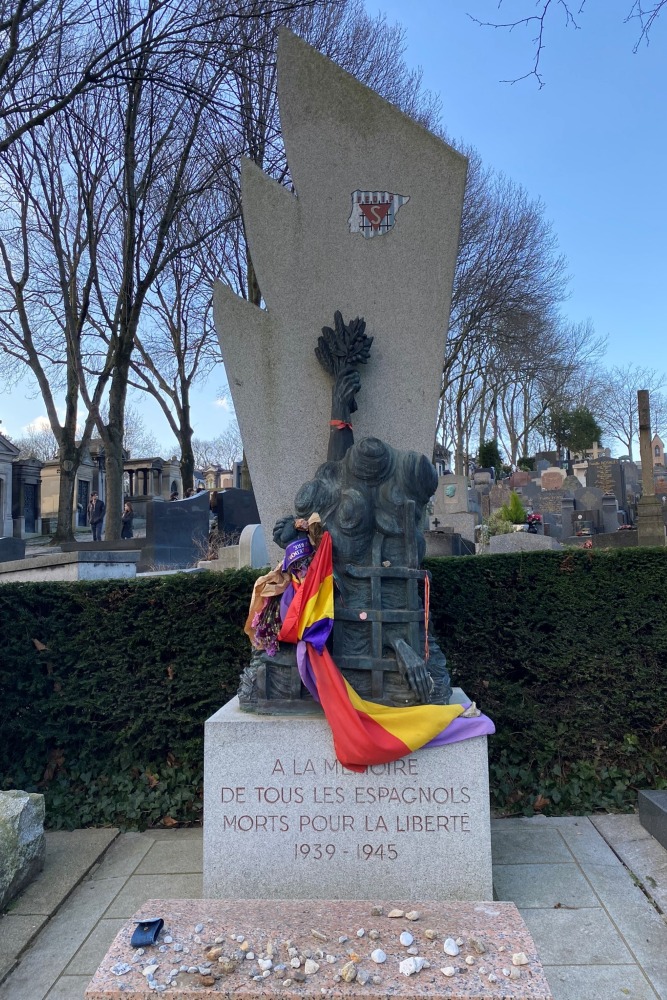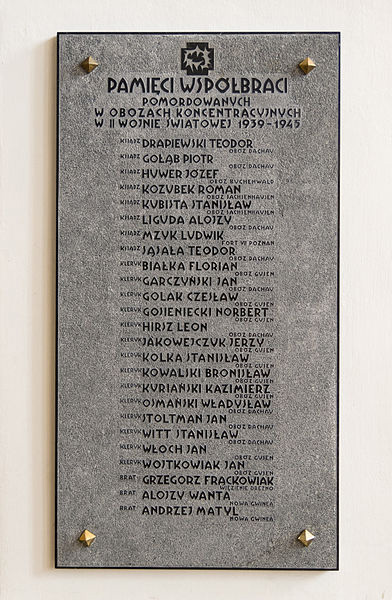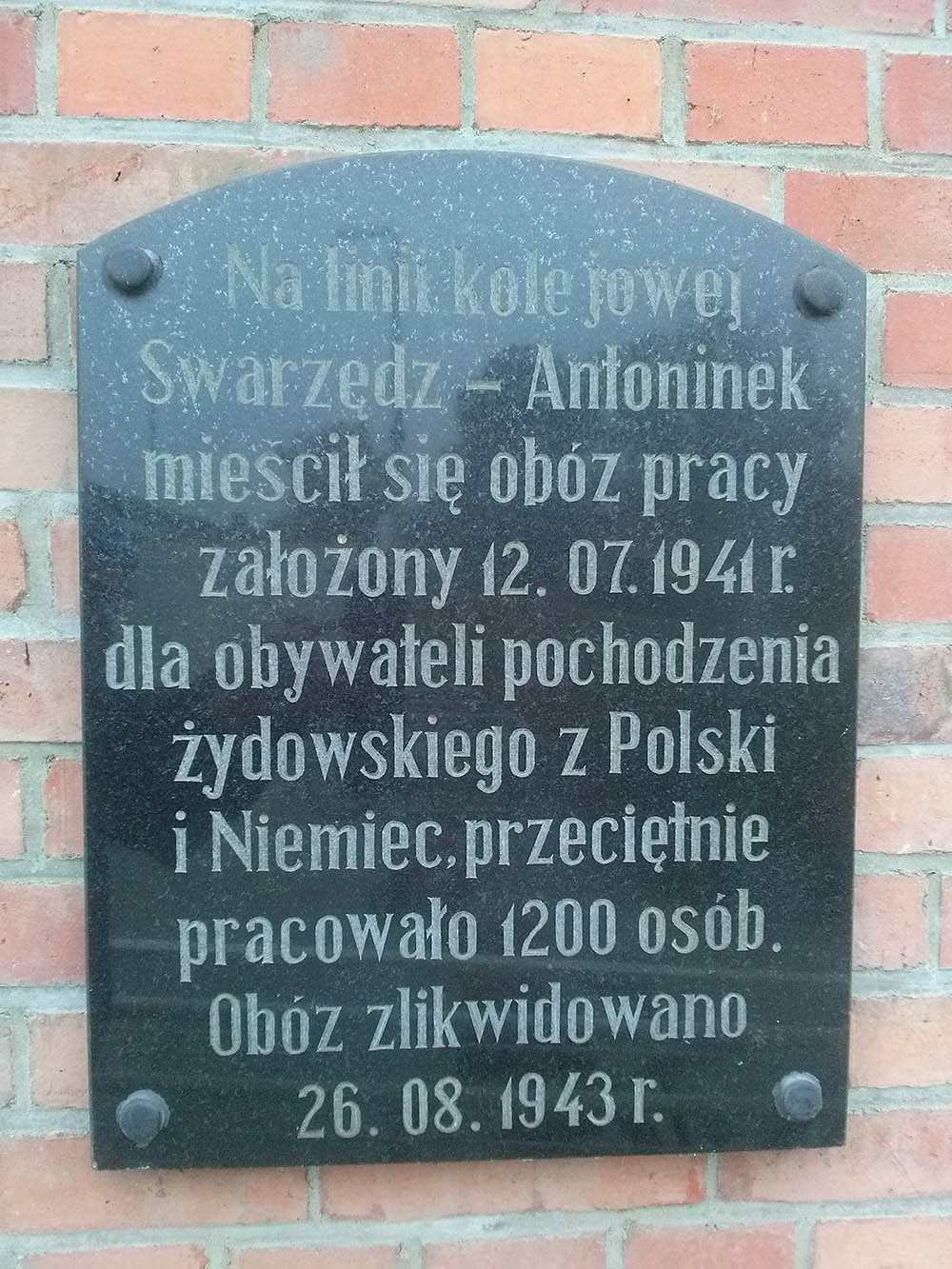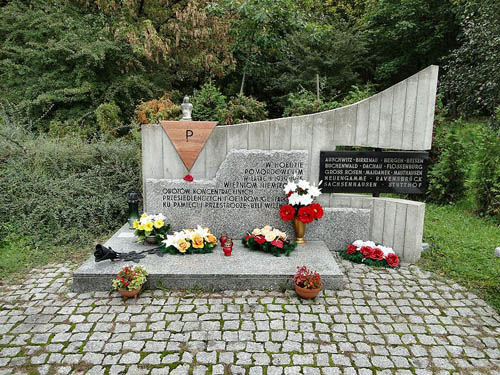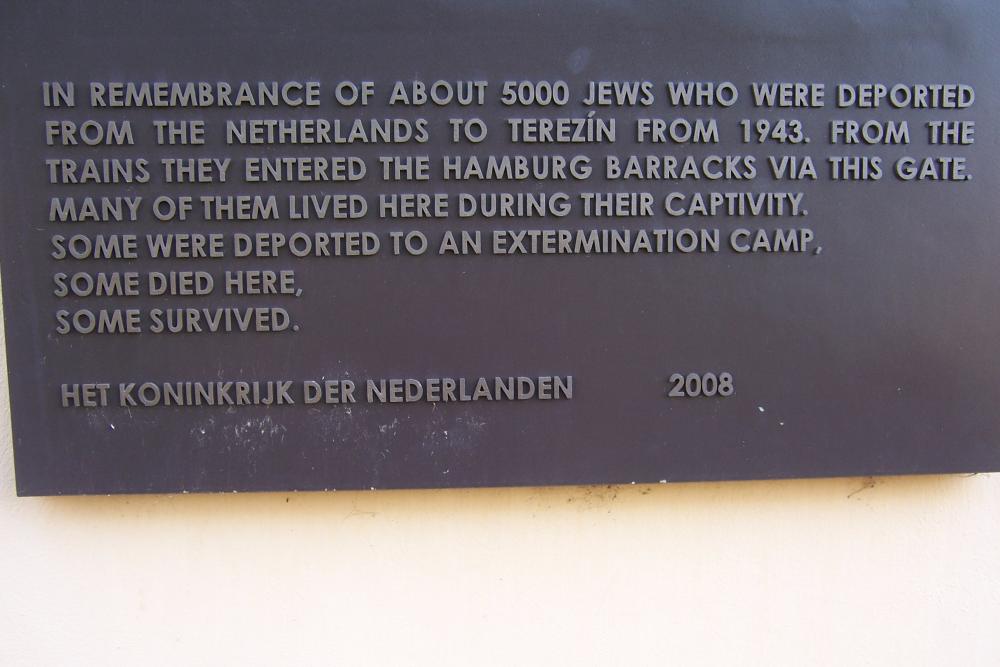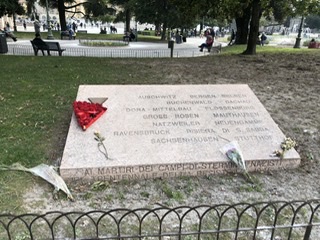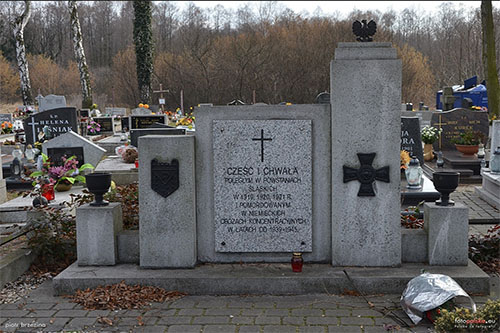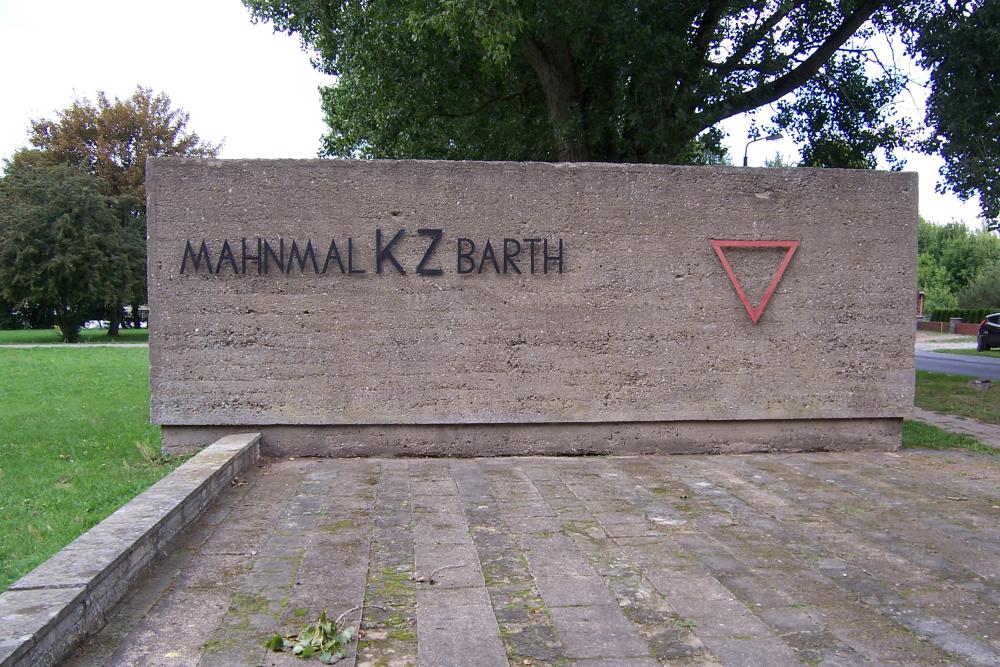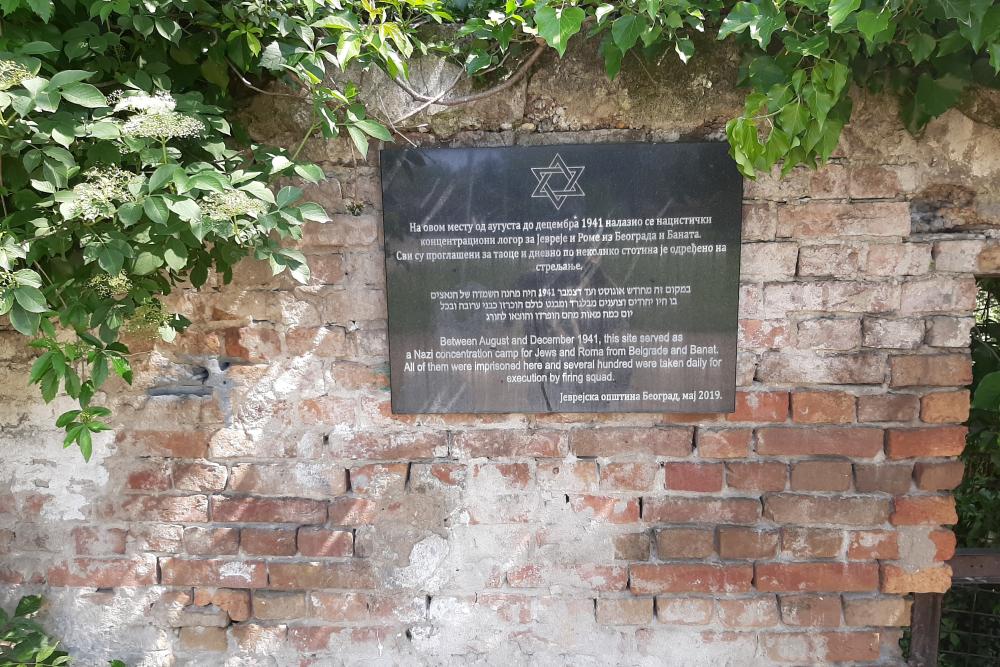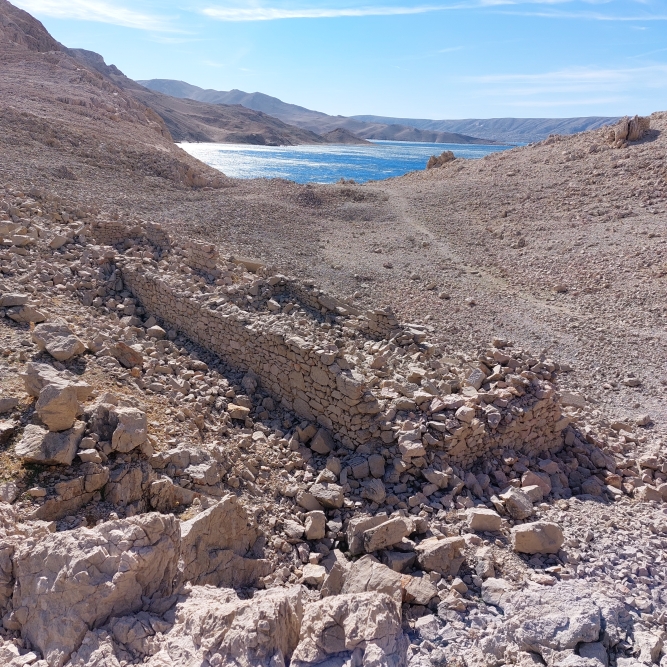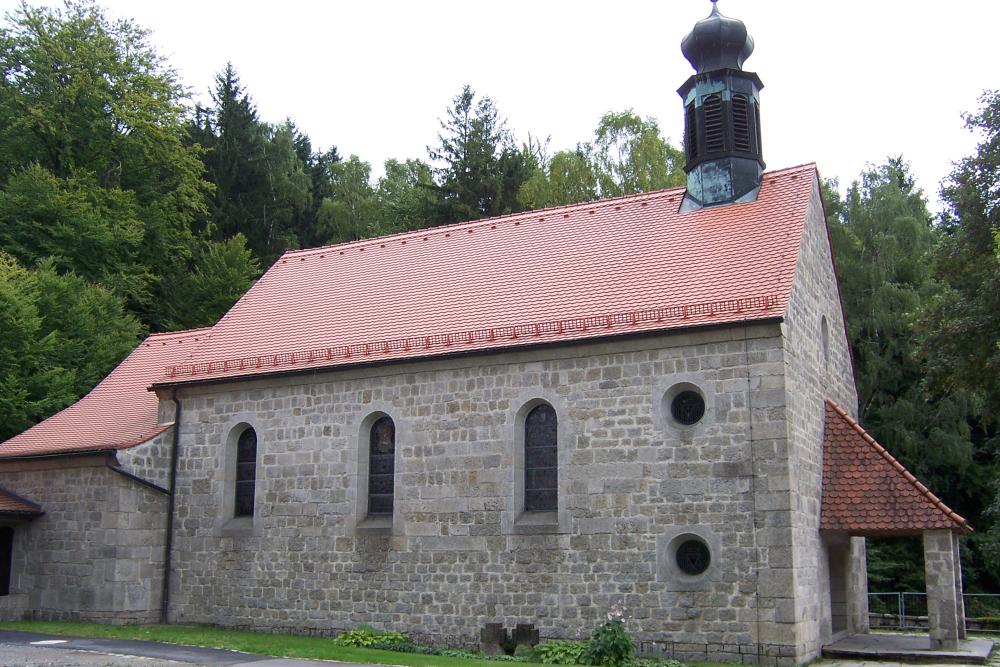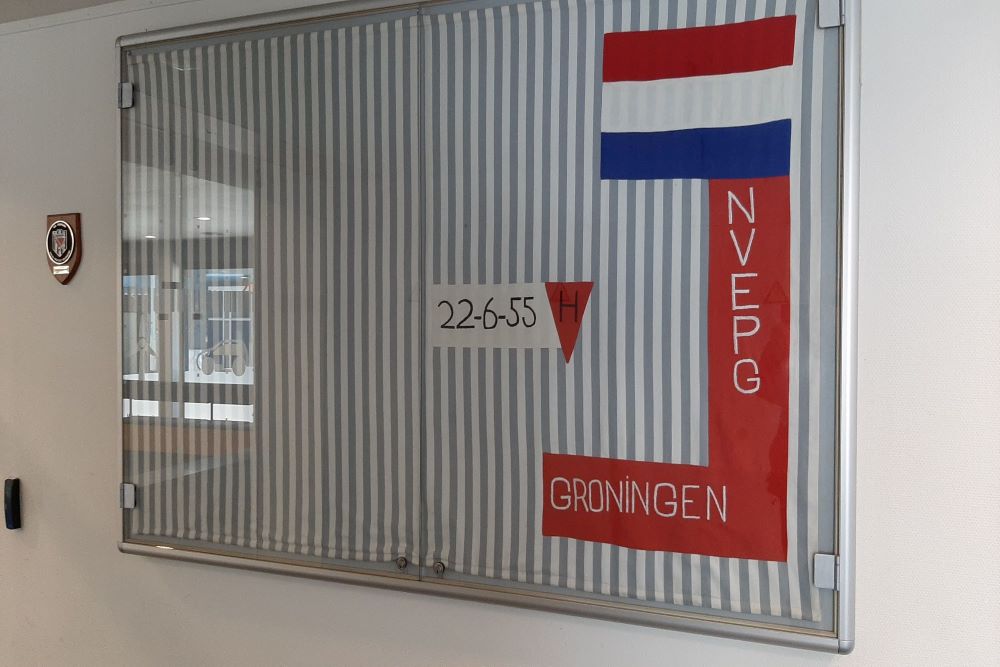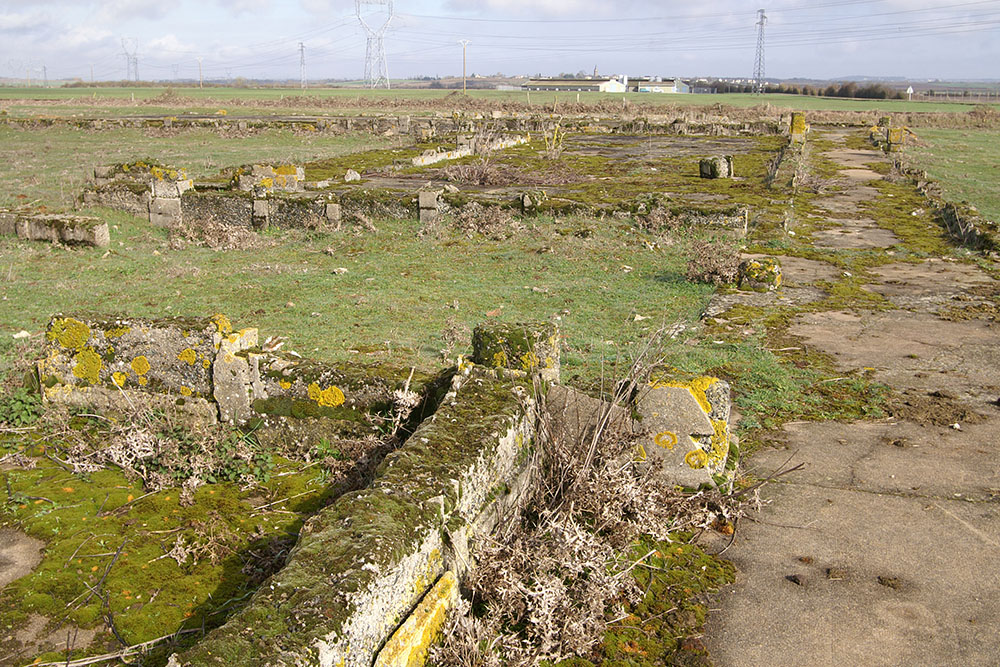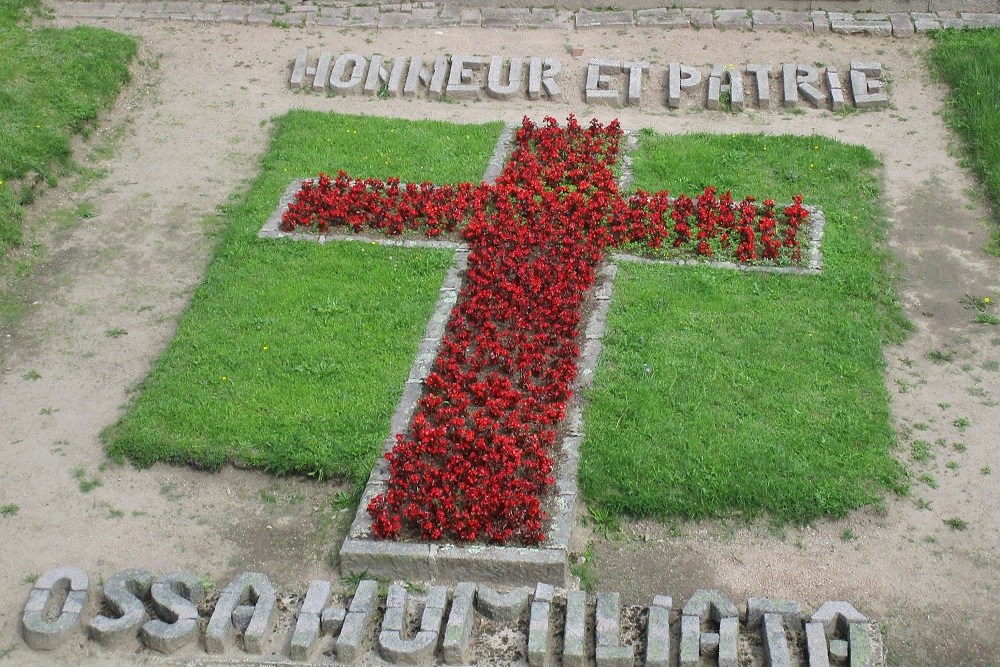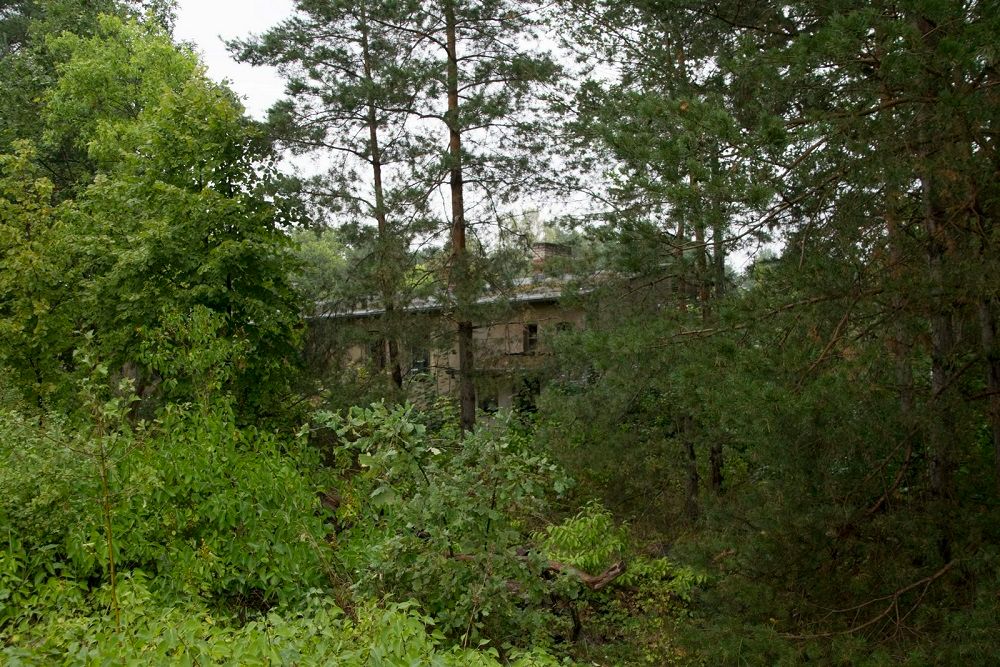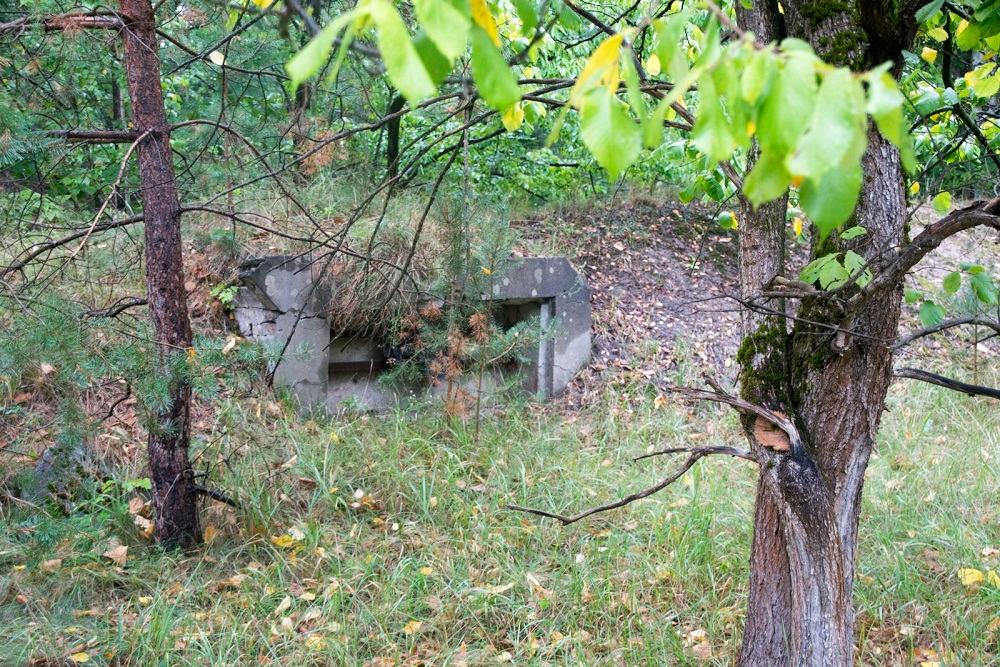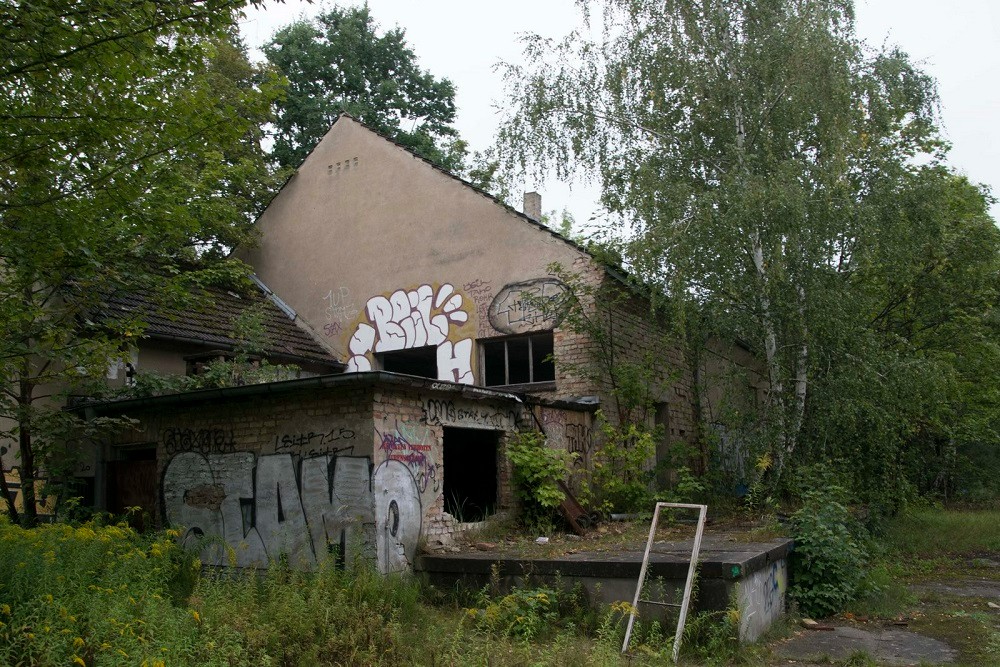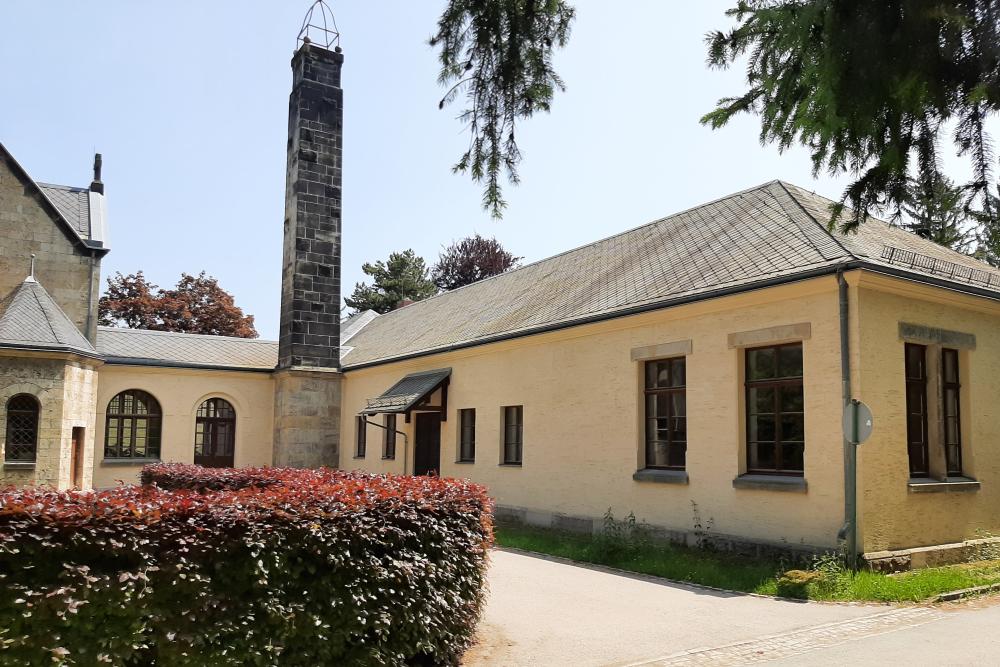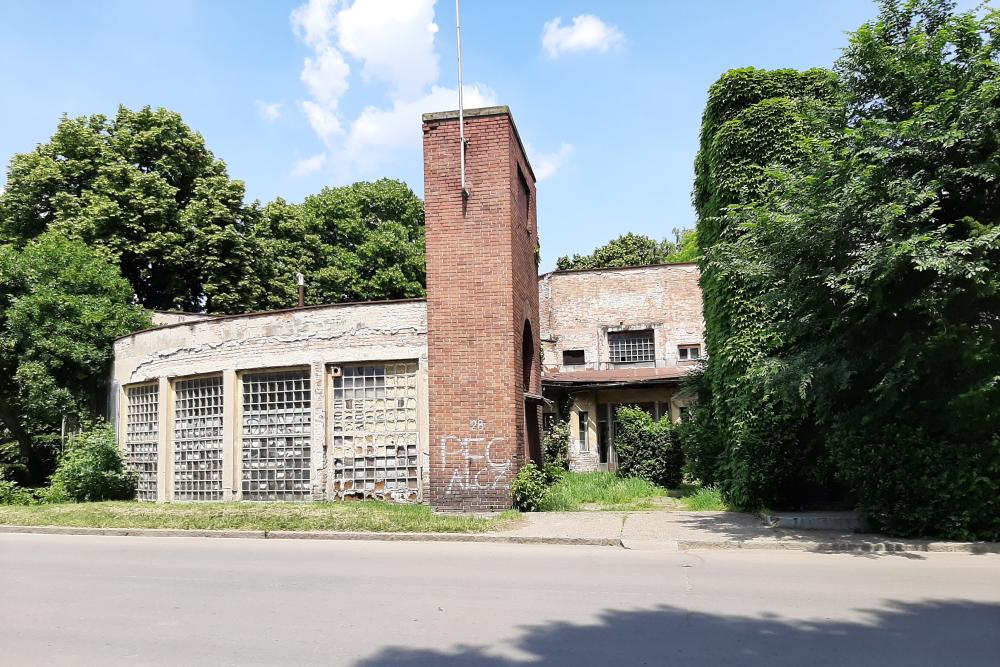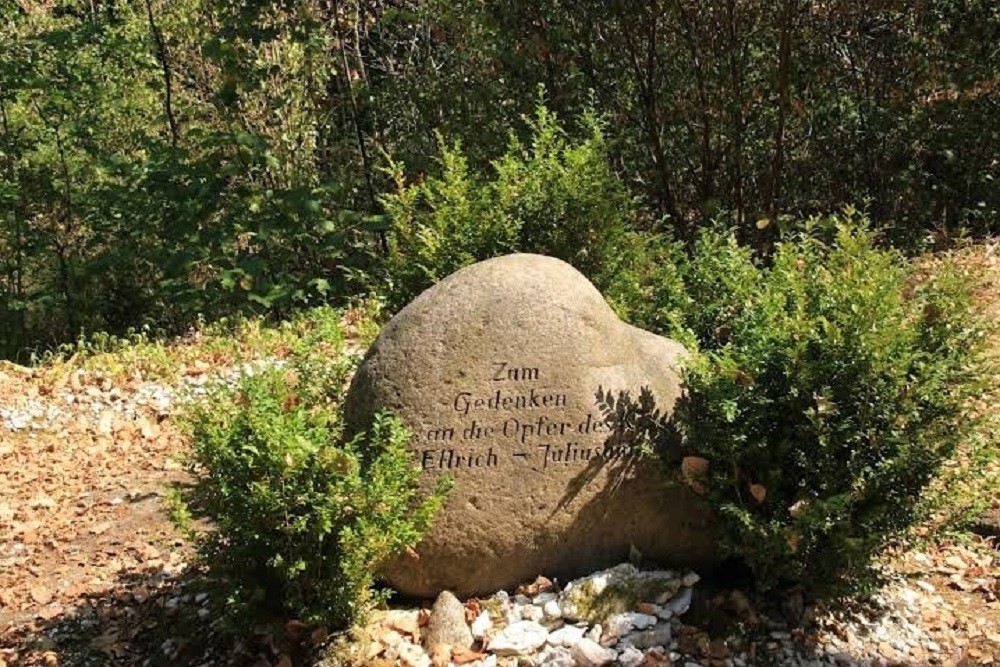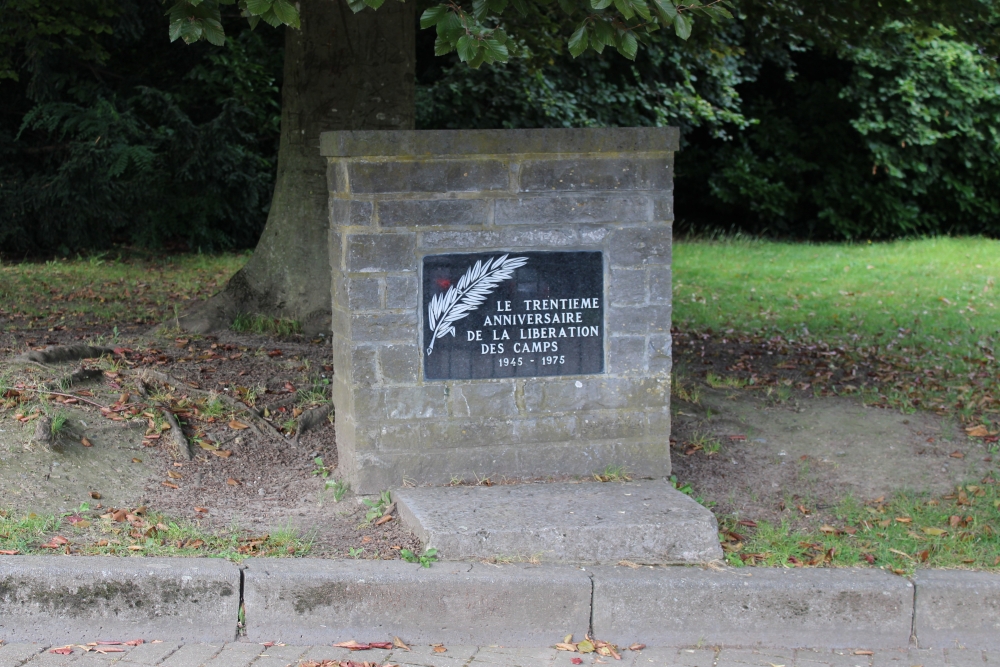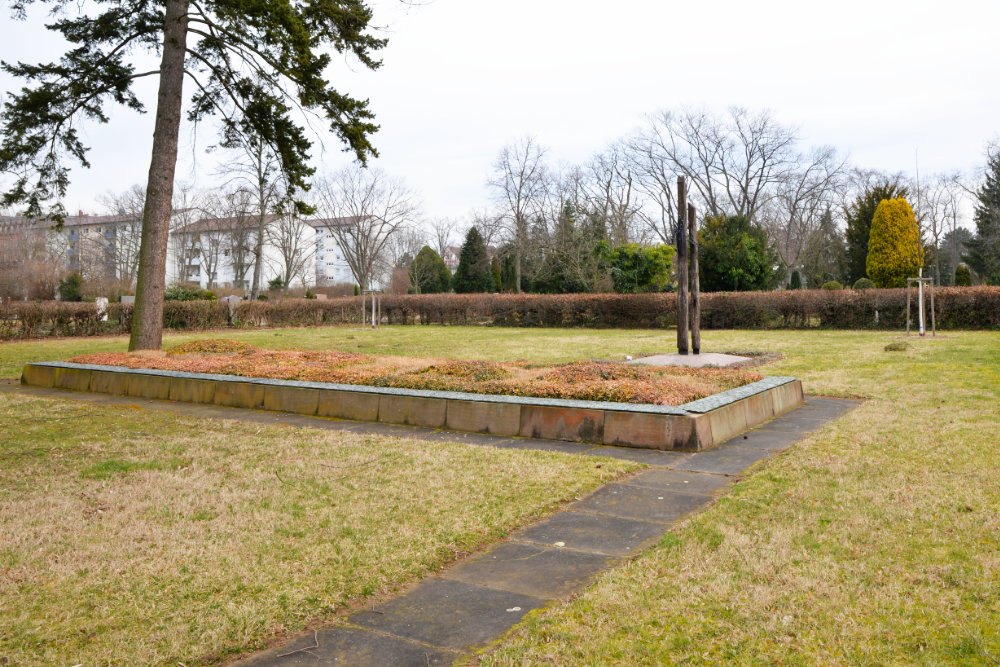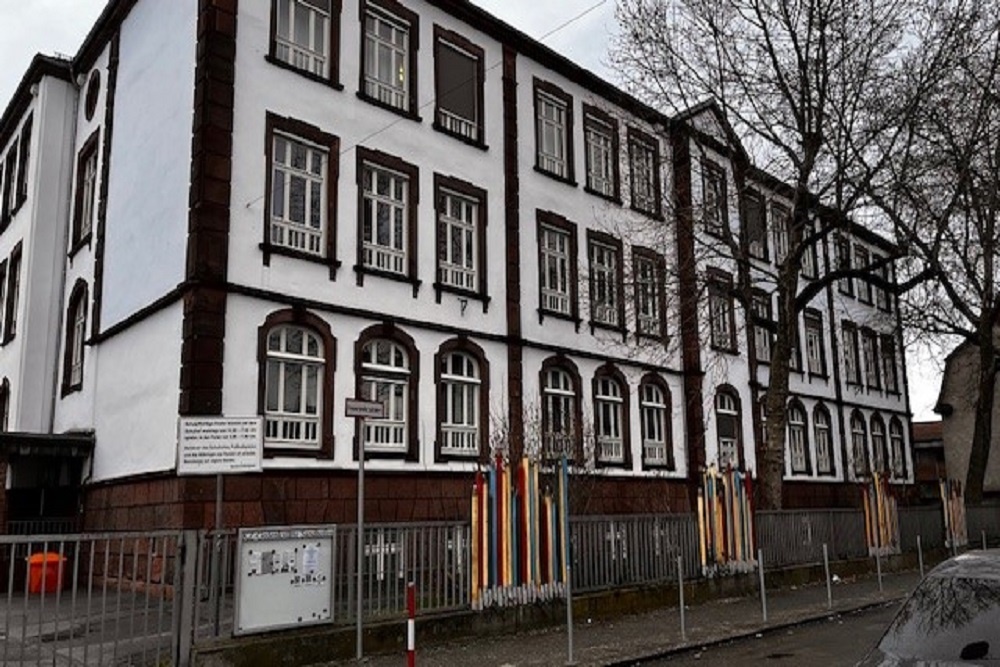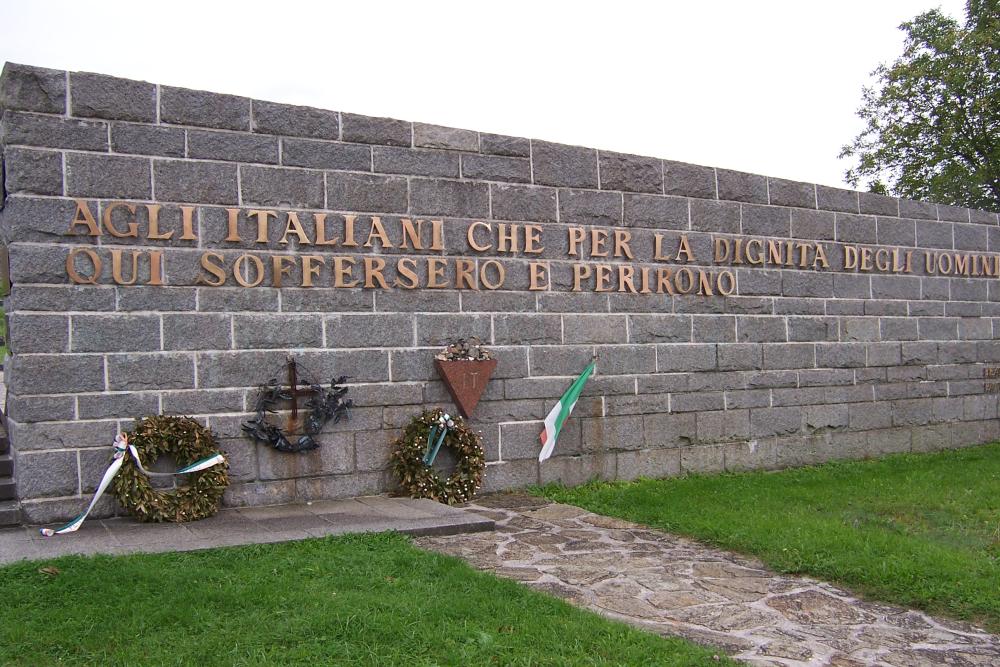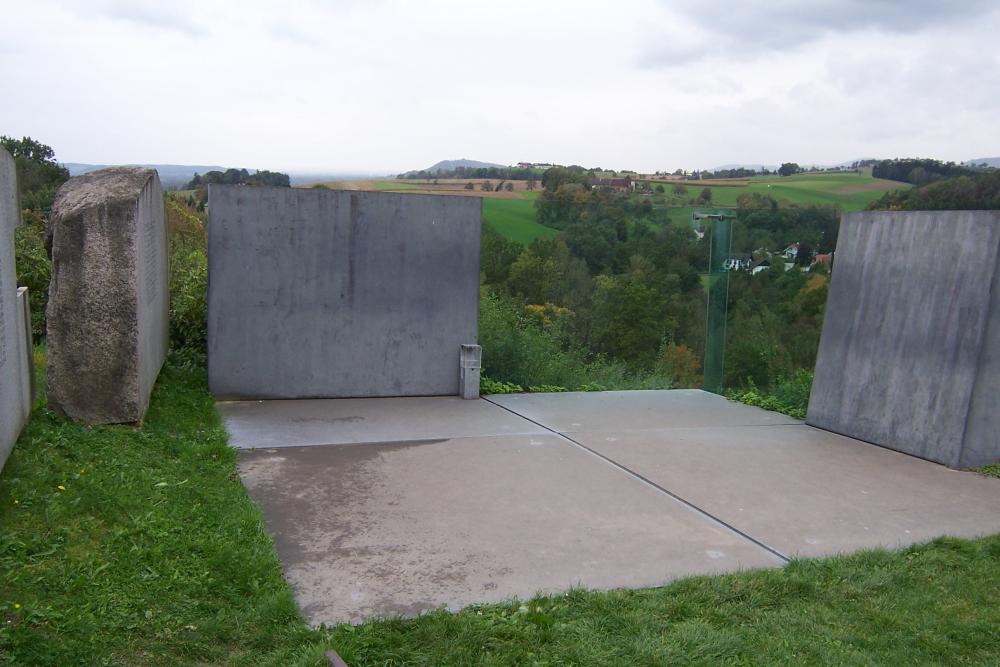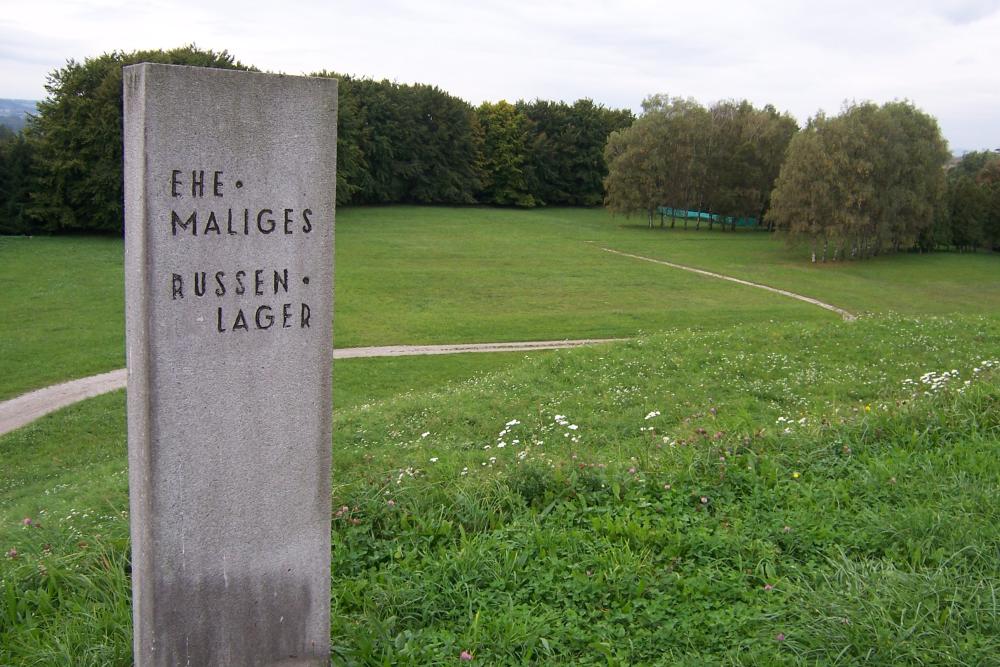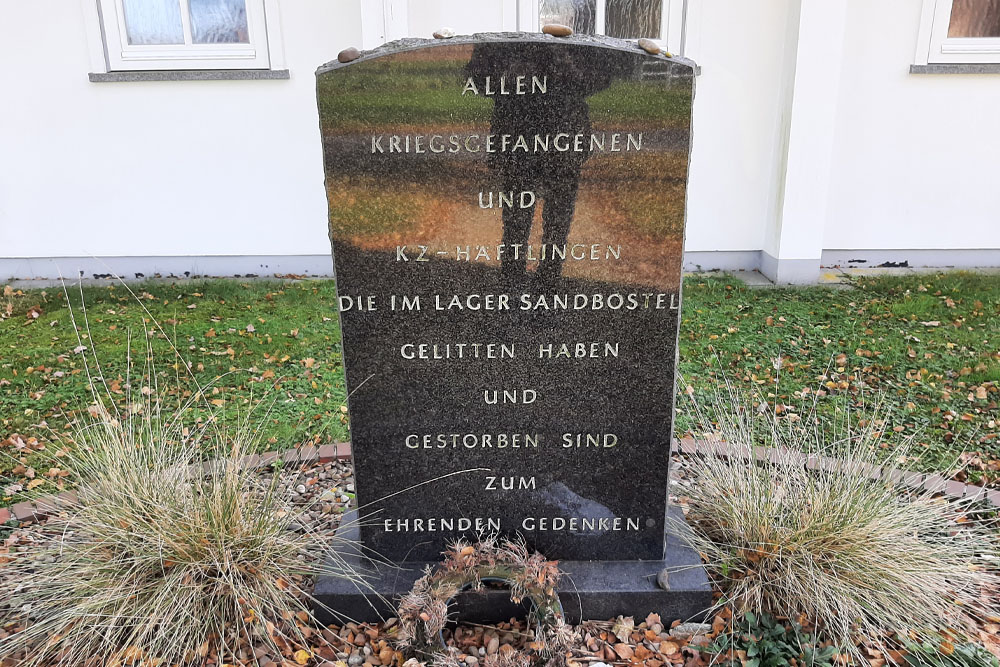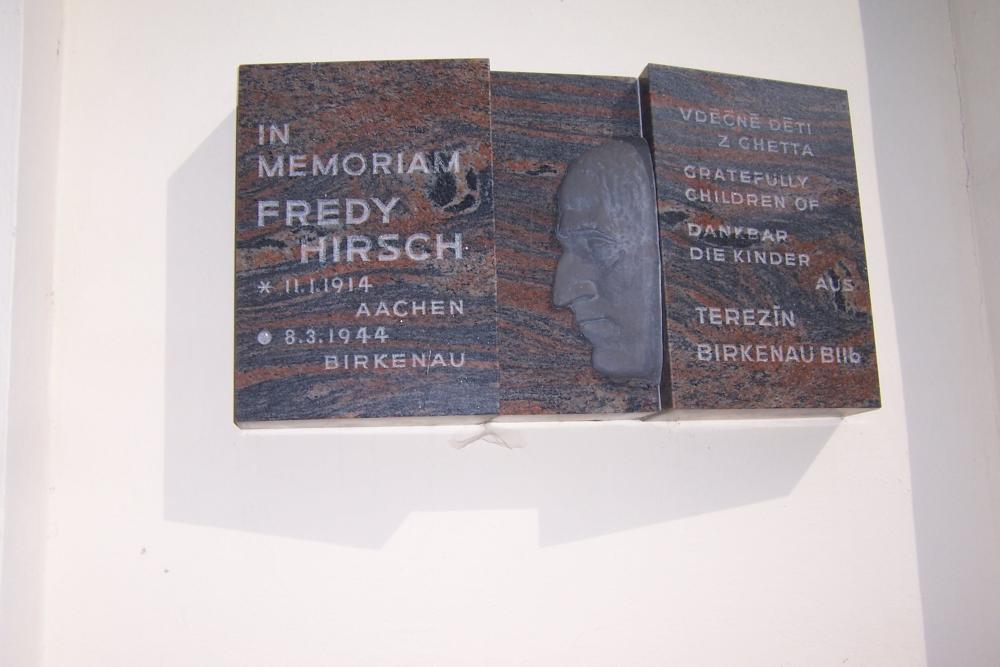Introduction
The concentration camps are closely intertwined in the history of the Third Reich. Various political, ideological and racial opponents of the Nazis were locked up in there in order to prevent them from thwarting Hitlers dream: a Reich that would last a thousand years. It is generally known that many people perished in the concentration camps and the numerous eyewitness accounts have made clear how inhuman the conditions were in those camps. Suppression, maltreatment and murder are frequently recurring elements in each account and for us, the concentration camp is synonymous to the regime of terror in the Third Reich.
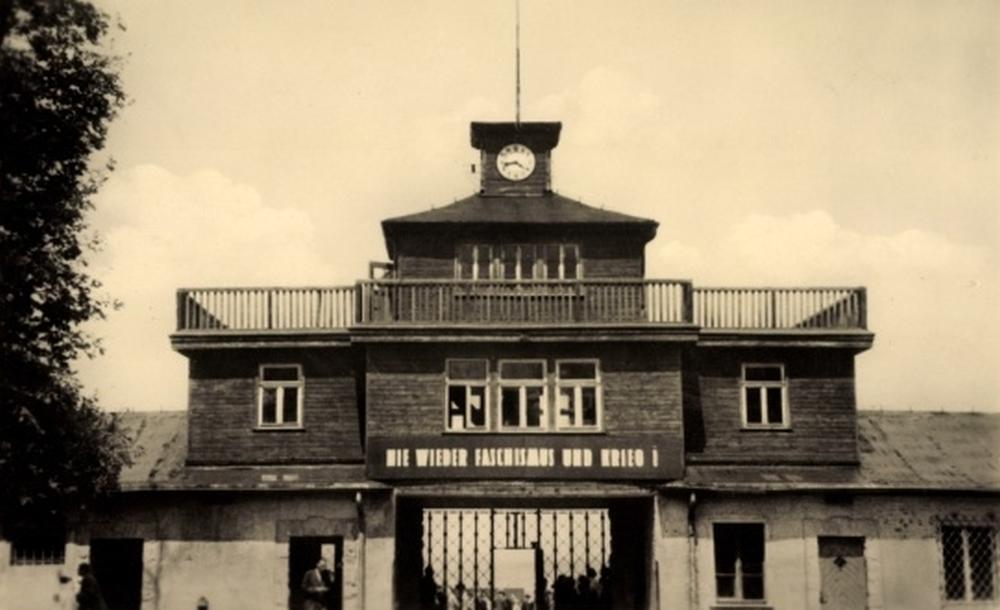
Entrance gate of KZ Buchenwald after the war. Above the gagte it reads: Nie wieder Faschismus und Krieg (Never again fascism and war). Source: Yad Vashem
But to what extent are we not only aware of the dismal living conditions and also of the origin of these camps? Do we know how these camps were ruled and organized and do we know the difference between the various kinds of camps which were established by the Nazis in the period between 1933 and 1945? What for instance is the difference between Camp Westerbork and Camp Dachau and how can we distinguish between concentration camps and extermination camps. These are a few important questions which will be dealt with in this article.
But above all, in this article the question is asked why the camps have so strongly influenced the history of the Third Reich. The Jewish-German philosopher Hannah Arendt (1906-1975), author of Eichmann in Jerusalem, a report on the banality of evil called the concentration camps indispensable for the existence of a totalitarian state. Such a state stands or falls, in her words, with the existence of concentration and extermination camps. She calls these camps the 'actual central institution of the totalitarian power and ruling apparatus'. In how far and why the system of concentration camps was one of the most important, or the most important pillar in the Third Reich will be the nucleus of this article. In addition, we create a clear picture of the organizational structure of the system of Nazi concentration camps.
Before digging into the concentration camps of Nazi-Germany, we will first formulate a definition of the term. In addition, a short overview will be given of the origin of the camps that were established in Germany and other countries some 30 years before Hitler took power. After having given this overview, the article will be continued by marking the various kinds of camps in Nazi-Germany. In the end, we will define which kind of camp in Germany was known as a concentration camp or Konzentrationslager and which other types can be distinguished.
Thereafter, we will subdivide the history of these camps into six periods which will be dealt with separately. The liberation of the camps will also be dealt with. Next, various subjects will be handled separately which tell more about the daily events within a camp and the way in which a camp was set up and organized. Furthermore, the various types of prisoners and the camp personnel will be dealt with. We end the article with an epilogue, returning to the question in how far the camps can be considered the 'actual central institution of the totalitarian power and ruling apparatus'.
Definitielijst
- concentration camp
- Closed camp where people are being held captive that are considered to be anti- social, enemies of the state, criminal or unwanted individuals. These groups mostly do not get a fair trial or are condemned to doing time in a camp.
- Nazi
- Abbreviation of a national socialist.
What is a concentration camp?
Talking about concentration camps, we usually mean the large number of camps, spread all across Europe, that were established by the Nazis in the years between 1933 and 1945. After the war, the concentration camps in Nazi-Germany showed the real face of the Third Reich to the world. Up until today, the term concentration camp is synonymous with the horror, the fear of death and the atrocities to which the inmates in the German camps were subjected to. Owing to the huge impact of the camps of Nazi-Germany on our view of history, it is often forgotten though that in the period before as well as after the war, other regimes used concentration camps to lock up their opponents in order to prevent them from thwarting the continuing existence of the ruling powers.
Despite the fact that goal, organization and structure of concentration camp of the various regimes are different, a definition of the term can be made. According to the Van Dale (a Dutch dictionary), a concentration camp is: 'a enclosed camp where people, deemed politically dangerous or convicts are held in captivity'. The Winkler Prins encyclopedia gives a slightly different definition: 'penal camps, established by certain states, in order to incarcerate dangerous or undesired people on a large scale'. The addition 'people deemed undesired' makes the definition more complete. Although for instance, adult Jews were considered politically dangerous by the Nazis, this didn't apply to their wives and children – who were locked up in the concentration camps as well. They were racially undesired, just like homosexuals, tramps and prostitutes were considered socially undesired.
And yet, the definition isn't quite complete, because all concentration camps from history share a very important issue. Characteristic for this form of imprisonment of course is the lack of a sentence by an independent judge. Neither the punishable actions nor the duration of the incarceration were rarely recorded or not at all and were subject to the arbitrariness of the judicial power. Consequently, anybody could be arrested and imprisoned in a concentration camp and partly because of this, the camps became a very efficient instrument of power. Finally, in this article we define a concentration camp as follows:
Concentration camp: an enclosed camp in which persons considered dangerous, convicts or other socially undesired people can be kept in captivity without a fair trial
Consequently, this definition isn't limited to the camps of Nazi-Germany but applies to various other concentration camps in different locations and differing periods as well. Although it seems plausible that the Nazis invented the concentration camps, outside Germany this kind of imprisonment existed over 30 years before Hitler came to power.
Definitielijst
- concentration camp
- Closed camp where people are being held captive that are considered to be anti- social, enemies of the state, criminal or unwanted individuals. These groups mostly do not get a fair trial or are condemned to doing time in a camp.
- Jews
- Middle Eastern people with own religion that lived in Palestine. They distinguished themselves by their strong monotheism and the strict observance of the Law and tradition. During World War 2 the Jewish people were ruthlessly persecuted and annihilated by the German Nazis. . An estimated 6,000,000 Jews were exterminated.
- Nazi
- Abbreviation of a national socialist.
Origin of the concentration camps
The history of the concentration camps begins on two locations, during two separate conflicts at the end of the 19th century. In 1895, on the island of Cuba, a civil revolt erupted against the Spanish administration. The rulers took strong measures to prevent guerilla activities against their authority. Concentration camps were established in which inmates were treated brutally. The horrific situation in these camps were noticed by the American press which published it extensively. The Americans decide to intervene against the nationalist Spanish regime and so, the concentration camps partly triggered the Spanish-American war of 1898.
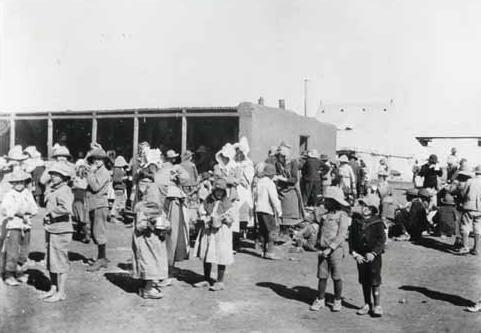
Women and children in a concentration camp during the Boer war in South-Africa. Source: National Army Museum
One year later, farmers from the Transvaal Republic and Oranje Vrystaat (now South-Africa) revolted against the British occupation. This war would enter the history books as the Second Boer War and lasted from 1899 to 1902. In these Boer republics, the British established concentration camps as well in which women, children, the elderly and other non-combatants were interned to prevent them from supporting the fighting Boers with food, information and such. The British camps were poorly ruled and hygienic conditions were bad. As a result of the dismal living conditions and the cruel treatment some 1,600 men, over 4,000 women and more than 22,000 children perished. This disgraceful state of affairs triggered severe indignation across the world and even in Great-Britain itself.
From 1918 onwards, the Communist regime led by Vladimir I. Lenin established the concentration camps in the Soviet Union. During the reign of Joseph V. Stalin these camps were developed further into an important instrument of power. In 1930, the Gulag was founded, short for 'Main directory for correction, labor camp and colonies'. It was part of the NKVD, the secret service of the Soviet Union and managed a large number of concentration camps, mainly in Siberia. The name Gulag is usually applied to such camps. Stalin used the camps to lock up people who had to be removed from society for whatever reason. Political opponents, religious, enemies of the class – for instance the nobility – and criminals ended up in the Gulags in large numbers. For instance, the later Marshal of the Soviet Union, Konstantin K. Rokossovsky was interned in a Gulag until 1940. Certain peoples who stood in the way of Russification, like Baltics and West-Ukrainians were imprisoned in these camps as well. After World War Two, many prisoners of war were deported to the Gulags. Only after the demise of Stalin in 1953, the Soviet camp system was gradually downgraded. The Gulag was officially disbanded in 1960 and the camps still existing were transferred to the KGB, the Committee for State Security, founded in 1953
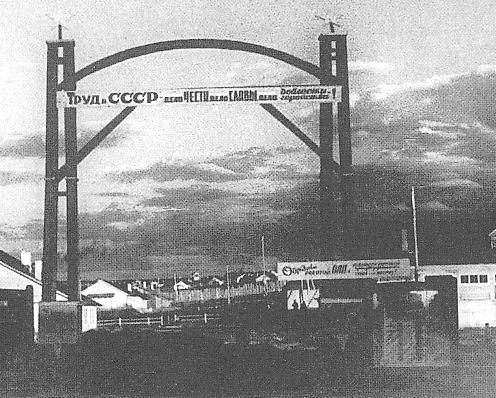
Entrance of a Gulag in the 50s. over the gate the slogan: Labor in the Soviet Union is a question of honor, glory, pride and courage.
The camps of the regimes mentioned above hold a much smaller position in history than the concentration camps of Nazi-Germany. A comparison between the ways camps were managed and for what reason in different countries in different periods is outside the scope of this article however. Now that we have a general view about the meaning and origin of concentration camps in general, we can focus on the history of concentration camps in Nazi-Germany.
Definitielijst
- Gulag
- Officially the name for the governmental organisation responsible for the management of labour camps in the Soviet Union but later used to designate the camps themselves. The camps were situated in the northern areas of the Soviet Union and in Siberia. They were a major factor in the suppression of the Soviet people. Prisoners were mostly (real or perceived) enemies of the communist regime. From 1929 until Stalin’s death in 1953 18 million Soviet citizens were deported to the Gulag. It is estimated that 4.5 million of them died there.
- Marshal
- Highest military rank, Army commander.
- Nazi
- Abbreviation of a national socialist.
- Soviet Union
- Soviet Russia, alternative name for the USSR.
The various kinds of camps in Nazi-Germany
In the period between 1933 and 1945 numerous camps were established in Europe by the Nazis, their allies and their collaborators. A study by Gudrun Schwarz: Die nationalsozialistische Lager, (Campus Verlag, Frankfurt a.M. 1990 p 221) revealed a total of 10,005 German camps, including ghettoes but it is likely this number is considerably higher. According to this research, 941 camps within the borders of todays Poland, were destined for Jews. Along the Austrian border, another 230 camps were established for Hungarian Jews. Apart from these labor camps, 22 main concentration camps (Stammlager) were founded with a total of 1,202 satellite camps (Außenlager or Nebenlager). It is important to know that this number of 10,005 included extremeley large complexes such as Auschwitz but small labor camps for possibly 10 inmates as well.
Although in daily life, we usually call all camps concentration camps for the sake of simplicity, from a historical viewpoint this isn't quite correct. Apart from concentration camps, the Nazis also founded buffer camps (Auffangslager), transit camps (Durchgangslager) and forced labor camps (Zwangsarbeitslager). The image and set up of these camps didn't differ much from the concentration camps but their goals as well as their organizational, managerial and operational structure were subject to large and small differences. Concentration camps should also not be mistaken for prisoner of war camps and prisons of the Gestapo and the German police. In short: in order to focus further on camps in this article, we must distinguish between the various kinds of (concentration) camps of Nazi-Germany and we must define the notion 'concentration camp' still further.
In order to reach a constructive and historically correct delimitation, we will use the organizational; structure of the Nazis. This is very complex and in the period 1933-1945 it was subject to considerable alterations, yet it is useful to designate the various kinds of camps. Within this organizational structure, the Schutzstaffel or SS played a prominent role. This organization was originally founded as a protective unit for Adolf Hitler and other high-ranking Nazis but evolved into an all-encompassing security and police organization which was also responsible for the (concentration) camps. This organization was headed by Reichsführer-SS Heinrich Himmler. Important elements of the SS were the Gestapo and the Kriminalpolizei or Kripo, together making up the Sicherheitspolizei or Sipo and the Sicherheitdsdienst or SD. These organizations in turn were part of the Reichssicherheitshauptamt or RSHA, one of the most important main offices of the SS. Apart from the SS there were two officials within the SS who held responsibility for certain kinds of concentration camps. Within this system, there are three agencies or officials:
- Reichssicherheitshauptamt
- Inspektor der Konzentrationslager/ Amtsgruppe D of the SS-WVHA
- Höhere SS und Polizeiführer HSSPF
The various camps that were managed by these three separate agencies/officials will be dealt with on the following pages. Guided by this explanation, we will reach a definite delimination of the kind of camp we will deal with in this article.
Definitielijst
- concentration camp
- Closed camp where people are being held captive that are considered to be anti- social, enemies of the state, criminal or unwanted individuals. These groups mostly do not get a fair trial or are condemned to doing time in a camp.
- Jews
- Middle Eastern people with own religion that lived in Palestine. They distinguished themselves by their strong monotheism and the strict observance of the Law and tradition. During World War 2 the Jewish people were ruthlessly persecuted and annihilated by the German Nazis. . An estimated 6,000,000 Jews were exterminated.
- Kripo
- Kriminalpolizei. Criminal investigation agency. Ordinary civilian police of Nazi Germany.
- Nazi
- Abbreviation of a national socialist.
- RSHA
- Reichssicherheitshauptamt. The central information and security service of the Third Reich.
- Sipo
- ”Sicherheitspolizei”. Combination (since 1936) of the Gestapo and criminal police.
Camps subordinate to the RSHA
The Reichssicherheitshauptamt was founded on September 27, 1939. This main office included three existing police and security services. These were the Sicherheitspolizei or Sipo and the Sicherheitsdienst or SD. The state criminal investigation department (Kriminalpolizei or Kripo as well as the Geheime Staatspolizei or Gestapo were part of the Sipo. The head of the RSHA, Reinhard Heydrich until May 1942 and Ernst Kaltenbrunner, from January 1943 up until the end of the war, could therefore call themselves Chef der Sipo und des SD. Before and after the merger within the RSHA, various camps were run by these police and security services.
Initially, commanders of the Sipo and the SD in occupied countries and those under German rule, bore responsibility for so-called Polizeihaftlager des BdS or Befehlshaber der Sicherheitspolizei und des SD. Translated literally Polizeihaftlager means police prison camp. Those were various kinds of camps, subordinate to the local commanders of Sipo and the SD and located in Belgium, Denmark, France, Greece, Italy, Yugoslavia, Luxemburg, the Netherlands and Czechoslovakia. Giving a uniform explanation of the goal and organizational structure of these camps is impossible because a large number of different sorts of camps were designated in this way. The large number of Polizeihaftlager included, among others Polizeiliches Durchgangslager (transit camps of the police), Erweitertes Polizeigefangenenlager (expanded police prison camp), Geisellager (hostage camps), Auffangslager (assembly camps), Internierungslager (internment camps) and Sicherungshaftlager (protective custody camps).
The table below shows the Polizeihaftlager located in the Netherlands which were subordinate to the BdS in The Hague during the major part of their existence.
| Official name | Location: |
| Polizeiliches Durchgangslager, "de Boskamp" | Amersfoort |
| Judenlager | Barneveld |
| Geisellager | Haaren |
| Arbeitslager Erika | Ommen |
| Polizeiliches Durchgangslager", Geisellager | Schoorl |
| Geisellager | Sint-Michielsgestel |
| Polizeiliches Durchgangslager, Judenlager | Westerbork |
Polizeihaftlager in Belgium subordinate to the BdS Brussels were:
| Official name | Location |
| Auffanglager, Anhaltelager, Sammellager | Breendonk |
| Sammellager, Judenlager, Judenauffanglager, Durchgangslager für Juden | Mechelen/Malines |
| Arbeitskdo Mechelen/Malines | Schooten |
The goals of the Polizeihaftlager des BdS may have differed but in summary we can state that the majority of these camps were founded to guarantee domestic security and as 'way station' or transit camp for the concentration and extermination camps in the Third Reich. Hence, resistance fighters and other opponents of the Nazis were usually interned in the police camps in their own country. Depending on the severity of their crimes they subsequently could be deported to one of the larger German camps for an extended duration. In support of the plan from 1941/1942 to exterminate all European Jews, they were imprisoned temporarily in camps in their own country, usually designated Durchgangslager to be deported by train later in large groups to the extermination camps in present-day Poland.
The Sicherungslager Schirmeck-Vorbruck and the attached Außenlager were also subordinate to a BdS, namely in Strassburg. Grenzgänger (fugitives) Schulungshäftlinge (arrested students?), juveniles and Gypsies were imprisoned in the main camp.
The second part of the RSHA with responsibility for a certain type of camp was Amt V, the Reichskriminalpolizeiamt. This state criminal investigation department was responsible for fighting crime, including crimes of violence, crimes against morality, murder and theft. The camps for which this agency was responsible were meant for juvenile delinquents and were called Jugendschutzlager. Those were concentration camps in which youngsters who committed resistance or fell outside the desired juvenile society of the Nazis were imprisoned. Among them, youngsters of the Schwingjugend who revolted against the youth culture of the Nazis – and in particular the HitlerJugend – by their way of dressing, their musical preferences and their general attitude. They listened to American jazz and swing music which was, for the major part of Afro-American or Jewish origin. These youngsters were considered anti-social and were imprisoned in one of the three youth protection camps for boys or girls under the pretense of vorbeugenden Verbrechungsbekämpfung or crime prevention. Said three camps were the main camps with one or two satellite camps. These were located in the Reichsgau Wartheland and in Prussia. In these camps, the youngsters were mainly deployed in agriculture.

Ernst Kaltenbrunner (r) in KZ Mauthausen with Heinrich Himmler and camp commander Franz Ziereis. Source: USHMM
The following Jugendschutzlager were managed by the Kripo:
| Official name: | Location: | Area: | Sex of inmates: |
| Außenlager des Jugendschutzlagers Moringen | Berlin-Weißensee | Preussen (Stadt Berlin) | Boys |
| Außenlager des Jugendschutzlagers Uckermark (Übergangslager) | Dallgow, Döberitz | Preussen (Provinz Brandenburg) | Girls |
| Außenlager des Jugendschutzlagers Lódz | Dzierzazna | Reichsgau Wartheland | Boys and girls |
| Außenlager des Jugendschutzlagers Lódz | Konstantynów, Tuchingen | Reichsgau Wartheland | Boys and girls |
| Jugendschutzlager (Polen-Jugendverwahrlager) | Lódz (Litzmannstadt), Przemyslowastraße 72 | Reichsgau Wartheland | Boys and girls |
| Jugendschutzlager (SS-Sonderlager) | Moringen | Preussen (Provinz Hannover) | Boys |
| "Jugendschutzlager" | Uckermark bei Ravensbrück | Preussen (Provinz Brandenburg) | Girls |
| Außenlager des Jugendschutzlagers Moringen | Volpriehausen | Preussen (Provinz Hannover) | Boys |
The last part of the RSHA responsible for a particular type of camp was AMT IV, the Gestapo. From 1940 onwards, AMT IV B (Judenfragen) was responsible for such camps. The Gestapo also supervised two ghettoes: Lodz (Litzmannstadt) in the Reichsgau Warthleand and Terezin (Theresienstadt) in the Protectorate Böhmen and Mähren. In more detail, the ghetto Theresienstadt was subordinate to the Zentralstelle für die Regelung der Judenfrage in Böhmen und Mähren (Central office for the handling of the Jewish question) of Adolf Eichmann in Prague. Both ghettoes were earmarked for the concentration of large numbers of Jews and actually were, despite the Nazis pretending Theresienstadt was a model ghetto for prominent Jews, a gate to the extermination camps.
The camps subordinate to the Gestapo can be divided into two categories: Arbeitserziehungslager and Erziehungslager bei Firmen. Both camp were subordinate to local Stapoleitstellen) (State police offices) which in turn were answerable to the Inspektöre der Sipo (inspectors of the Sipo). These camps were mainly guarded by men of the Ordnungspolizei. Another similarity is that both were founded in order to keep 'problematic' laborers in check, mainly foreign forced laborers but Germans as well and to (re)educate them. Although inmates in Erziehungslager will surely have considered their detention as a punishment, the Nazis didn't want it to sound that way. It is more convenient to talk about (Arbeits)erziehungslager (education through labor) than for instance Straflager, penal camp or Zwangsarbeitslager (forced labor camp). The difference was that workers in the Arbeitserziehungslager worked for the state whereas those in Erziehungslager bei Firmen – as the name suggests – they worked for third party firms.
In Arbeitserziehungslager, inmates usually were busy clearing debris in bombed German cities, construction of infrastructure and extraction of raw materials from state owned sites. Erziehungslager bei Firmen were established by initiative of private companies to replenish the shortage of workers with (foreign) laborers. The camps may have been the responsibility of the Gestapo but production was to the benefit of private entrepreneurs. Some companies that worked with prisoners from an Erziehungslager were for instance DKF (Deutsche Kugellager Fabrik) Messerschmidt AD, DEMAG (Deutsche Maschinenbau AG), Sächsische Gußstahlwerke and Junkers- Flugzeug und Motorenwerke AG.
Imprisonment in an Erziehungslager didn't last longer than 56 days officially. It was assumed this period would be sufficient to get the inmates back in line. They could be released earlier but this period could be extended as well. Extension of this period was often more the rule than the exception, mainly to undo the growing shortage of manpower during the war. Prisoners who turned out to be incorrigible and hence hopeless, were sent to a concentration camp for an indefinite period.
Finally, the extermination camps in Chelmno and Maly Trostinez were also subordinate to specific branches of the police and security apparatus of the RSHA. Camp Chelmno was subordinate to the Inspektor der Sipo and the SD (Ids) in Posen and Maly Trostinez to the Kommandeur der Sipo and the SD (Kds) in Minsk. The set up of these camps was hardly comparable to the other camps of the RSHA.
In Chelmno, called Kulmhof by the Germans, the first extermination camp was located. From December 8, 1941 onwards, even before the Wannsee Conference which took place on January 20, 1942, Jews from the ghetto of Lodz and the Warthegau were murdered here using gas vans. They were locked up in the loading bay of trucks and subsequently gassed by the carbon monoxide fumes from the engine. Camp Maly Trostinez was located in eastern Belorussia. The camp consisted of several temporary buildings exclusively for murdering Jews. Apart from Jews from the vicinity, from 1942 onwards German, Dutch, Polish and Austrian Jews were murdered here. Just like in Chelmno, there were no facilities for mass murder like gas chambers. The majority of the victims was shot. Gas vans were used here as well on a smaller scale. After the liberation of the camp hardly any survivors were found therefore this camp remained relatively unknown.
Definitielijst
- concentration camp
- Closed camp where people are being held captive that are considered to be anti- social, enemies of the state, criminal or unwanted individuals. These groups mostly do not get a fair trial or are condemned to doing time in a camp.
- Gestapo
- “Geheime Staatspolizei”. Secret state police, the secret police in the Third Reich.
- ghetto
- Part of a town separated from the outside world to segregate Jewish population. The establishment of ghettos was intended to exclude the Jews from daily life and from the rest of the people. From these ghettos it was also easier to deport the Jews to the concentration and extermination camps. Also known as “Judenviertel” or Jewish quarter.
- Jews
- Middle Eastern people with own religion that lived in Palestine. They distinguished themselves by their strong monotheism and the strict observance of the Law and tradition. During World War 2 the Jewish people were ruthlessly persecuted and annihilated by the German Nazis. . An estimated 6,000,000 Jews were exterminated.
- Kripo
- Kriminalpolizei. Criminal investigation agency. Ordinary civilian police of Nazi Germany.
- resistance
- Resistance against the enemy. Often also with armed resources.
- RSHA
- Reichssicherheitshauptamt. The central information and security service of the Third Reich.
- Sipo
- ”Sicherheitspolizei”. Combination (since 1936) of the Gestapo and criminal police.
- Theresienstadt
- City in the Czech Republic. Here the Nazis established a model concentration camp.
- Wannsee Conference
- Conference at the Wannsee on 20 January 1942. The Nazi’s made final agreements about the extermination of Jews in Europe, the Final Solution (Ëndlösung).
Camps subordinate to the HSSPF
The Höhere SS und Polizeiführer (HSSPF) and the subordinate SS und Polizeiführer (SSPF) were responsible for police and security issues in a specific region. Within this allocated area they were in charge of for instance the Ordnungspolizei or OP, the Sicherheitspolizei or Sipo and the Sicherheitsdienst or SD. Moreover, the various kinds of camps or other locations were supervised by the HSSPF or SSPF.
From 1942 onwards, the (H)SSPF was in charge of dozens of Jewish ghettoes in present-day Poland and the former Soviet countries. These camps were officially called Ghettolager and were mainly located in the Generalgovernment. Apart from the HSSPF, Generalgovernor Hans Frank was in charge of the civil administration which was responsible for the management of these ghettoes. In addition, such ghettoes were also located in the Reichsgau Wartheland and the Reichskommissariat Ostland. The size of these ghettoes varied but the setup of these ghettoes was almost equal to that of the ghetto Litzmannstadt which was managed by the Gestapo. They were suburbs, separated from the outside world in which Jews were assembled around 1942 to be deported to one of the extermination camps. Most of these ghettoes were liquidated in the period between 1942 and 1943.
Furthermore, large numbers of forced labor camps for Jews, the so-called Zwangsarbeitslager für Juden were subordinate to the (H)SSPF. These camps were located in the so-called Reichsgebiete (Germany and the occupied territories), in the Generalgovernment, in the Reichskommissariat Ostland and the Ukraine. In addition numerous forced labor camps for Jews were located in Austria under command of the HSSPF. In contrast to the Arbeitserziehungslager and the Erziehungslager bei Firmen, which were under the command of the Gestapo and in which mainly non-Jewish and foreign forced laborers were interned, the camps were destined for Jews only. Although these were not closed when the decision to physically exterminate all European Jewry was taken, they were part of the Endlösung nonetheless. As can be read in the minutes of the Wannsee Conference: 'Jews fit to work' will be deployed 'whereby a significant part will drop out in a natural way'. Hard forced labor was a much more expedient means of mass murder for the Nazis, from an economic point of view, and was often called Vernichtung durch Arbeit or extermination through work.
Finally, under command of the SSPF Lublin, SS-Brigadeführer und Generalmajor der Polizei Odilo Globocnik, there were three extermination camps, established for Aktion Reinhard in particular. This was the code name for the extermination of Polish Jews in the Generalgovernment and the area around Bialystok. Responsible for this operation was Hitler's personal chancellery – Kanzlei des Führers – led by Reichsleiter Philip Bouhler. This office had been responsible earlier for the T-4 euthanasia program, the orchestrated murder of hundreds of mental patients. SSPF Odilo Globocnik was ordered by this chancellery to carry out this operation. The extermination camps of Belzec, Sobibor and Treblinka were set up for Aktion Reinhard in which Jews were gassed by carbon monoxide fumes. These were exclusively set up as locations for mass destruction, in contrast to Auschwitz and Lublin-Majdanek. Hence, the term concentration camp does not really apply to these three camps.
Definitielijst
- concentration camp
- Closed camp where people are being held captive that are considered to be anti- social, enemies of the state, criminal or unwanted individuals. These groups mostly do not get a fair trial or are condemned to doing time in a camp.
- Endlösung
- Euphemistic term for the final solution the Nazis had in store for the “Jewish problem”. Eventually the Endlösung would get the form of annihilating the entire Jewish people in extermination camps.
- ghetto
- Part of a town separated from the outside world to segregate Jewish population. The establishment of ghettos was intended to exclude the Jews from daily life and from the rest of the people. From these ghettos it was also easier to deport the Jews to the concentration and extermination camps. Also known as “Judenviertel” or Jewish quarter.
- Jews
- Middle Eastern people with own religion that lived in Palestine. They distinguished themselves by their strong monotheism and the strict observance of the Law and tradition. During World War 2 the Jewish people were ruthlessly persecuted and annihilated by the German Nazis. . An estimated 6,000,000 Jews were exterminated.
- Sipo
- ”Sicherheitspolizei”. Combination (since 1936) of the Gestapo and criminal police.
- Wannsee Conference
- Conference at the Wannsee on 20 January 1942. The Nazi’s made final agreements about the extermination of Jews in Europe, the Final Solution (Ëndlösung).
Camps subordinate to the Inspektor der Konzentrationslager
Dealing with the camps subordinate to the Inspektor der Konzentrationslager and later the Wirtschafts und Verwaltungshauptamt of the SS (SS-WVHA), we reach the nucleus of this article because these camps – apart from some exceptions – were officially designated Konzentrationslager or concentration camps. The official abbreviation of these camps was KL and not KZ – which has been naturalized in daily language. When a third character is added to this abbreviation, it stands for the location of the specific camp. KLB means for instance Konzentrationslager Buchenwald, the R in KLR stands for Ravensbrück and the D in KLD for Dachau. Prisoners in Dachau gave the abbreviation of their camp the telltale meaning 'Kann lange dauern' or: can take a long time which of course applied to the long and unknown duration of their detention. In this article, we will use both KL and KZ, depending on the context.
As the history and organization of these camps will be the subject of the rest of this article, the time has come to list all camps subordinate to the Inspektor der Konzentrationslager:
| Name: | Location: | Former area: |
| Konzentrationslager (1934-1934) | ||
| KZ "Arbeitsdorf" | Fallersleben | Preussen (Provinz Hannover) |
| KZ Auschwitz | Oswiecim | Preussen (Provinz Oberschlesien) |
| KZ Bergen-Belsen | Bergen-Belsen, Gemeindefreier Bezirk Lohheide | Preussen (Provinz Hannover) |
| KZ Buchenwald | Buchenwald | Thüringen |
| KZ Dachau | Dachau | Bayern |
| KZ Flossenbürg | Flossenburg | Bayern |
| KZ Groß-Rosen | Groß-Rosen (Rogoznica) | Preussen (Provinz Niederschlesien) |
| KZ Herzogenbusch | 's-Hertogenbosch (Herzogenbusch) | Besetztes niederländisches Gebiet (1940-1944) |
| KZ Kaunas | Kaunas (Kauen) | Generalbezirk Litauen, Reichskommissariat Ostland (1941-1944) |
| KZ Krakau-Plaszów | Kraukau Plaszów | Generalgouvernement, Distrikt Krakau (1939-1944) |
| KZ Lublin-Majdanek | Lublin | Generalgouvernement, Distrikt Lublin (1939-1944) |
| KZ Mauthausen | Mauthausen | Reichsgau Oberdonau (1938-1945) |
| KZ Mittelbau-Dora | Mittelbau-Dora | Preussen (Provinz Sachsen) |
| KZ Natzweiler-Struthof | Natzwiller (Natzweiler) | Gau Baden-Elsaß (1940-1944) |
| KZ Neuengamme | Neuengamme | Hamburg |
| KZ Niederhagen-Wewelsburg | Niederhagen-Wewelsburg | Preussen (Provinz Westfalen) |
| KZ Ravensbrück | Ravensbrück | Preussen (Provinz Brandenburg) |
| KZ Riga-Kaiserwald | Riga | Livland, Generalbezirk Lettland, Reichskommissariat Ostland (1941-1944) |
| KZ Sachsenhausen | Sachsenhausen bei Oranienburg | Preussen (Provinz Brandenburg) |
| KZ Stutthof | Stutthof (Sztutowo) | Reichsgau Danzig-Westpreussen (1939-1945), Freie Stadt Danzig |
| KZ Vaivara | Vaivara (Waiwara) | Generalbezirk Estland, Reichskommissariat Ostland (1941-1944) |
| KZ Warschau | Warszawa (Warschau) | Generalgouvernement (1939-1945) |
| SS-"Sonderlager" Hinzert | Hinzert | Preussen (Rheinprovinz) |
This table is definitely not homogeneous as it contains a number of camps that held a specific and different position within the camp system. The 'special' camps that will be dealt with briefly are: the Konzentrationslager (1933-1934), KZ Auschwitz, Bergen-Belsen, Lublin-Majdanek and SS-'Sonderlager' Hinzert.
Standing out immediately in this table is the addition of Konzentrationslager (1933-1934). This is not limited to a specific location like the other camps, but to a period of about a year. In this period shortly after Hitler took power, local Nazi organizations like the Sturmabteilung (SA) and the Schutzstaffel (SS) established the first concentration camps. Those were primitive camps, also called 'wild' camps which blossomed after the seizure of power by the Nazis.
Setup and organization of these camps stood in sharp contrast with the other camps. During these first months of the Third Reich, these camps were established for instance in former prisons, houses of correction, police barracks and factory buildings. One of these camps however was located in a former children's home and another in an inn. These locations paled in comparison to the enormous camp complexes which were developed in the following years. As to organization, there was no uniform policy in these camps and inmates, mainly political opponents of the Nazis, were subjected to the arbitrariness of their guards.
Regarding the setup of this article, it is no use to enumerate all camps from this period. First because these existed for a short while only as they were closed or given another function such as Arbeitserziehungslager. Moreover this list will contain a considerable number of camps which will never be complete though. Some early camps were so small, they have not been included in the history books.
KZ Auschwitz and Lublin-Majdanek must be mentioned separately, because these camps were not only in use as concentration camps but as Vernichtungslager or extermination camps as well. Auschwitz was established in May 1940 in the Polish village of Oświęcim and was initially set up as a concentration camp. In October 1941 a second camp was established in the nearby village of Brzezinka which would be known as Auschwitz II or Auschwitz-Birkenau. In September 1941 in Auschwitz I, experiments were started to kill inmates by gassing with the pesticide Zyklon-B. The experiments proved very successful and in the spring of 1942 the mass extermination of Jews and in particular Gypsies was begun. In the end, an estimated 1,1 million Jews would be murdered in the gas chambers of Auschwitz. Other victims were an estimated 75,000 Poles, 18,000 Gypsies and 15,000 Russian prisoners of war.
KZ Lublin-Majdanek was established in October 1941, initially as a pow camp of the Waffen-SS. On February 16, 1943, this camp was converted into a concentration camp. From the spring of 1942 onwards, gassings took place here as well and estimates show that at least, 170,000 to 235,00 persons have been murdered here. How many of these perished in the gas chambers isn't known.
Although both Auschwitz and Lublin-Majdanek had been established initially as concentration camp and for a part remained in service as such, today they are frequently designated an extermination camps. A sizable part of the prisoners who were deported to both camps from the spring and autumn 1942, was not taken there to be imprisoned but to be exterminated. In the concentration camps, people did perish in large numbers as well but not, given a few exceptions, immediately or shortly after arrival like in the extermination camps. People arrived in these camps not to be murdered systematically in an assembly line process of mass destruction but to perish because of hard labor, malnutrition or poor hygienic conditions. The label 'extermination camp' by the way wasn't used by the Nazis because they wished to cover up the murders they committed as good as they could. It was a label, given after the war to further distinguish between camps set up for mass murder and camps to detain people for a long time in poor conditions.
KZ Bergen-Belsen holds an exceptional position within the camp system supervised by the Inspektor der Konzentrationslager owing to the fact that it was in temporary use as an exchange camp. When the camp was established in 1943 as Waffen-SS Aufenthaltslager Bergen-Belsen, Jews were interned here temporarily to be exchanged subsequently against German citizens and prisoners of war interned in other countries. Jews exchanged from Bergen-Belsen held a British or American passport, a passport or certificate from one of the neutral countries - mainly Spain, Portugal, Turkey or Latin-American countries such as Paraguay or Argentina – and were authorized to emigrate to the British mandate of Palestine. They had influential connections in other countries or were high-ranking officials. Jews who could be used as hostages or serve as an instrument to exert political or economic pressure, were interned here as well. All these Jews were known as Austauschjuden or exchange Jews.
From March 1944 onwards, Bergen-Belsen underwent a change in nature as a large segment of the camp was managed as a concentration camp. From that moment on it was called an Erholungslager or recovery camp and was used to house sick and exhausted prisoners from other camps. As Bergen-Belsen was useless from an economic point of view – inmates were exempted from hard labor – prisoners no longer fit for labor could be housed here just as well. Prisoners unfit for labor were just as useless economically as the exchange Jews so unfit Jews and non-Jewish prisoners from other camps were subsequently deported to Bergen-Belsen. The various categories of prisoners were allocated a separate segment of the camp. Although the camp was defined as a recovery camp, only few recovered from their illness or exhaustion as for economic reasons, the SS didn't supply the camp with adequate food or medicines. A second change occurred when the Nazis started evacuating the camps in the East because of the relentless advance of the Soviet Army. In particular during the last months before its liberation, living conditions in Bergen-Belsen were extremely bad and many inmates died from exhaustion, starvation or as a result of the severe typhoid epidemic which had erupted. In this last period, there were hardly any noticeable differences between Bergen-Belsen and other camps, causing this camp to be designated a Konzentrationslager as well.
Finally, SS-Sonderlager Hinzert (special camp) holds a special position within the camp system as it was meant for forced laborers working for the Organisation Todt. The laborers of this national socialist state building contractor worked on the Westwall and other projects. Initially, this camp was supervised by an Inspektor der Sipo und SD as leader of the security staff of the organization. Next, the camp came under the responsibility of the Inspektor der Konzentrationslager. Eventually, in January 1945, SS-Sonderlager Hinzert became an Außenkommando of KZ Buchenwald.
Definitielijst
- Auschwitz-Birkenau
- The largest German concentration camp, located in Poland. Liberated on 26 January 1945. An estimated 1,1 million people, mainly Jews, perished here mainly in the gas chambers.
- Buchenwald
- Concentration camp established in 1937 near the city of Weimar.
- concentration camp
- Closed camp where people are being held captive that are considered to be anti- social, enemies of the state, criminal or unwanted individuals. These groups mostly do not get a fair trial or are condemned to doing time in a camp.
- Dachau
- City in the German state of Bavaria where the Nazis established their first concentration camp.
- Gau
- “Shire”. District in the Third Reich established by the NSDAP.
- Generalgouvernement
- That part of Polish territory occupied by the Germans in 1939. It was an autonomous part of Greater Germany. In August 1941 Eastern Galicia was added to the Generalgouvernement. It was governed solely by Germans under direction of Generalgouverneur Hans Frank. It was to become a full German province inhabited only by German colonists.
- Jews
- Middle Eastern people with own religion that lived in Palestine. They distinguished themselves by their strong monotheism and the strict observance of the Law and tradition. During World War 2 the Jewish people were ruthlessly persecuted and annihilated by the German Nazis. . An estimated 6,000,000 Jews were exterminated.
- Majdanek
- Concentration camp nearby the Polish city of Lublin. Originally a POW camp. From 1942 an extermination camp.
- Mauthausen
- Place in Austria where the Nazi’s established a concentration camp from 1938 to 1945.
- Nazi
- Abbreviation of a national socialist.
- pow
- Prisoner of War.
- Schutzstaffel (SS)
- The Schutzstaffel commanded by Heinrich Himmler was a very powerful organisation within the Third Reich. The original goal of the SS was to protect Adolf Hitler and other Nazi’s but soon the SS was deployed for several military, security and police tasks. The SS guarded inter alia the concentration camps and manned the Einzatzgruppen. The armed branch of the SS was the Waffen-SS.
- Sipo
- ”Sicherheitspolizei”. Combination (since 1936) of the Gestapo and criminal police.
- Sturmabteilung
- Storm detachment. Semi-military section of the NSDAP. Founded in 1922 to secure meetings and leaders of the NSDAP. Their increasing power was stopped during “The night of the long knives”, 29 and 30 June 1934.
- Vernichtungslager
- A camp during World War 2 where large groups of people, mainly Jews and Gypsies were liquidated by the SS by gassing. Auschwitz, Treblinka and Majdanek are three examples of extermination camps.
- Waffen-SS
- Name of Military section of the SS.
- Westwall
- Also known as Siegfried Line, the German defence line along the German-French border.
- Zyklon-B
- Poison gas that was systematically used in German extermination camps, primarily to murder Jews.
History of the German concentration camps
After the enumeration of the massive amount of various sorts of (concentration) camps, we must make a further delimitation of the definition given before. In the following chapters, the general history and organizational structure will be discussed of all camps which were officially called Konzentrationslager (KL) by the Nazis. The definition we will be using for those camps in the following chapters is:
Konzentrationslager (Concentration camp) an enclosed camp, subordinate to the Inspektor der Konzentrationslager and from 1942 onwards to Amtsgruppe B of the Wirtschafts und Verwaltungshauptamt in which persons considered politically dangerous, convicts or socially undesired persons will be imprisoned without any form of trial
The history of the concentration camps is synchronic with all sorts of developments occurring in the period 1933-1945. The system evolved into an organizatin in which policy should be adapted to all sorts of changes in society. Changes in legislation, economic circumstances, political decisions, the situation of the war and decisions of powerful persons all left their own mark on the history of these camps.
Within this process of change, structure can be made to distinguish between periods in which circumstances remained rather constant. Of course, conditions in camps rarely changed from day to day and the delimitations between these periods are no fixed turning points.
As more periods are distinguished, the description will be more accurate; the main disadvantage being: it does not fit within the setup of this article. After all, this is no day to day account of the history of the camps but we will make a clear summary of this much-encompassing history. In her book: Das System der nationalsozialistischen Konzentrationslager - Eine politische Organisationsgeschichte, Karin Orth distinguishes six different periods. In this article we will copy her example. These six periods – with a few minor differences – will be described as follows:
- 1 January 1933 - July 1934: Consolidation of the national socialist power and establishment of the early or 'wild' concentration camps, guarded and managed by for instance the SA and SS.
- 2 July 1934 - 1935: Centralization and reorganization of the camp system after the model of the Inspektor der Konzentrationslager Theodor Eicke.
- 3 1936 – September 1939: Further growth of the system by the establishment of new concentration camps. Sachsenhausen was established in July, 1936; Buchenwald in July 1937, Flossenburg in May 1938, Mauthausen in August 1938, Neuengamme in September 1939 and Ravensbrück in May 1939. Further, persecution not only focused more and more on political opponents but also on racially and socially undesired groups.
- 4 September 1939 – June 1941: With the beginning of the war and the capture of numerous European countries the number of concentration camps inmates increased considerably. The camps gradually housed more prisoners from occupied countries such as Belgium, France, the Netherlands, Poland and Czechoslovakia than Reichsdeutsche. Prisoners were deployed as forced laborers for the war economy on an increasing scale.
- 5 June 1941 – summer 1944: The German invasion of the Soviet Union, Operation Barbarossa, heralded the start of the systematic extermination of European Jews, the Endlösung der Judenfrage. Within the present-day Polish borders, a number of extermination camps was established. From the founding of the Wirtschafts and Verwaltungshauptamt in January 192 onwards, concentration camps gained great economic importance because of the massive and efficient deployment of prisoners as forced laborers in the war industry.
- 6 Spring 1944 – May 1945: Massive increase of the number of prisoners and deaths in the camps due to shortages of food and eruption of contagious diseases. Evacuation of concentration and extermination camps in the East as a result of the advancing Red Army. Many prisoners died during these evacuations on foot to other camps within the German borders: the so-called death marches. With the liberation of the camps, the Allied witnessed the horrendous scenes in the camps and these shocking images were published all over the world.
Period 1: January 1933 to July 1934
In Germany on January 30, 1933, Adolf Hitler was appointed Reichskanzler within a conservative-nationalist cabinet. The following months, Hitler and his fellow party members focused on expanding and consolidating their power. An important instrument in the struggle for total power within Germany were the concentration camps which were established all over the country. Before he was appointed chancellor, Hitler had made it abundantly clear he advocated the establishment of such camps. As early as 1920, he had already hinted that under his power, Jews were to be locked up in concentration camps because they undermined the German population. Moreover, in those camps Jewish criminals were to be hanged. Before he came to power, he told fellow party member Hermann Rausching:
We must be merciless! We must maintain our pure conscience and regain our mercilessness. Only in this way we cleanse our people from their softness and sentimental bourgeoisie, of their Gemütlichkeit and their degenerative ecstasy of swallowing beer. We have no time for trivial sentiments. I do not want the concentration camps to turn into penitentiary institutions. Terror is the most effective instrument.
An important event of great influence on the consolidation of power was the fire in the Reichstag on February 27, 1933 and the resulting emergency legislation. According to the Nazis, the fire had been set by the Dutch Communist Marinus van der Lubbe but it cannot be ruled out that the Nazis themselves were responsible for the fire. Whatever the case, this attempt triggered the Reichsbrandverordnung of February 28, 1933. This decree expanded the absolute power of the Nazis because the existing judicial structure with the various German federal states was torn down. In addition, personal freedom was restrained and a new judicial system was developed to justify the fight against Communists and other political opponents. This judicial instrument was called Schutzhaft and can be considered a form of preventive custody.

Inmates, including a local Socialist leader in the former KZ Kislau, guarded by the SA. Source: Landesbildstelle Baden.
Schutzhaft was one of the most powerful and efficient instruments of the national- socialists in the struggle against their opponents. People taken into Schutzhaft, the Schutzhäftlinge were rounded up and locked away in a concentration camp without any form of judicial trial. Officially, these people were being picked up for their own safety, they even had to sign a document in which they agreed with their imprisonment but history has made abundantly clear that the Nazis didn't care in any way whatsoever about the safety of their prisoners. The only goal of Schutzhaft was removal for an indefinite period of time of political opponents of the Nazis from society, so they couldn't endanger the continuous existence of the national-socialist state. Whereas these prisoners were entirely without rights, the absolute power of the Nazis increased gradually.
Although in national-socialist propaganda, Jews were declared the major enemies of the state, they were not the first persons taken into Schutzhaft only because of their Jewish ancestry. The first inmates of the concentration camps were mainly political opponents though, in particular members of the Kommunistiche Partei Deutschlands (KPD) and the Sozialdemokratische Partei Deutschlands or SPD who were picked off the streets and locked up in hastily established camps, mainly by the SA and SS. These camps were set up in for instance former factories, police prisons and other buildings suitable in some way as locations to intern groups of prisoners. These camps, often called 'early' or 'wild' camps bore no similarity whatsoever to the large complexes which were eventually established all over Europe. These camp were primitive as to setup, were hardly organized and there was no question at all of a centralized and uniform policy. This would change on March 22, 1933 when KZ Dachau was established.
Concentration camp Dachau was established in a former munitions factory just outside the small village of Dachau, some 12.5 miles from Munich. There was no secrecy whatsoever about the existence of the camp as two days before its opening, Reichsführer-SS Heinrich Himmler held a press conference which was also reported by the newspapers, at which he dwelled on the establishment of the camp. He said the camp was meant to imprison Communists. The camp had to have a deterring influence on political opponents so they would bury their hatches and subsequently join the national socialists. Prisoners would also have to be re-educated so they would, according to the definition of the national-socialists, turn from political opponents and anti-social members of society into loyal members. The deterrent effect was successful. Soon, Dachau stood synonymous with horrible, mostly covered up events occurring within its walls and was therefore feared by opponents of the Nazis. Except for political and other potential opponents, nobody felt uneasy about the existence of this camp. The urban middle class of Dachau considered the inmates of the camp agitators, revolutionaries and a separate class which didn't belong to their world. 'Good riddance' many of them would have thought. Inhabitants of other cities also accepted the necessity of the camps in order to restore order and safety.
The Nazis took full advantage of the possibility to round up people without trial and lock them up in camps. In Bavaria for instance, where Heinrich Himmler and Richard Heydrich had taken full control over the political police in the meantime, some 10,000 Communists and socialists were arrested and imprisoned in camps in March and April 1933. Many of these people had been reported by neighbors and colleagues, a trend that would grow in Nazi Germany. At the end of July, a total of some 27,000 people from all over the country had been taken into Schutzhaft. Apart from political opponents, the authorities began arresting and imprisoning asocial elements such as beggars, tramps and incorrigible criminals. Soon, there would be so many different kinds of inmates in camps that each individual was grouped in a specific category with its specific colored triangular badge to be worn on their striped prison garb.
The colored triangles were introduced right from the moment at which Theodor Eicke, commander of KZ Dachau from June 1933, was appointed Inspektor der Konzentrationslager. Eicke was a member of the SS and it was this organization that from October 1933 on was granted almost absolute power over the camps. As it was, in that month control over the camps was taken away from the SA and after the 'Night of the Long Knives' of June 29, 1939, the SA would lose almost all influence on the police and security system of the Third Reich. The history of the camps under SS rule saw many developments and started with the appointment of Theodor Eicke as inspector of the camps.
Definitielijst
- concentration camp
- Closed camp where people are being held captive that are considered to be anti- social, enemies of the state, criminal or unwanted individuals. These groups mostly do not get a fair trial or are condemned to doing time in a camp.
- Dachau
- City in the German state of Bavaria where the Nazis established their first concentration camp.
- Jews
- Middle Eastern people with own religion that lived in Palestine. They distinguished themselves by their strong monotheism and the strict observance of the Law and tradition. During World War 2 the Jewish people were ruthlessly persecuted and annihilated by the German Nazis. . An estimated 6,000,000 Jews were exterminated.
- Nazi
- Abbreviation of a national socialist.
- Night of the Long Knives
- Night of 30 June to 1 July 1933 during which Hitler killed many of the demanding leaders of the SA, including Ernst Röhm.
- propaganda
- Often misleading information used to gain support among supporters or to gain support. Often used to accomplish ideas and political goals.
Period 2: July 1934 to 1935
While in the majority of the camps, order, efficiency and consequence were hardly noticeable, Eicke, commander of KZ Dachau introduced a clear structure in his camp. Under the former camp commander, inmates were still subjected to the arbitrariness and cruelty of the guards but Eicke introduced rules which lent a clear structure to penal measures prisoners and guards had to adhere to. These rules were collected in a charter entitled: Disziplinar- und Strafordnung für das Gefangenenlager. The introduction read:
The execution of penal measures lies in the hands of the camp commander who is personally responsible for the camp rules, as issued by the Inspektor der Konzentrationslager. […]Tolerance means weakness. From this point of view, intervention must be inexorable when it seems advantageous to the Fatherland'.
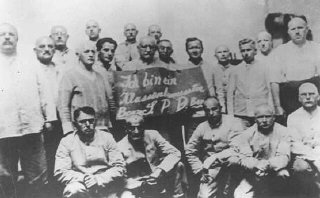
Humiliation of SPD prisoners in KZ Dachau. The plague reads: I am a party leader, aware of my class. Source: KZ Gedenkstaette Dachau
' Tolerance means weakness' was Eicke's slogan. He set high standards for his guards and compassion for prisoners was one of the greatest sins they could be guilty of. Eicke, called 'Papa Eicke' by his men, taught them unconditional obedience to superiors and turned his guard detail into a unit that perfectly matched the policy of the SS. The way in which he reorganized Dachau, his unconditional obedience to superiors and his capability to encourage men and make them subordinate to him, eventually led to his appointment as Inspektor der Konzentrationslager – inspector of concentration camps - by Heinrich Himmler on July 4, 1934. His appointment marked an important turning point in the history of the concentration camps.
Eicke was in day to day charge of the daily order of business in the various camps and was tasked with organizing the system of camps in Germany in an administrative and managerial manner. He set the generally valid penal measures and charted the power ratio within the camps. He organized this so effectively within the camps that prisoners were even deployed to guard each other and to keep camp life running smoothly. His camp Dachau stood as role model for all existing and future camps. The organization he had introduced here should be applied everywhere so the individual camps wouldn't be ruled arbitrarily but according to a fixed general policy. Camp personnel was trained within the SS-Übungslager in Dachau: a real academy for camp guards and other staff. Eicke also established the Totenkopfverbände, (death head squads) armed units to guard concentration camps, in which all guards were to enlist.
An important element of Eicke's new policy within the camp system was the way camps were to be set up. They were to be large complexes in which large numbers of prisoners could be housed. Moreover, these camps should be ruled independently, closed to the outside world so they could be seen as small enclosed societies. As many of the early camps didn't meet Eicke's demands, they were either closed down or given another function within the total system of persecution by the SS. Due to the growing number of prisoners new locations for camps were sought. Soon, a number of large camp complexes, with meanwhile notorious names, would be opened.
Definitielijst
- Dachau
- City in the German state of Bavaria where the Nazis established their first concentration camp.
- Totenkopfverbände
- Death’s head regiments. Special formation inside the Schutzstaffel (SS) that was deployed to guard concentration camps.
Period 3: 1936 to September 1933
During the period from 1936 up until the outbreak of the war in September 1939, KZ Sachsenhausen, Buchenwald, Flossenburg, Mauthausen, Neuengamme and Ravensbrück were established. Apart from Mauthausen, which was located in Austria, all these camps were located in Germany because the massive gain in territory of the Third Reich would begin with the start of the war. In addition to concentration camps, labor camps, forced labor camps and reeducation camps were established on a large scale. From 1937 on, many factories housed for instance Jewish laborers in camps or locations very similar to camps. Jews were gradually ousted from society and for them it was very hard to find work. These labor camps were the only possibility for them to find it.
In 1936 and 1937, Jews were not only locked up in camps temporarily just because of their Jewish identity. Although there were many Jews among the prisoners, they were picked up because their membership of the Communist and Socialist party and not just because they were Jews. This situation changed after the Kristallnacht on November 9 to 10 1938, when members of the SA and other followers of national socialism took to the streets to destroy Jewish possessions. Jewish shops, warehouses, schools and synagogues were demolished and many Jews were maltreated. The SS and police had been ordered to watch from a distance while the pogrom progressed and to see to it, no looting would occur. They arrested over 30,000 Jewish males who had probably defended themselves against the violent actions of the SA and locked them up in Dachau, Buchenwald and Sachsenhausen. From that moment on, an increasing number of Jews would be imprisoned in camps precisely because they were Jewish.
There was no question of massive man hunts and extermination yet as for the time being, Jewish policy focused mainly on mandatory emigration. Concentration camps were also used as a measure to persuade Jews to consider emigration to other countries. Imprisoned Jews in the camps were treated in such a manner that they would understand they no longer were part of the 'healthy, clean and beneficial' German national society. Hence they were abused and humiliated in all sorts of ways. Some Jews in the camps perished as a result of the inhuman treatment and this should be a deterrent to other Jews outside and within the camps. Only when a Jewish prisoner indicated he and his family would leave Germany forever, he was released. After the outbreak of the war, emigration proved not to be suitable any longer to expel Jews from society and the Germans turned to even more horrendous methods to remove the Jews from the Third Reich permanently.
During the period up to the war, other prisoners were also rounded up on a large scale, apart from Jews. While during the first and second period mainly political opponents were locked up in these camps, in this third period increasing numbers of other groups were taken into Schutzhaft. Although until 1935, certain high ranking officials had resisted against the application of Schutzhaft as the execution of it couldn't be controlled, the Nazis had maintained this judicial instrument and had even strengthened it. It was Nazi lawyer Werner Best who informed Hitler in 1935 that from that moment on, Schutzhäftlinge were in no way eligible for any form of judicial assistance.
Protests by Innenminister Wilhelm Frick and Justizminister Franz Gürtner regarding the use of Schutzhaft and management of the concentration camps didn't make any difference either. Frick in particular protested against the autonomous power of the SS and the police, which were officially still subordinate to his ministry, over the concentration camps. Himmler was actually subordinate to Hitler only and didn't care about the Innenminster whatsoever. In 1935, Gürtner complained about the large number of deaths in the camps and demanded that prisoners could seek assistance from a lawyer. Hitler however completely ignored these protests and considered measures unnecessary. He even permitted Himmler to expand the system of concentration camps.
Around 1935, there were surprisingly few inmates in the concentration camps. In the summer of that year, a total of 3,500 people had been interned in camps, less than on any other moment. Meanwhile, many political prisoners had been released because they understood that resistance against the Nazis hardly made sense. For the time being, Schutzhaft meant imprisonment for an indefinite period but nonetheless, prisoners could be released for good behavior. Schutzhaft was introduced mainly as a preventive measure and to relieve the overcrowded police prisons and during the first years of Hitler's reign, it wasn't a measure to separate prisoners from society for a long time, at least not yet. Until 1939, prisoners were released frequently and the average stay in a concentration camp was 12 months. After the beginning of the war, in principle however, inmates were no longer released.
The number of prisoners increased after 1935 as from that moment on, more kinds of people were imprisoned in the camps. Meanwhile, a definition had been issued which persons were considered undesired racially, politically or socially. From that moment on, other groups of the population, such a Jehovah's witnesses, people unwilling to work (Arbeitsscheue), Asoziale and Gypsies were taken into Schutzhaft. The expansion of groups which were eligible for Schutzhaft is a clear sign of the Nazis steering towards a radical change of the German VolksgemeinschaftTo this end, the concentration camps proved to be an extremely efficient instrument. While in the early years after the seizure of power, these camps were mainly an emergency measure to stabilize the power of the Nazis, they had evolved into fixed institutes of repression deployed to shape society according to the norms and values of national-socialism.
Not only did the expansion of Schutzhaft and the classification of various sorts of people eligible for arrest caused an increase in the number of concentration camp inmates. A number of changes in the field of organization caused a development in the system of persecution and suppression resulting in more prisoners. For instance, the judicial power of the Gestapo, great as it was already, was expanded further on February 10, 1936. The German judiciary apparatus and the Innenministerium (Department of the Interior) were side tracked and had no longer any influence on the Gestapo. Without judicial supervision, the Gestapo had gained the authority to arrest anyone who didn't meet the demands of the Third Reich in any way.
A few months after the introduction of the new Gestapo law, the German judiciary and the Innenministerium were sidetracked further by Himmler's appointment to Chef der Deutschen Polizei on June 17, 1936. Supervising both the SS and the entire German police system, Himmler became the second most powerful man in the Third Reich after Hitler. He was actually still subordinate to the Minister of the Interior but he was in fact answerable to only one person: the Führer. Himmler restructured the police system by posting various police services to the Ordnungspolizei and the Sicherheitspolizei or Sipo. The first or OP was made up of the regular uniformed police and civil security services and the Sipo was a merger between the Kripo (criminal investigation) and the Gestapo. The Gestapo had a considerable influence on the flow of prisoners to the concentration camps. Moreover, a Gestapo office, which handled punishment of prisoners and such, was located in each concentration camp.
While the police and security system were steadily developing, the economic importance of the camps lagged behind somewhat. Prisoners were forced to do traditional forms of prison labor like in mining. Halfway through the war, apart from a political and social right to exist, the camps gained an important economical function.
Definitielijst
- concentration camp
- Closed camp where people are being held captive that are considered to be anti- social, enemies of the state, criminal or unwanted individuals. These groups mostly do not get a fair trial or are condemned to doing time in a camp.
- Führer
- German word for leader. During his reign of power Adolf Hitler was Führer of Nazi Germany.
- Gestapo
- “Geheime Staatspolizei”. Secret state police, the secret police in the Third Reich.
- Jews
- Middle Eastern people with own religion that lived in Palestine. They distinguished themselves by their strong monotheism and the strict observance of the Law and tradition. During World War 2 the Jewish people were ruthlessly persecuted and annihilated by the German Nazis. . An estimated 6,000,000 Jews were exterminated.
- Kripo
- Kriminalpolizei. Criminal investigation agency. Ordinary civilian police of Nazi Germany.
- Mauthausen
- Place in Austria where the Nazi’s established a concentration camp from 1938 to 1945.
- national socialism
- A political ideology drawn up by Hitler based on the superiority of the German race, the leader principle and fierce nationalism that was fed by the hard Peace of Versailles. National socialism was anti-democratic and racist. The doctrine was elaborated in Mein Kampf and organised in the NSDAP. From 1933 to 1945 National socialism was the basis of totalitarian Germany.
- Nazi
- Abbreviation of a national socialist.
- resistance
- Resistance against the enemy. Often also with armed resources.
- Sipo
- ”Sicherheitspolizei”. Combination (since 1936) of the Gestapo and criminal police.
- socialism
- Political ideology aiming at slight or no class differences. Means of production are owned by the state. Evolved as a response to capitalism. Karl Marx tried to substantiate socialism scientific.
Period 4: September 1939 to June 1941
The Second World War broke out on September 1, 1939, with the German invasion of Poland. The country was divided between the Soviets and the Nazis. The west of Poland, named the Gau Danzig-West Preußen and Wartheland (called Warthegau until 1939), were annexed by the Nazis and subsequently germanized. Large numbers of the Polish intelligentia were locked up in concentration camps so they couldn't offer resistance to the new rulers. In the east, the General Government was established in which Poles and Jews – both inferior in the eyes of the Nazis – would be subjected to a harsh policy of occupation. After the German invasion of the Soviet Union, the General Government would play an important role as the extermination camps Belzec, Sobibor and Treblinka were situated in the area.
Although during the period 1939 to 1941, extermination camps hadn't been set up yet – the first of these camps, Chelmno was operational as from December 8, 1941 – Auschwitz was established on May 20, 1940. Initially, the camp was a concentration camp and as late as August 16, 1942, the first mass extermination took place in the gas chambers of Auschwitz II (Auschwitz-Birkenau). Extermination camps not being operational yet didn't mean Jews could live freely in the Third Reich. A growing number of male Jews was locked up in concentration camps but women and children were spared for the time being. Plans still existed to have Jews emigrate to special locations outside the state's borders, such as the General Government but the war rendered large scale emigration plans almost impossible. New, but in particular murderous alternatives popped up when the Nazis invaded the Soviet Union.
Before the Soviet Union was invaded though, the Nazis first captured various countries in the west in rapid succession such as Holland, Belgium, France and Denmark. For the concentration camps, a new era began because, apart from prisoners from Germany and the annexed areas, now large numbers of prisoners fromn the captured countries began entering the German concentration camps. Moreover, various sorts of camps were established in these countries. Most of them were Polizeihaftlager, ruled by local commanders of Sipo and SD. Through these camps, large numbers of prisoners ended up in the German concentration camps. At the beginning of the war, the camps were 'home' to some 25,000 people, towards the end of 1941, this number had risen to 60,000.
Foreign prisoners were mainly people who had resisted against the German occupier but in Poland for instance, a large part of the intelligentia was arrested. Initially, the concentration camps were mainly useful to restore and maintain order within the occupied areas but eventually, German police and security services would arrest anyone in other countries who didn't match their political, social and racial standards. An extensive system of all sorts of camps popped up all over Europe which together would make up an important instrumnt of power to suppress European citizens.
The outbreak of the war caused a growing shortage of man power in Germany. Many able bodied men served in the German army and their places had to be filled. Apart from foreign forced laborers, an increasing number of concentration camp inmates were deployed to make up for the shortage of workers. Inmates were mainly put to work in the war industry in work shops and factories within or outside the camp complexes. In order to make maximum profit of the camps and the deployment of inmates, the Wirtschafs und Verwaltungs Hauptamt was founded in 1942 as part of the Reichsführung-SS.
Definitielijst
- Auschwitz-Birkenau
- The largest German concentration camp, located in Poland. Liberated on 26 January 1945. An estimated 1,1 million people, mainly Jews, perished here mainly in the gas chambers.
- concentration camp
- Closed camp where people are being held captive that are considered to be anti- social, enemies of the state, criminal or unwanted individuals. These groups mostly do not get a fair trial or are condemned to doing time in a camp.
- Gau
- “Shire”. District in the Third Reich established by the NSDAP.
- invasion
- Armed incursion.
- Jews
- Middle Eastern people with own religion that lived in Palestine. They distinguished themselves by their strong monotheism and the strict observance of the Law and tradition. During World War 2 the Jewish people were ruthlessly persecuted and annihilated by the German Nazis. . An estimated 6,000,000 Jews were exterminated.
- resistance
- Resistance against the enemy. Often also with armed resources.
- Sipo
- ”Sicherheitspolizei”. Combination (since 1936) of the Gestapo and criminal police.
- Soviet Union
- Soviet Russia, alternative name for the USSR.
Period 5: June 1941 to the spring of 1944
The SS-WVHA was one of the 12 main offices which were represented within the Reichsführung-SS, the umbrella ruling agency of the Schutzstaffel. Headed by SS-Obergruppenführer Oswald Pohl, this office was tasked with several economic and administrative issues. The SS-WVHA for instance managed numerous companies and exploited various natural sources. This office was also responsible for the deployment of forced laborers in state and privately owned companies. From their establishment, the concentration camps were also subordinate to this main office. Amt D or the Konzentrationslagerwesen, headed by the former Inspektor der Konzentrationslager Richard Glücks and four departments with various subdivisions were subordinate to him which all bore responsibility over a certain branch within the concentration camps.
Even before the SS-WVHA was founded, the Sipo and the SD had been incorporated in another main office of the SS, the Reichssicherungshauptamt or RSHA. Whereas the SS-WVHA was responsible for the management of the camps, the RSHA was responsible for the delivery of inmates. In addition, the RSHA was responsible for the implementation of the Endlösung der Judenfrage which would take radical forms after Operation Barbarossa. On the heels of the German forces, so-called Einsatzgruppen eliminated Jews on a large scale but Soviet Kommissars and partisans as well. For the first time, large scale murdering of men, women and even children took place only because of their Jewish identity. Although it is estimated the Einsatzgruppen killed over 1.5 million victims, this method of extermination proved insufficiently effective. After all, the minutes of the Wannsee Conference, where representatives of the SS, party and state had discussed the radical solution of the Jewish problem, show that a total of 11 million Jews were earmarked for extermination. A quicker and more effective method to kill Jews systematically was found in the extermination camps.
Some time before the Wannsee Conference, from December 8, 1941 on to be exact, Jews were gassed in camp Chelmno, Reichsgau Wartheland, using gas vans. They were loaded into the trucks and subsequently gassed by the exhaust fumes from the engine. After the Wannsee Conference, extermination camps Sobibor, Belzec and Treblinka were also set up as part of Aktion Reinhard, the extermination of Jews mainly from the General Government. Two existing concentration camp, Auschwitz and Majdanek were partly adapted and expanded as extermination camps. On August 16, 1942, a second camp was opened near Auschwitz, namely Auschwitz II or Auschwitz-Birkenau that was used as the location for mass extermination. In Majdanek, gassing started in the spring of 1942. In both camps, victims were gassed with hydrocyanic acid emanating from the pesticide Zyklon-B.
While extermination camps were established and growing numbers of Jews were killed in them, the concentration camps maintained their prominent role in the Third Reich. The invasion of the Soviet Union triggered a new flow of prisoners and from other captured countries as well the flow of non-Jewish prisoners continued. Jewish inmates were deported from the concentration to the extermination camp. More and more Außenlager were established near production sites as growing numbers of prisoners were deployed in the war industry by the SS-WVHA. In the first eight months of 1943, some 60,000 prisoners died out of a total of 220,000 in concentration camp at that moment.
It is remarkable that conditions for non-Jewish prisoners subsequently improved a little for the time being in some camps. The policy Vernichtung durch Arbeit was lifted temporarily. It became clear that the war industry could only be kept running by better treatment of the inmates. In Auschwitz, being both concentration and extermination camp, these improved living conditions had their influence on the number of Jewish prisoners that were killed. As these conditions improved, the mortality rate in the camps dropped so less people could be interned here. Jewish prisoners fit for labor were subsequently not placed in concentration camp Auschwitz but were murdered right away in extermination camp Auschwitz-Birkenau. In other locations, Jewish prisoners fit for labor were still deployed as forced laborers. Their living conditions were extremely bad and because large numbers of Jews perished as a result, inhuman heavy forced labor for Jews was part of the Endlösung just like the gas chambers. The relatively favorable living conditions for non-Jews in some camps would soon come to an end though.
Definitielijst
- Auschwitz-Birkenau
- The largest German concentration camp, located in Poland. Liberated on 26 January 1945. An estimated 1,1 million people, mainly Jews, perished here mainly in the gas chambers.
- concentration camp
- Closed camp where people are being held captive that are considered to be anti- social, enemies of the state, criminal or unwanted individuals. These groups mostly do not get a fair trial or are condemned to doing time in a camp.
- Endlösung
- Euphemistic term for the final solution the Nazis had in store for the “Jewish problem”. Eventually the Endlösung would get the form of annihilating the entire Jewish people in extermination camps.
- invasion
- Armed incursion.
- Jews
- Middle Eastern people with own religion that lived in Palestine. They distinguished themselves by their strong monotheism and the strict observance of the Law and tradition. During World War 2 the Jewish people were ruthlessly persecuted and annihilated by the German Nazis. . An estimated 6,000,000 Jews were exterminated.
- RSHA
- Reichssicherheitshauptamt. The central information and security service of the Third Reich.
- Sipo
- ”Sicherheitspolizei”. Combination (since 1936) of the Gestapo and criminal police.
- Soviet Union
- Soviet Russia, alternative name for the USSR.
- Wannsee Conference
- Conference at the Wannsee on 20 January 1942. The Nazi’s made final agreements about the extermination of Jews in Europe, the Final Solution (Ëndlösung).
- Zyklon-B
- Poison gas that was systematically used in German extermination camps, primarily to murder Jews.
Period 6: spring of 1944 to May 1945
During the last year of the war, the number of prisoners rose dramatically. In January 1945, the camps contained over 700,000 inmates, some 90% of non-German nationality. Within the concentration camp in the Reichsgebiet, some 450,000 inmates had died from violence, bad living conditions, illnesses or forced labor. This increase in numbers during the last year of the war, was caused by evacuating inmates from the (extermination) camps in the east and they depended on the concentration camps within Germany's borders. The first evacuation of prisoners from extermination and concentration camp Majdanek took place in the spring of 1944. November 1944 saw the closing of the gas chambers in Auschwitz-Birkenau and on January 18, 1945, the camp was closed down completely. As not a single trace of the mass murder should be left behind (at least as few as possible): gas chambers were destroyed and corpses in mass graves were exhumed and cremated even then. The advancing Red Army wasn't to discover which atrocities had taken place in the camps.
The relocation of inmates to camps in the west progressed extremely chaotic but above all, the conditions of this transports were horrendous. Large groups of prisoners were forced to cover great distances on foot as the logistic infrastructure could not handle large transports anymore. Between January 17 and 21, some 58,000 inmates were sent on foot from Auschwitz to Wodzislaw, a distance of some 80 miles. Once there, they were loaded onto cattle trucks and deported to other concentration camps in the west. 15,000 people died during this barren marches from the extreme weather conditions, lack of food, of medical treatment and of places to sleep. On the way, guards shot weakened or protesting prisoners at will. Owing to the large number of victims, these marches are called death marches. In March and April, near the end of the war, the Nazis evacuated one camp after the other. Even camps on German territory like Groß-Rosen, Buchenwald, Sachsenhausen and Ravensbrück were to be evacuated. At least 250,000 out of the 700,00 inmates were sent on these death marches in the last two months. Estimates show that 100,000 Jews – 1.8% of the total number of victims of the Holocaust - perished during these marches.
Not only those prisoners sent on death marches suffered from horrendous conditions. Because of the massive flow of prisoners, the camps located in the west were heavily overcrowded. Hygienic conditions deteriorated causing contagious diseases like typhoid to break out. Starved prisoners contracting contagious diseases had little chance of survival and died in their masses although liberation was near. Anne Frank, the best-known victim of the Holocaust, died during the last weeks prior to her liberation. She died in Bergen-Belsen from typhoid. Although the gas chambers were not operational any longer, large numbers of prisoners still lost their lives. Even after the liberation of the camps by the Allies, prisoners would still perish because they were so sick and weakened, no one could help them anymore. After the liberation of Bergen-Belsen on May 8 1945 for instance, over 13,000 members died anyway.
Definitielijst
- Auschwitz-Birkenau
- The largest German concentration camp, located in Poland. Liberated on 26 January 1945. An estimated 1,1 million people, mainly Jews, perished here mainly in the gas chambers.
- concentration camp
- Closed camp where people are being held captive that are considered to be anti- social, enemies of the state, criminal or unwanted individuals. These groups mostly do not get a fair trial or are condemned to doing time in a camp.
- Holocaust
- Term for the destruction of European Jewry by the Nazis. Holokauston is the Greek term for a completely burnt sacrifice.
- Jews
- Middle Eastern people with own religion that lived in Palestine. They distinguished themselves by their strong monotheism and the strict observance of the Law and tradition. During World War 2 the Jewish people were ruthlessly persecuted and annihilated by the German Nazis. . An estimated 6,000,000 Jews were exterminated.
- Red Army
- Army of the Soviet Union.
Liberation
The first camps to be liberated were located in the east. These were liberated by the Red Army but it often encountered all but abandoned camp complexes. When Auschwitz was liberated on January 27, 1945, only 7,650 prisoners were found. A poor number as compared to for instance August 1944 when 105,168 people were still imprisoned. The death marches and transports to the west had seen to it that the majority of prisoners still alive, was found in the western camps that were liberated by the British and the Americans. The first concentration camp the Western Allies entered was camp KZ Natzweiler-Struthof in the Alsace, within the present-day French borders. When the camp was discovered on November 23, 1944, it was abandoned as on September 22, all inmates had been evacuated by the SS. Only within the borders of present-day Germany, the first camps were found where the liberators came face to face with the atrocities that Nazi Germany had been able to keep relatively secret until then.
The first camp in which the western Allies encountered severe atrocities was an Außenlager of KZ Buchenwald, located in the little town of Ohrdruf. In this camp and under dismal conditions, prisoners were forced to work on special construction projects of Amtsgruppe C (Bauwesen) of the SS-WVHA, including new headquarters for the Führer. In March 1945, there were still 13,736 inmates in the camp but large numbers of them were sent on death matches to Bergen-Belsen and Buchenwald. The camp was discovered by men of the 4th Armored Division of Patton's Third Army on April 4. On arrival in the camp, they first found the corpses of some 35 inmates who had been shot by their guards. A small number of extremely weakened prisoners still alive were found in the barracks. Apart from the corpses found in the camp, they also found remains of cremated corpses. As this camp had no crematory at its disposal, the physical remains of some 3,000 prisoners had been buried in mass graves. In order to eradicate traces of the mass dying, camp guards had opened the graves shortly before the liberation in an attempt to cremate the remains. In their hurry, the guards hadn't succeeded in cremating all corpses and so, the liberators encountered the charred bodies on piles of railway sleepers.
On April 12, the American generals Dwight Eisenhower and George Patton paid a visit to the camp. Both generals were completely stunned by what they saw. Patton, a war-hardened veteran had to vomit because of the stench emanating from the corpses. In his memoirs, Eisenhower wrote about his visit to the camp:
The same day, I saw my first horror camp. It was near the town of Gotha. I have never felt able to describe my emotional reactions when I first came face to face with indisputable evidence of Nazi brutality and ruthless disregard of every shred of decency. Up to that time I had known about it only generally or through secondary sources. I am certain, however that I have never at any other time experienced an equal sense of shock.
In a message to General George Marshall, the head of the Joint Chiefs of Staff in Washington, Eisenhower explained on April 15 he had visited the camp on purpose. He wanted to have a first-hand account of the atrocities in the camp, in order to gather evidence in case in the future, these atrocities would be swept aside as Allied propaganda. Not only the eyewitnesses gathered evidence for the future, but Allied photographers and film crews recorded the atrocities which were discovered in the camps. Hollywood director George Stevens made a compilation which was shown in evidence during the Nuremburg trials. The images also appeared on television and in the newspapers so the home front would also be confronted with the stacks of emaciated corpses.
The horrifying images from the relatively small camp in Ohrdruf were only the tip of the iceberg of what would be found in the concentration camps in Nazi Germany. On April 11, American troops discovered both Buchenwald and Mittelbau-Dora. The former was liberated by units of Patton's 4th Armored Division. In the camp large numbers of corpses of emaciated prisoners were found but they also made another gruesome discovery: the skin of prisoners had been used here to make lamp shades, book covers and handbags. Patton forced about a thousand inhabitants of the nearby town of Weimar to be eyewitness to the atrocities of this camp. It is very likely that these men and women entered this camp for the first time and were forcibly confronted with the crimes committed by the former rulers of their country.
In Mittelbau-Dora and some Außenlager of this camp, prisoners were deployed in large subterranean factories where for instance the V-1 and V-2, flying bombs and rockets were produced to revenge the Allied bombing of German cities. Only a few prisoners were found here still alive and it became clear that in these underground factories only two things happened: work and die. It was discovered that the German war industry depended heavily on forced labor. During the International Tribunal in Nuremburg (IMT) Fritz Sauckel, who as Generalbevollmächtiger für den Arbeitseinsatz was responsible for the deployment of forced laborers, was sentenced to death. Albert Speer, Reichsminister für Rüstung und Munitionen and the brain behind the war industry, was sentenced to 20 years imprisonment by this court.
In the movie, shown during the IMT, the image of a bulldozer moving stacks of corpses in Bergen-Belsen was probably the most gripping and horrific. However, it weren't the Nazis, using a bulldozer to remove corpses in this dishonorable fashion but the British who liberated this camp on April 15, 1945. It was the first camp they liberated. The deployment of this bulldozer was quite understandable because in the camp, a shocking number of 10,000 corpses infected with typhoid were found. In order to prevent a further spreading of diseases, these corpses were to be buried immediately but it was impossible to achieve this within a short period. Hence, the difficult decision was taken to use a bulldozer to shove large stacks of corpses in one go into mass graves. In the vicinity of the camp, open pits were discovered containing thousands of corpses in a prolonged state of decay. Apart from the large number of corpses, some 40,000 prisoners who were still alive were found in the camp. The majority of them were in a far state of exhaustion as a result of continuous malnutrition and starvation. Many suffered from typhoid, tuberculosis or dysentery and even after the liberation of this camp, another 13,000 prisoners died without British physicians being able to do anything for them.
The last concentration camp discovered by the Americans was Dachau, the first Nazi concentration camp that had been the model for all camps. When the Americans entered the camp on April 29, this didn't proceed without a fight. When SS-guards in a watchtower opened fire on prisoners, the Americans fired at the tower. When the SS men surrendered, they were executed. Elsewhere in the camp, a veritable man hunt was going on after camp guards whereby prisoners took revenge on their former torturers. It won't surprise anyone that in Dachau, large numbers of corpses and emaciated and starved prisoners were encountered again. Contagious diseases had erupted here as well and in the period between the liberation of the camp and June, another 2,466 prisoners died.
After the camps had been liberated, the large numbers of corpses buried and the quarantine lifted, which had been imposed because of the contagious diseases, many camps were used by the Allies again as detention centers. Dachau for instance was used as a prison for arrested SS men and between 1945 and 1950, the Soviets used Buchenwald as a prison for mainly former members of the NSDAP. This didn't mean the end of suffering in Buchenwald though because out of some 28,000 Soviet inmates imprisoned her, over 7,000 died. Other camps such as Bergen-Belsen were completely demolished by the Allies to put a definite stop to the obstinate typhoid epidemic Many former concentration camps in Germany and other countries were soon fitted up as monuments or memorial centers.
Definitielijst
- Arbeitseinsatz
- “Labour deployment”. Forced deployment in the German industry. Approximately 11 million European citizens were rounded up and deployed into forced labour in the Third Reich. Not to be confused with the Arbeidsdienst or labour service, an organisation for national-socialist education for Dutch youngsters.
- Buchenwald
- Concentration camp established in 1937 near the city of Weimar.
- concentration camp
- Closed camp where people are being held captive that are considered to be anti- social, enemies of the state, criminal or unwanted individuals. These groups mostly do not get a fair trial or are condemned to doing time in a camp.
- Dachau
- City in the German state of Bavaria where the Nazis established their first concentration camp.
- Führer
- German word for leader. During his reign of power Adolf Hitler was Führer of Nazi Germany.
- Nazi
- Abbreviation of a national socialist.
- propaganda
- Often misleading information used to gain support among supporters or to gain support. Often used to accomplish ideas and political goals.
- Red Army
- Army of the Soviet Union.
Living conditions in the camps
It is well known today that living conditions in the concentration camps were bad. Yet it is impossible to pass general judgement on living conditions in the camps as they differ not only as to location but also as to period. We often base our opinion on the images made during the liberation of the camps as pictures and films from that period up to the liberation are extremely rare. Images of stacks of emaciated corpses, prisoners not having received food for days and living in their own filth are only a time stamp in the history of the camps. Bergen-Belsen for instance, where probably the worst atrocities were discovered, wasn't even a concentration camp until March 1944 but an exchange camp (Aufenthaltslager). From here, Jewish prisoners were exchanged against German prisoners of war. The Jews didn't have to work and living conditions were bearable because after all, only living Jews could be exchanged. The horrific images of the liberation of Bergen-Belsen say more about the last months of the war than show a concrete and general picture of the living conditions in the German concentration camps during the period 1933-1945.
Does this mean then that living conditions were only bad during the last months of the war? No, living conditions could be considered degrading during the entire period between 1939 and 1945, according to our present-day standards but also according to those prevailing in most prisons of the western world at the time. It is not true though that contagious diseases, severe malnutrition and massive dying were phenomena which always occurred in the camps as a matter of fact. Contagious diseases had to be restrained because of the great risk for guards, the direct surroundings of the camp and even the entire German society. The pesticide Zyklon-B, which gained notoriety as the gas that was used in Auschwitz-Birkenau and Majdanek, was used to fight epidemics. In addition, inmates had to keep their quarters clean and when they didn't do so, punishments were severe. Hygienic measures could not always prevent contagious diseases from breaking out. Infected prisoners were usually separated and often died. Generally speaking, there was no question of continuous and severe malnutrition in the camps. After all, prisoners had to perform heavy work and without food, they would have collapsed soon. This didn't mean in any way that prisoners had more than enough food at their disposal but in general, it can be said that food supply steadily decreased in the later years of the war and was eventually limited to an inhuman minimum. Massive dying isn't a continuously present phenomenon in concentration camps either, although the mortality rate was undoubtedly high. Exhaustion, maltreatment and illnesses weekly claimed many lives in the camps but the massive mortality at the end of the war was caused mainly by a lack of hygiene, severe malnutrition and the massive flow of prisoners from evacuated camps. Circumstances caused by the massive losses Germany suffered and the inherent problems.
And yet there were prisoners who suffered more than others. Living conditions of Jews and Gypsies for instance were far worse than those of political prisoners. From the moment the extermination camps became operational, the life of a Jew or a Gypsy had no longer any value whatsoever for the Nazis. Jews fit for work were deployed as forced laborers and when they died from the exhausting work, this was not considered a loss of man power but a contribution to the Endlösung. It cannot be stated either that massive mortality and severe malnutrition in the camps only occurred in the last period of the war. Those were circumstances not always present in all camps but from 1942 on, they were circumstances that in particular Jewish prisoners were subjected to. The massive mortality of Jews from unbearable labor will not have taken place though in the concentration camps but in the special forced labor camps for Jews situated in the east.
Within the various concentration camps there were differences in living conditions as well. Since 1940-1941, there were three categories of concentration camps:
- I: Camps for the least dangerous prisoners with the relatively best living conditions, such as Dachau
- II: Camps with more severe living and working conditions for convicts, sentenced for a 'graver' crime but eligible for return to society. For instance Buchenwald.
- III: Camps with the most severe living and working conditions with no chance of rehabilitation. These camps were sometimes called Knochenmühlen (bone mills) such as Mauthausen, Groß-Rosen and Natzweiler.
In reality though, this difference was hardly noticeable
But on which can we really base ourselves on, stating that the living conditions in the concentration camps were bad? First of course on the fact mentioned before that the mortality rate was high. In the period after the war, accurate but also very inaccurate estimates have been made of the mortality rate. In order to show how high this rate was, we will put the total number of prisoners in seven camps as a percentage of the number of deaths. The number of prisoners as well as the number of deaths have been calculated over the entire existence of the camp. These seven camps were no (partly) extermination camps:
A mortality rate of 22.4 to even 59.1% is of course high, certainly because it must be taken into account that the average age of the prisoners wasn't particularly high. But these numbers cover a period of several years and here as well it is possible that the majority of prisoners died in the last months of the war. The number of deaths per year is difficult to recover and a statistical chart of the number of deaths per camp per year is outside the scope of this article. As an example we show the number of deaths in relation to the number of prisoners per year in KZ Buchenwald from 1937 to 1944. The year 1945 has been omitted as the victims of the death marches would blur the image, after all these prisoners were no official inmates of Buchenwald but of camps elsewhere:
| Date: | Prisoners: | Deaths: | Mortality in %: |
| 1937 | 2.561 | 48 | 1,9 |
| 1938 | 11.028 | 771 | 7 |
| 1939 | 11.807 | 1.235 | 10,5 |
| 1940 | 7.440 | 1.772 | 23,8 |
| 1941 | 7.911 | 1.522 | 19,2 |
| 1942 | 9.517 | 2898 | 30,5 |
| 1943 | 37.319 | 3.516 | 9,5 |
| 1944 | 87.258 | 8.644 | 9,9 |
| 1937-1945 | 250.000 | 54.000 | 22,4 |
Source: Stiftung Gedenkstaetten Buchenwald und Mittelbau-Dora
This table proves clearly that in the years 1940 and 1942 the mortality rate in KZ Buchenwald was higher than the average over the years 1937 – 1945. The absolute number of deaths reached its peak in 1944. It must be noticed that from the middle of 1943 the mortality was divided between a Stammlager and various Außenlager.
A further analysis of statistics of other concentration camps might be interesting but it is a mammoth task that is superfluous for the general picture painted in this article. In order to get a better idea of the (poor) living conditions in the camps, it is more convenient to describe life in a camp in more detail.
Definitielijst
- Auschwitz-Birkenau
- The largest German concentration camp, located in Poland. Liberated on 26 January 1945. An estimated 1,1 million people, mainly Jews, perished here mainly in the gas chambers.
- Buchenwald
- Concentration camp established in 1937 near the city of Weimar.
- concentration camp
- Closed camp where people are being held captive that are considered to be anti- social, enemies of the state, criminal or unwanted individuals. These groups mostly do not get a fair trial or are condemned to doing time in a camp.
- Endlösung
- Euphemistic term for the final solution the Nazis had in store for the “Jewish problem”. Eventually the Endlösung would get the form of annihilating the entire Jewish people in extermination camps.
- Jews
- Middle Eastern people with own religion that lived in Palestine. They distinguished themselves by their strong monotheism and the strict observance of the Law and tradition. During World War 2 the Jewish people were ruthlessly persecuted and annihilated by the German Nazis. . An estimated 6,000,000 Jews were exterminated.
- Mauthausen
- Place in Austria where the Nazi’s established a concentration camp from 1938 to 1945.
- Zyklon-B
- Poison gas that was systematically used in German extermination camps, primarily to murder Jews.
Daily life
When reading descriptions of daily life in the camps, it becomes clear that inmates were no longer considered equals. Whether we talk abouit political prisoners, criminals, anti-socials or Jews, they were all considered inferior. This does not mean, by the way that all prisoners were equal within the camps because one kind of prisoner was considered more inferior than the other. To emphasize the inferiority of prisoners they had their heads shaved on arrival and were dressed in striped uniforms – if available. These clothes were made from very thin material and could certainly not provide comfort during the cold winter days. As during the war, all materials could be put to better use, usually prisoners were no longer dressed in striped garb but they were given civilian clothes which was often taken away from Jews. Nobody cared about sizes so many inmates walked around in clothes either too large or too small. Those wearing clothes that were too small had to make do with half covered body parts which of course wasn't beneficial to their health or well-being. In order to rob prisoners of their personality further, they were given a number to be fitted to their clothes. In Auschwitz, this was even worse as the prisoner's number was tattooed on his upper arm. A more cruel method to emphasize the inferiority of inmates would be hard to find.
Of course after arrival, the camp organization maintained its policy of making inmates feel they were undesired and didn't meet the standards of the Third Reich. Each day in a camp began and ended with roll call. All prisoners were to report in the yard, in the early morning and often before sunrise where they had to line up in military fashion. Weather conditions were never an issue and even sick and weakened inmates couldn't evade roll call. Before they went off to sleep, the whole ritual was repeated. Roll call wasn't only held to terrorize inmates but for practical reasons as well. The number of prisoners had to be counted in order to check if no inmates had escaped and it could also be ascertained prisoners might have died or were too ill to attend roll call. The deceased could be cremated right away as most concentration camps had their own crematory at their disposal and the severely sick could be admitted to the sick bay. In there, mainly fellow prisoners were charged with caring for the sick. Despite the fact they had insufficient medication and instruments at their disposal and hygiene was poor, generally speaking they did their best to offer medical care. In particular during the last years of the war, their task became more difficult because of overcrowding of the camps, contagious diseases erupting more often and prisoners being forced to do heavier and heavier work.
After roll call, which was preceded by a visit to the bathroom and a cup of so-called coffee, their working day began. They worked six days a week and only Sunday was a 'day of rest'. Inmates were put to work on Sundays as well though; clothing had to be cleaned and mended if needed. In additions, it was a good opportunity for the barbers to shave all inmates. Some camps offered the opportunity to recreate and relax during the moments off. In some camps for instance, plays and concerts were held in special barracks. But all in all, it can be concluded that Sundays were absolutely no days on which inmates could relax and rest.
Food supply decreased during the years of war. While in the early years, a meal consisted of stews, in later years it was a watery soup made from carrots, turnips and other cheap vegetables, if available. Apart from the warm meal, the inmates also received a chunk of bread every day but the amount and the nutritional value decreased over the years. There were other ways of getting food though. Some inmates received Red Cross parcels or food from family back home. Frequently, these food parcels were intercepted by the guards and inmates also stole from each other. Moreover, Red Cross parcels were not sent to each and every prisoner; the Dutch Red Cross for instance didn't send parcels to Dutch inmates. For many prisoners, food parcels from home were just an illusion. After all, at home they had shortages as well and nothing was left over to send. Another way to get food was the black market. In particular the privileged prisoners, criminals and political opponents for instance, managed to exchange personal items and cigarettes with camp guards for food. This was no safe method however as within the concentration camp, nobody could be trusted, not even fellow prisoners.
The 'beds' were simple wooden beds, usually stacked. Matresses stuffed with hay gave some warmth but most of it came from fellow prisoners. During the war these barracks got overcrowded and beds had to be shared between prisoners. In these barracks the rule was: survival of the fittest: they apropiated the best sleeping places. The lesser places, draughty for instance or open to the weather were for the weaker inmates. Conditions in these barracks grew gradually worse as during the last years of the war, they became overcrowded. While the lack of privacy was the main problem in the beginning, the scenes that would unfold later were tragic. Inmates suffering from diarrhea involuntarily relieving themselves in the sleeping quarters and lice causing not only unbearable itching but spreading contagious diseases like typhoid are just two examples of the tragic circumstances in the sleeping barracks in the last years of the war.
Apart from the daily rituals in the camps and the physical conditions, there were also the camp guards and prisoners with priviliged functions, appointed by the SS who caused unbearable and inhuman conditions within the concentration camps.
Definitielijst
- concentration camp
- Closed camp where people are being held captive that are considered to be anti- social, enemies of the state, criminal or unwanted individuals. These groups mostly do not get a fair trial or are condemned to doing time in a camp.
- Jews
- Middle Eastern people with own religion that lived in Palestine. They distinguished themselves by their strong monotheism and the strict observance of the Law and tradition. During World War 2 the Jewish people were ruthlessly persecuted and annihilated by the German Nazis. . An estimated 6,000,000 Jews were exterminated.
Penal measures and prisoners hierarchy
Closely connected with the living conditions in the camps were the penalties imposed here. From a legal point of view, we might think of this as humiliation and abuse because there seldom was a legitimate reason for punishment. From the establishment of the 'wild' camps on, there were cruel camp guards who punished prisoners at will or for the slightest transgression by various forms of humiliation or abuse. Members of the SA and SS applied a real regime of terror but their way of handling things was chaotic and hardly efficient. It was Theodor Eicke, former commander of KZ Dachau and later Inspektor der Konzentrationlager, who reorganized the entire policy of disciplinary measures and punishment into an efficient system. He recorded this policy in a charter entitled 'Disziplinar- und Strafordnung für das Gefangenenlager'. These guidelines were developed in Dachau but were soon introduced in all concentration camps.
Even the most trivial transgressions carried heavy physical punishment. If one came too late for roll call or the bed hadn't been made properly, one could count on 25 beatings with a stick. The culprit was tied to wooden block bending forward and was given 25 heavy blows on the bare behind with a whip or a broom stick. This cruel punishment was known as 'Fünfundzwanzig am Arsch' (25 on the ass). When the prisoner didn't count the blows out loud and in correct German, this was often ample reason to increase the number of blows or start all over again. Inmates got severely injured or even died when the kidneys were damaged by the blows – on purpose or not. Another extremely cruel punishment was 'tree hanging'. The hands were tied behind the victim's back and he or she was hanged from a pole or a tree by the hands. They hung there for hours, plagued by unbearable pain. Damage was often permanent.
Apart from physical punishment there were also non-violent penalties that were just as cruel in their own right. Some prisoners for instance were made to stand or sit on their heels outside for hours or even days. Whereas on hot summer days, one could die from hyperthermia or dehydration, in winter there was the big risk of hypothermia or even freezing. A stay in the so-called 'Stehzelle' a cell so small one could only stand in it, was an extremely feared and cruel punishment as well. Lighter punishments were aimed at denying prisoners certain rights, like food or sending or receiving mail. Withholding food was a form of torture as well for starving prisoners.
SS guards didn't shy away from murder as punishment either. Executions usually took place in certain designated locations in the camp but in the neutral zone as well, inmates were shot from watch towers. This neutral zone was on the perimeter of the camp within the barbed wire fence. When prisoners set foot on this strip of grass, they were shot immediately. The most sadistic guards amused themselves by throwing the hat of a prisoner into the neutral zone. They subsequently ordered him to fetch it and when he entered the neutral, zone he was shot.

Demonstration of torture methods in KZ Ohrdruf. Patton, Bradley and Eisenhower watching. Source: USHMM
Not only SS guards were responsible for the cruel treatment of prisoners by the way. Inmates even made life difficult for each other. The leadership of the camps appointed certain prisoners, usually criminals or political prisoners, to so-called Kapo's. They served in the Kameradenschaftpolizei and were tasked with maintaining order among the inmates. They were in charge of the labor teams for instance and to encourage fellow inmates to work. They didn't have to perform physical labor themselves, they had better food to eat and their prison garb was made to size. From this privileged position they ruled sternly over their fellow prisoners and many Kapo's were no less cruel than the SS guards. A larger group of Kapo's was headed by an Oberkapo and within the labor teams, Vorarbeiter or foremen were subordinate to the Kapo's. In contrast to them, Vorarbeiter did have to participate in the labor teams of which they were in charge.
Apart from the role of Kapo and Vorarbeiter, certain prisoners were allocated other roles giving them authority over their fellow inmates. The highest function for an inmate was Lagerälteste or camp elder. They were an important link between the SS guards and the inmates and were in charge of the daily roll call for example. They were supported by Blockältesten. The Blockälteste was in charge of the Stubendienst, headed by the Stubenälteste Members of this Stubendienst also had authority over their fellow prisoners and saw, among other things, to the distribution of food in the correct portions. Finally, inmates were also giving administrative tasks, the daily count of inmates being the main one. These prisoners were headed by a Rapportschreiber (clerk) who was in charge of a few Blockschreiber. Inmates with a special function were designated Funktionshäftlinge.
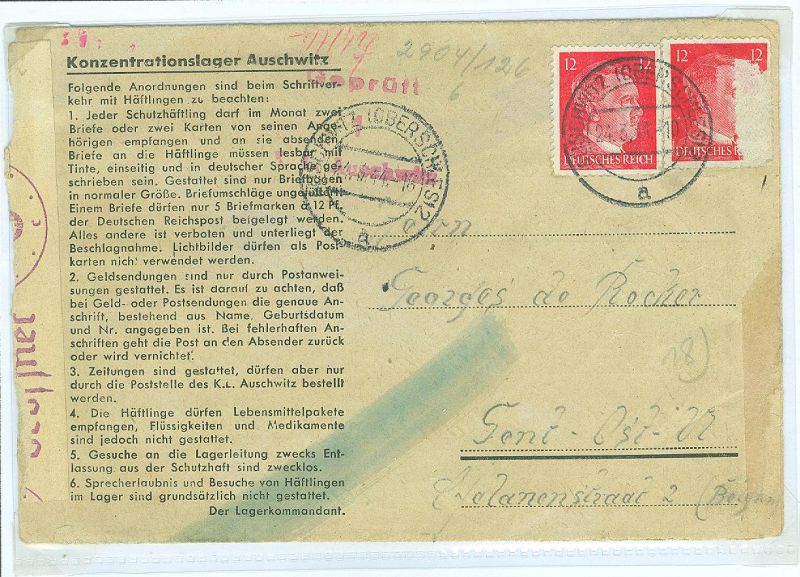
Postcard containing the rules for receiving mail in Auschwitz. A penal measure: inmates could be forbidden to send mail. Source: STIWOT
Because of this divide and rule policy, a veritable camp hierarchy was formed within the walls of a concentration camp which maintained order. For instance by naming criminals on privileged positions, the camp leadership had little fear of inmates organizing themselves in such a way serious resistance would erupt. Criminals, murderers included, were too unreliable and unsuitable to organize themselves. Moreover: why would they when they held a privileged position within the camp with more chances of survival than a soldier at the front? Political prisoners were more likely to organize themselves but there was hardly any question of serious resistance in the camps. After all, when could a revolt be organized as practically the entire day was filled with hard labor?
Definitielijst
- concentration camp
- Closed camp where people are being held captive that are considered to be anti- social, enemies of the state, criminal or unwanted individuals. These groups mostly do not get a fair trial or are condemned to doing time in a camp.
- Kapo
- A Kapo was a prisoner in a concentration camp in Nazi Germany during World War 2 who was assigned to supervise other prisoners. A Kapo had to supervise the work of the prisoners and was responsible for their results on behalf of the SS.
- resistance
- Resistance against the enemy. Often also with armed resources.
Labor in the concentration camps
The most important element within the daily ritual of the prisoners in the camps was forced labor. The slogan 'Arbeit macht frei' (Labor liberates) over the entrance of many camps wasn't for nothing. Working conditions are a very important element on which we base our judgement of the living condition in the camps. Whereas these conditions in the camps themselves were bad, during the years of the war the working conditions were the major cause of death of inmates. In certain periods, labor was similar to extermination (Vernichtung durch Arbeit). After the decision to go ahead with the Endlösung had been taken, working conditions for Jews were so bad, they perished in their masses. But during the war, non-Jewish prisoners as well were forced to do increasingly heavy labor till death followed for many. Whereas in the period before the war, labor was considered a suitable pastime for prisoners, during the war, labor became the 'reason for existence' for the concentration camps. On April 30, 1942, Oswald Pohl, chief of the SS-WVHA wrote to Heinrich Himmler:
The war has caused a visible change within the structure of the camps and has profoundly changed their task in relation to the deployment of prisoners. The increase of the number of prisoners in relation to safety, (re)education or preventive methods alone, are no longer in the forefront. The center of gravity has shifted to the field of economics. Mobilization of all manpower among prisoners, in the first place in the armaments industry and later on for labor of peace, gradually takes more priority.
This point of view calls for necessary measures that mean a gradual change of the concentration camps from their former political form to an organization that meets economic demands'.
In contrast to the years before the war, people were no longer locked up in concentration camps mainly for their (re)education, safety or as a preventive measure. The focus had clearly shifted to the economy and in particular to the armaments industry. But after the war as well, concentration camps could serve a purpose in work for peace, in particular the rebuilding of Germany. Whereas in a healthy society, only criminals are arrested, within the Third Reich it was economically important to arrest many people in order to deploy them as cheap man power without any rights. In the years before the war, inmates were frequently kept busy with senseless work such as moving logs or heavy stones around or with characteristic prison work like in mining or forestry. Since the outbreak of war – and in particular from 1942 – there was no more question of senseless labor. Inmates were mainly deployed in the war industry or connected forms of production. This made them extremely important for the continuation of production
One of the most 'necessary measures' to shift the focus of the camps to the economic field was the transfer of the leadership of the camps to the SS-WVHA, headed by Oswald Pohl. Richard Glücks maintained responsibility for the concentration camps but the function of Inspektor der Konzentrationslager and all connecting tasks were transferred to Amt D of the SS-WVHA. This office being responsible for economic and administrative issues makes clear once again that the role of concentration camps had made a drastic turn.
The SS-WVHA owned various industrial companies where inmates could do forced labor. This way, prisoners from Flossenbürg, Mauthausen, Groß-Rosen Natzweiler, Sachsenhausen, Buchenwald and Stutthof were deployed for instance in the Deutsche Erd- und Steinwerke GmbH (DEST), the mining company of the SS. Prisoners from Lublin-Majdanek, Stutthof and Neuengamme were deployed in the steel and woodwork shops of the Deutsche Ausrüstungswerke (DAW) and prisoners from Ravensbrück within the Gesellschaft für Textil- und Lederverwertung (Texled) in the garment industry. In Dachau as well as in Ravensbrück, inmates worked in in SS-Bekleidungslager), clothing depots of the SS where uniforms were made and mended.
The SS-WVHA also made prisoners available to private enterprises as forced laborers. As for each deployed worker a certain fee was demanded, this was an important source of income for the SS. From 1942-1943 on, KZ Flossenbürg for instance provided the aircraft factories of Messerschmitt and production companies of Flick, Siemens, Osram and Junkers with forced laborers. The most notorious cooperation was the one between the SS and IG Farbenindustrie AG or in short IG Farben. As early as March 1941, the company closed a friendship deal with the SS leadership of KZ Auschwitz. The agreement entailed that IG Farben was to provide building material for the expansion of the camp in exchange for prisoners. These inmates would be put to work in the construction of a factory in Monowitz near Auschwitz where synthetic rubber and fuels would be produced. Each day, severely undernourished prisoners had to cover a distance of nearly 4 miles from the camp to the building site. Here they worked 10 to 11 hours a day in summer and about 9 during winter. The necessary productivity could not be achieved and the factory neared completion as late as January 1945, when Auschwitz was liberated. Construction had claimed the lives of 25,000 people and thus made a sizable contribution to the principle 'extermination by work'. In other locations as well, IG Farben made use of inmates as forced laborers. Many tens of thousands of prisoners perished because of the bad working conditions at IG Farben. In addition, the company provided the pesticide Zyklon-B which was used as a gassing agent in Auschwitz and Majdanek.
With the SS-WVHA in charge, working conditions for inmates of concentration camps grew steadily worse, although in 1943, there was a slight improvement in these conditions. The armaments industry, headed by Albert Speer mainly relied on prisoners and other forced laborers. It was understood that bad treatment of prisoners had a negative influence on productivity and hence, the conditions were adapted accordingly. It was temporary though because during the last two years of the war, Nazi-Germany suffered more and more losses. Living conditions deteriorated but productivity of the armaments industry should increase nonetheless. In factories bombed by the Allies,, working conditions got worse and many inmates died as a result of exhaustion due to hard labor.
As a result of the shifting of tasks to the economic sphere, a growing number of Außenlager was established, to a total of 1,202. These satellite camps were part of the 22 Stammlager and were located in the vicinity of them. In Landsberg for instance, three Außenlager were established, part of KZ Dachau. These camps played an important economic role as the (war) industry wasn't necessarily situated in the vicinity of the base camps. As the daily moving of prisoners to and from their working site was very impractical from a logistical point of view, prisoners were housed in the Außenlager in the vicinity of the workshops. Groups of inmates deployed outside a concentration camp but who did sleep and eat there, were called Außenkommandos.
In summary it can be stated that working conditions and the inherent living conditions were relatively bearable during the pre-war years. At that time, inmates may have been humiliated and tortured on a large scale and murder wasn't shunned, their accommodation, food and work were still bearable. With the outbreak of war, inmates played an increasingly important economic role. As a large part of the German male population was called up for military service, their places in the (war) industry were filled by prisoners. Inmates were cheap and expendable and they were not spared. When the importance of prisoners increased gradually after 1942, around 1943 there was a slight improvement in living and working conditions. It was understood that healthy prisoners had a positive influence on production and moreover, the pool of prisoners fit for labor wasn't unlimited. Influenced by the growing losses Germany suffered, living and working conditions grew worse after 1943, with an horrendous low in the last months of the war when overpopulation and undernourishment caused extremely unhygienic living conditions, resulting in the eruption of severe epidemics.
Definitielijst
- concentration camp
- Closed camp where people are being held captive that are considered to be anti- social, enemies of the state, criminal or unwanted individuals. These groups mostly do not get a fair trial or are condemned to doing time in a camp.
- Endlösung
- Euphemistic term for the final solution the Nazis had in store for the “Jewish problem”. Eventually the Endlösung would get the form of annihilating the entire Jewish people in extermination camps.
- Jews
- Middle Eastern people with own religion that lived in Palestine. They distinguished themselves by their strong monotheism and the strict observance of the Law and tradition. During World War 2 the Jewish people were ruthlessly persecuted and annihilated by the German Nazis. . An estimated 6,000,000 Jews were exterminated.
- Mauthausen
- Place in Austria where the Nazi’s established a concentration camp from 1938 to 1945.
- Nazi
- Abbreviation of a national socialist.
- Zyklon-B
- Poison gas that was systematically used in German extermination camps, primarily to murder Jews.
Setup of a concentration camp
As it is tricky to give a general description of living conditions in the camps between 1939-1945, it is far easier to describe the setup of a camp. The camp grounds was divided in various zones, the so-called Felder (Fields) and Blocks. This system made expansion of a camp much easier. A concentration camp wasn't just a collection of wooden barracks because after completion the camp consisted of workshops, factory halls, pastures, heating facilities, SS barracks and offices, a mess, lazarettes, a prison and a crematory. In addition, some camps included a bordello or a cinema. In particular extermination camps but some other concentration camps as well were connected to the railway network and had a station of their own. All told, a concentration camp was a true city, sometimes accommodating many tens of thousands of people, personnel and prisoners.
Since the establishment of KZ Dachau in 1933 the basic setup of all camps were about identical. The setup of KZ Dachau will therefore be described in more detail.
Base of the camp was the Lagerstraße or main street which ran in a straight line through the entire camp. It was flanked on both sides by Wohnbarracken or living quarters in which the inmates lived, mainly to sleep. At one end the Lagerstraße, the Appelplatz was situated, the area where the inmates were to fall in every morning and evening. At the other end of Lagerstraße were the Desinfektionbaracke (delousing shed) and the plantation where plants and vegetables were grown by the inmates. On the one hand, the plantation provided some food for the camp, on the other hand it was a location where inmates could be put to work. Here as well, work was done in extreme circumstances.
The mess and a mortuary were located in certain barracks. Certain other barracks were used as Strafblöcke or penal barracks and Revierbaracken for the sick and injured where they could get medical treatment, little as it was. Other buildings, Wirtschaftsgebäude such as the kitchen, the washroom, the storehouse and the Bunker, the prison of the camp were located near the Appelplatz.
Outside the actual concentration camp but within the borders of the entire complex there were various other buildings in KZ Dachau such as the crematory, the office of the camp commander, the quarters of the guards and the officers. In addition, there was a large workshop of the Deutsche Ausrüstungswerke or DAW where inmates made clothing and furniture.
The camp was surrrounded by a wall and a barbed wire fence. At certain spots along the fence, watch towers had been erected. This leads to the question to what extent the concentration camps were hidden from the outside world. After the war, many Germans claimed not to have been aware of the many atrocities that had taken place within the extermination and concentration camps. Ich habe es nicht gewußt was a frequently heard sentence, meaning that people were hardly, if at all, aware of the many horrible crimes that were committed, ordered by their leaders. Although the largest reproof is that people must have known about the extermination of 5,1 to 6 million Jews, this article is limited to the question whether people should have known about the horrible conditions in the concentration camp and not in the extermination camps.
First off we can state that the existence of concentration camps was anything but a secret. Heinrich Himmler for instance held a press conference on occasion of the opening of KZ Dachau and papers reported about it. The conditions being bad was no secret either. During the first years of Hitler's reign, concentration camps served as a deterrent in order to have political opponents adapt to the Nazis to avoid being arrested. Before the war, the majority of inmates was released after having done their time. After the outbreak of the war, inmates were released from concentration camps only in very exceptional cases and so, they couldn't tell about the horrendous conditions. When more and more Außenlager and Außenkommandos came into being, a growing number of inmates came outside the camps and civilians outside the walls of the camps must certainly have caught a glimpse of the emaciated prisoners.
The following is certain though: during the existence of the camps, civilians were only admitted to the camps in very exceptional cases and the Nazis hardly made any pictures or movies in the camps. From the outside, civilians could usually hardly see anything or not at all of the living conditions in the camps. The fencing with walls, the usually secluded location and the tight security turned the camps into an hermetically sealed complex, largely hidden from the outside world. Although various arguments show that conditions in the camps were known among civilians, there are also arguments to the contrary. The existence and purpose of the camps were common knowledge and people undoubtedly knew that a stay in a camp certainly was no holiday. It is debatable whether people knew that during the war, large numbers of prisoners perished in the camps and that living conditions deteriorated dramatically. The government, the SS and the Nazi propaganda apparatus took great pains to keep the atrocities in their concentration camps under wraps as much as possible.
Definitielijst
- concentration camp
- Closed camp where people are being held captive that are considered to be anti- social, enemies of the state, criminal or unwanted individuals. These groups mostly do not get a fair trial or are condemned to doing time in a camp.
- Dachau
- City in the German state of Bavaria where the Nazis established their first concentration camp.
- Jews
- Middle Eastern people with own religion that lived in Palestine. They distinguished themselves by their strong monotheism and the strict observance of the Law and tradition. During World War 2 the Jewish people were ruthlessly persecuted and annihilated by the German Nazis. . An estimated 6,000,000 Jews were exterminated.
- Nazi
- Abbreviation of a national socialist.
- propaganda
- Often misleading information used to gain support among supporters or to gain support. Often used to accomplish ideas and political goals.
Organizational structure of a concentration camp
Just like other Nazi organizations, the organization of a camp consisted of various independent departments. In the larger camps, the subdivision was as follows:
- I: Kommandantur, office of the camp commander.
- II: Politische Abteilung, political department.
- III: Schutzhaftlagerführung, in charge of preventive custody.
- IV: Verwaltung, administration.
- V: Sanitätswesen, medical care.
- VI: Fürsorge, Führung und Truppen, care and training of SS units.
Each camp was headed by a commander (Lagerkommandant). In Auschwitz for instance, it was Rudolph Höss; in Krakau-Plaszów Amon Göth. Within the camp the commander was responsible for the entire day to day running of the camp. His assistant was the camp adjutant (Lageradjutant). It was his task to inform the commander of all important events in the camp, to distribute incoming mail among the various departments and to manage the correspondence of the commander with other agencies and departments of the camp. He also kept a secret diary and furthermore he was responsible for personnel issues within the staff of the Kommandantur (Kommandostab). In addition, he bore responsibility for communication and the department of transport. Members of the staff were united in the so-called Stabskompanie. All members of staff were subordinate to the Adjutant. He was also responsible for the management of weapons, ammunition and tools. All told, the camp adjutant was in charge of the operational management and answerable to the camp commander.
In each concentration camp, there was a political department manned by the Gestapo. It was an almost entirely independent office, headed by an SS officer who was a member of the Gestapo. This office was responsible for the registration of new arrivals, keeping of the prison records and the judicial allocation of prisoners from police offices and courts. This department was also responsible for interrogation, sentencing and execution of prisoners. The leader of this office was to inform the police of any escape. There were many subordinates to handle all tasks of this office.
The third department, the Schutzhaftlagerführung was the basis of each concentration camp. This department, in direct charge of the inmates, was headed by an SS-Hauptsturmfüher or an SS-Obersturmfüher who was appointed Schutzhaftlagerführer. Some camps had more than one Schutzhaftlagerführer; Auschwitz I for instance had three. His office was in the direct vicinity of the prison barracks. It was his duty to see the prisoners being treated according to the rules and he was to report malpractices to the camp commander. In the evening and in the morning, this Führer took roll call and furthermore he had to report the number of prisoners to the Kommandantur very frequently. He did random checks to see if the labor teams consisted of the correct number of prisoners. Supervision of the daily distribution of food and the selection of prisoners for special duties were some of his tasks as well.
Directly subordinate to the Schutzhaftlagerführer were the Rapportführer and the Blockführer. Although the Schutzhaftlagerführer took roll calls in the camps, it was the Rapportführer who counted the prisoners and made a report which was signed by the Schutzhaftlagerführer. The Rapportführer also made random counts of labor teams. When they returned from work, he also checked if they didn't smuggle food stuffs or enjoyment articles into the camp. Within the camp he supervised order and hygiene. He had to carry out penalties imposed on prisoners by the Lagerkommandant and record them.
Blockführer were noncommissioned officers or lower ranks responsible for one or more departments within the camp. Such a department was called a Block. They were to maintain order and hygiene in their block. They also were in charge of prisoners holding a special function such as the Blockälteste. Blockführer could be appointed guard of a labor team. They not only took care prisoners didn't escape but they also supervised their work as to the right manner and speed. Every day, one or more Blockführer were appointed Blockführer vom Dienst. They were to guard the entrance of the camp and had to count all prisoners in the labor teams going in and out. Prisoners who could leave the camp every day by special permission had to be registered and civilians without permission to enter the camp were to be turned away at the entrance.
In 1942, subdivision IIIa – Arbeitseinsatz – was established within Abteilung III. This division was responsible for the forced labor the prisoners had to do. The division for instance put the labor teams together. Positions for SS members within this division were Arbeitsdienstführer, Arbeitseinsatzführer and Kommandoführer,. They all were to see to it that the forced labor was carried out as profitably as possible in economic sense.
The fourth department, Verwaltung was headed by an SS officer and was responsible for accommodation, medical care and clothing of the prisoners. The leader of this office was the point of contact for all domestic and economic issues. This office also supervised the personal possessions taken from the inmates such as clothing, money and other valuables. Within this office as well, many SS officers and men were present to deal with all tasks.
Within each camp, an office called Sanitätswesen saw to health issues. It was headed by an SS-StandortartzTruppenärtze, Lagerärtze, Zahnärtze and SS-Lagerapotheke. Whereas the Truppenartz saw to the medical care of the camp personnel, the Lagerartz saw to the prisoners, the Zahnartz treated both prisoners and staff and the Lagerapotheke ran the pharmacy. All these medical services were located in the SS-Reviergebäude
SS camp doctors had the so-called Sanitätsgrade meaning they had a medical rank. Usually they were noncommissioned officers supported by lower ranks. Most of the concentration camps had one SSS camp doctor who was supported by medical camp personnel as well as prisoners acting as medical personnel. The SS camp doctor also supervised hygiene in the camp and the sanitary facilities. He was to prevent contagious diseases and epidemics from erupting. The doctors also subjected newcomers to a medical examination and within Auschwitz-Birkenau they were also responsible for the Selektion. When prisoners arrived in the camp, the camp doctor selected those fit enough to perform forced labor and which prisoners should be taken to the gas chambers right away. Finally, the camp doctor monitored the quality of the food that was prepared in the kitchens for camp personnel and for prisoners. He was to report malpractices in the camp to the camp commander.

SS physicians subjecting a prisoner to freezing water during an experiment. Source: DIZ München GmbH
In most camps, the doctors hardly cared about health and well-being of the inmates. They left most of the medical care and treatment to the doctors and nurses among the prisoners. They had sick prisoners killed on a large scale by injection with phenol and within the extermination camps, the sick went sent to the gas chambers straight away. Numerous camp doctors, including the notorious doctor Joseph Mengele, subjected prisoners to horrendous experiments. Ironically, medical staff in the extermination camps was responsible for the poisonous gas in the chambers. They violated their medical oath on a large scale and were no less cruel than camp guards.
Finally, the larger concentration camps had a sixth department at their disposal: Fürsorge, Schulung und Truppenbetreuung. These were responsible for care and training of the SS units billeted in the camps.
Definitielijst
- Abteilung
- Usually part of a Regiment and consisting of several companies. The smallest unit that could operate independently and maintain itself. In theory an Abteilung comprised 500-1,000 men.
- Arbeitseinsatz
- “Labour deployment”. Forced deployment in the German industry. Approximately 11 million European citizens were rounded up and deployed into forced labour in the Third Reich. Not to be confused with the Arbeidsdienst or labour service, an organisation for national-socialist education for Dutch youngsters.
- Auschwitz-Birkenau
- The largest German concentration camp, located in Poland. Liberated on 26 January 1945. An estimated 1,1 million people, mainly Jews, perished here mainly in the gas chambers.
- concentration camp
- Closed camp where people are being held captive that are considered to be anti- social, enemies of the state, criminal or unwanted individuals. These groups mostly do not get a fair trial or are condemned to doing time in a camp.
- Führer
- German word for leader. During his reign of power Adolf Hitler was Führer of Nazi Germany.
- Nazi
- Abbreviation of a national socialist.
Categories of prisoners
The concentration camps were a Nazi method to lock up various kinds of people for different reasons. Jews and Gypsies for instance were locked up because they were considered racially inferior and hence undesired within society. Leaders of trade unions, Communists and Socialists were locked up to prevent them from resisting against the National socialist state. Based on the reason why people were locked, we can distinguish four categories but it must be noted that the Nazis themselves knew far more categories of prisoners which will be dealt with later. These four categories are:
- Inferior races, mainly Gypsies and Jews.
- Criminals.
- Political opponents such as members of the KPD and SDU, leaders of trade unions, former Nazi leaders suspected of treason or corruption, emigrants without the mandatory visa, people who listened to illegal radio stations, resistance fighters, people talking pessimistically or negatively about the Third Reich, pacifist, clergymen, members of sects and Jehovah's witnesses.
- Antisocials such as homosexuals, tramps, beggars, prostitutes and people refusing to work
Inferior races includes Jews and Gypsies who were picked up only because they were considered racially inferior. Slavs were considered inferior as well but they weren't usually locked up in a camp solely because of their identity. From a racial point of view, they were less inferior than Jews and Gypsies. Gypsies and Jews were on the lowest step of the ladder with the smallest chance of survival. From about 1942, both groups were deported in their masses from the concentration to the extermination camps.
Criminals were put in two categories: the Befristete Vorbeugehäftlinge (BV) and the Sicherungsverwahrte (SV). BV included prisoners who had been taken into preventive custody. In the spring and summer of 1938, Kriminalpolizei and Gestapo launched a massive action to arrest a large number of people with a criminal record. The targets were professional criminals who had been sentenced at least once by a court and were taken into preventive custody without any charge being brought against them at that moment. Prisoners who had been sentenced already and were staying in a regular jail were being deported to a concentration camp as BV as well. The other category, SV, were actually sentenced by a court, usually for a serious crime. They had to serve their time in a concentration camp. These prisoners were also designated Schwerverbrecher or hardened criminals.
The group of prisoners considered political opponents was the most diverse. In the first years of power, this group consisted mainly of members of the Communist and Socialist party but from the outbreak of war, people were also imprisoned for various forms of resistance. If someone for instance listened to the foreign radio, distributed resistance papers, spoke about progress at the front in a pessimistic or negative way or talked negatively about Hitler, they risked being arrested by the Gestapo and subsequently locked away in one of the concentration camps. Dissident Nazis were also locked up in these camps. Hjalmar Schacht for instance, former president of the Reichsbank and Minister of Economic Affairs was locked up in Ravensbrück first and subsequently in Flossenbürg after the July plot in 1944.
The group of antisocials included various sorts of people who didn't adapt to the standards of the Third Reich. Homosexual relations and sexual contacts for instance were taboo within the country; on the one hand because this was considered an undesired deviation and on the other hand because men and women within a heterosexual relation were to produce children in order to guarantee the future of the Aryan race. Prostitutes, wanderers, beggars, alcoholics and those refusing to work were considered asocial as well and locked up in camps for that reason.
Within the walls of a camp, these prisoners were distinguished from each other by downward pointing triangles in seven different colors fixed to their clothing. It should be noticed, Jews wore a yellow triangle, pointing upwards which could be combined with other colors. The triangle pointing upwards could be combined with one pointing downwards to form the Star of David. A separate article will handle the markings of prisoners in more detail. The seven colors which were eventually introduced into this labeling system were:
| ▼ | Red | Political opponents |
| ▼ | Green | Criminals |
| ▼ | Blue | Emigrants |
| ▼ | Purple | Jehovah's witnesses |
| ▼ | Black | Antisocials |
| ▼ | Pink | Homosexuals |
| ▲ | Yellow | Jews |
These six groups are not identical to the four mentioned earlier. Whereas in this short overview, emigrants are categorized as political prisoners, the Nazis placed them in a separate group. Homosexual men were placed in a separate group as well, just like Jehovah's witnesses. Among the antisocials there were no homosexual men but lesbians and other women who had behaved themselves in an indecent way according to Nazi standards, such as prostitutes and women using anticonception methods. The other groups like beggars and alcoholics which were categorized as antisocials in the earlier overview, wore a black triangle on their clothing. Gypsies, Roma and Sinti belonged to the group wearing black triangles but during a certain period, they wore a brown triangle.
Among the various kinds of prisoners, a hierarchy emerged which was strongly encouraged by the leadership of the camps. Criminals for instance and to a lesser extent political prisoners of German nationality were given the best tasks and they enjoyed the most privileges. They were appointed Kapo for instance or Blockälteste which gave them a real position of power in the camp. They often abused their authority and terrorized prisoners who were treated in the same way by the camp guards because they were considered the most inferior and treated accordingly. Hierarchy based on function as well as that based on identity of the prisoners maintained order in the camps. Owing to the various sorts of hierarchy, prisoners were separated from each other to such an extent they could hardly organize themselves. There was no collective danger of the outbreak of a revolt or a mass attempt at escape. The major forms of hierarchy were:
| Sociopolitical | Political prisoners versus criminals, or 'red against green’. The ‘green’ were often granted more privileges by the guards as compared to the ‘red’. The political prisoners were usually more intelligent and better able to organize themselves making them stronger as a group. |
| Functional | The ‘aristocracy’ of the camp (Kapo’s and Ältesten) versus the other prisoners |
| Time | Newcomers (Zugänger) versus prisoners being locked up for a longer time (‘Alte Nummern’). |
| Ethnic | Down from the most privileged position to the least: Germans > North-Europeans > West-Europeans > East-Europeans > Slav peoples. |
| Racist | Jews and Gypsies being the most despicable groups in the concentration camp. |
As inmates partly maintained order themselves, relatively speaking, not so many camp guards were needed. They were however the only persons bearing (fire)arms and their presence in each concentration camp was therefore indispensable.
Definitielijst
- concentration camp
- Closed camp where people are being held captive that are considered to be anti- social, enemies of the state, criminal or unwanted individuals. These groups mostly do not get a fair trial or are condemned to doing time in a camp.
- Jews
- Middle Eastern people with own religion that lived in Palestine. They distinguished themselves by their strong monotheism and the strict observance of the Law and tradition. During World War 2 the Jewish people were ruthlessly persecuted and annihilated by the German Nazis. . An estimated 6,000,000 Jews were exterminated.
- Kapo
- A Kapo was a prisoner in a concentration camp in Nazi Germany during World War 2 who was assigned to supervise other prisoners. A Kapo had to supervise the work of the prisoners and was responsible for their results on behalf of the SS.
- Nazi
- Abbreviation of a national socialist.
- resistance
- Resistance against the enemy. Often also with armed resources.
Camp guards
While in August 1944, over 500,000 people were imprisoned in camps, some 40,000 SS men served as guards. At that moment, there was one guard on 12,5 inmates. A small number when we realize guards were to escort prisoners in labor teams outside the camps as well. Moreover, some 25% of the camp staff held an administrative or executive role. Meanwhile it is clear that hierarchy among prisoners and the appointment of so-called Funktionshäftlinge played a part in maintaining order. But how exactly was the guarding of the camp set up and who were the men who volunteered to terrorize prisoners systematically?
The early concentration camps were guarded and run by members of the Sturmabteilung or SA and the Schutzstaffel or SS, but also for instance by members of Stahlhelm, a paramilitary union of veterans of the First World War. This did not last long as from October 1933, guarding and management of the camps was reserved for the SS only. In 1935, Heinrich Himmler ordered Theodor Eicke to set up a guards unit for each camp which wasn't under command of the Allgemeine-SS. Eicke established five formations which together made up the Totenkopfverbände or death head squads. In December 1938, this special unit consisted of 437 officers, 1,517 noncommissioned officers and 6, 476 men of lower ranks. Almost all members of staff of the camps were part of the squads, except for instance those working in the political department of the camp who were members of the Gestapo. All in all, some 75% of camp personnel was member of these guard units. A Totenkopfsturmbann or battalion consisted of two to more than a dozen Totenkopfwach-Kompanien of 200 men, depending on the size of the camp.
Before the outbreak of war, camp guards were mainly recruited from the death head units but as the war progressed, a growing number of men served at the front in the 3. SS-Division-Totenkopf. A large segment of the former SS camp guards was replaced by Lithuanian and Ukrainian volunteers. Injured soldiers of the Waffen-SS or aging SS members for instance were appointed camp guards as well. A sizable number of women was also appointed as such. They were appointed SS-Aufseherinnen or overseers. It goes too far to deal with all different sorts of guards here but we will deal briefly with the officers of the Totenkopfstandarten as they bore final responsibility for the general policy and day to day running of the camps.
Definitielijst
- First World War
- Took place from 1914 till 1918 and is also named The Great War. The conflict started because of increased nationalism, militarism and neo-colonialism in Europe. Two alliances battled one another during the 4-year war, which after a dynamic start, resulted into static trench warfare. The belligerents were the Triple Alliance (consisting of Great-Britain, France, and Russia; later enlarged by Italy and the USA, amongst others) on the one hand and the Central Powers (consisting of Germany, Austria-Hungary, Bulgaria and the Ottoman empire) on the other hand. The war was characterized by the huge number of casualties and the use of many new weapons (flamethrowers, aircraft, poison gas, tanks). The war ended in 1918 when Germany and its allies surrendered unconditionally.
- Sturmabteilung
- Storm detachment. Semi-military section of the NSDAP. Founded in 1922 to secure meetings and leaders of the NSDAP. Their increasing power was stopped during “The night of the long knives”, 29 and 30 June 1934.
- Totenkopf
- “Death’s head”. Symbol that was used by the SS. Also the name of an SS Division.
- Totenkopfverbände
- Death’s head regiments. Special formation inside the Schutzstaffel (SS) that was deployed to guard concentration camps.
- Waffen-SS
- Name of Military section of the SS.
Officers of the camps
French L. Maclean investigated over 967 concentration camp officers and in his book, entitled: The Camp Men - The SS Officers Who Ran the Nazi Concentration Camp System he published short biographies from which he drew a number of interesting conclusions. We will briefly mention some of his conclusion in order to get a better image of these officers. The first that stands out is that out of those 967 men, a considerable number wasn't born in Germany. Eight of them originated from ethnic German enclaves in Romania, 45 came from Austria, 2 from the Netherlands, 3 from Russia, 2 from Switzerland, 2 from Hungary and 2 from Belgium. One of them was even born in England, one in China and one on the island of Sumatra in Indonesia, although all from German parents. A considerable number of them was Sudeten-German.
Although we do label all concentration camp officers as Nazis without thinking, we must actually ask ourselves to what extent each officer really was a follower of the NSDAP. Of the officers investigated by MacLean, over 200 (20.6%) hadn't probably been a member of this party. This is remarkable as other investigation shows that in 1939, out of all SS officers, only 8.3% wasn't a member of the party. We also see that the majority of the camp officers joined the party only later: 522 of them had a membership number between 500,000 and 8,961,479. Only 1 of them had a number between 1 and 1,000. Yet, some officers were fanatical Nazis from the emergence of the party as 12 of them received the Blutorden, the highest party decoration for men who had taken part in the Munich Putsch or had fought for power in other ways between the 20s and 30s.
Although many officers and guards in the camps belonged to the middle class, 13 of those investigated by MacLean belonged to the aristocracy. It is very remarkable as well that no less than 285 out of the 967 officers had a medical background. Physicians were well-represented within the NSDAP and even within he SS. MacLean assumes that hundreds of physicians have served in concentration camps.
How it could have been possible that men spreading death and terror in the camps, could return home to a normal family situation after work, is inconceivable for many. Were these men not socially deranged or in any case not focused on normal family life? Apart from being murderers, camp staff members certainly were loving husbands and fathers. No less than 777 (80%) of the men investigated by MacLean were married, 6 had wedding plans and 13 were widowers. Although MacLean found out during his investigation, that a small number of men committed adultery, he found no indication whatsoever that these men abused their spouses physically. Apart from a few exceptions, there are few indications that camp guards were socially deranged and – hard as it may be to understand this - most of them were men living in a normal family situation.
After the war, many former Waffen-SS members claimed that their unit had had nothing to do with concentration camps. Yet, some 43% of those officers served in the Waffen-SS. The 3. SS-Panzer-Division Totenkopf had about the most, some 195 camp officers within its ranks, followed by the 6. SS-Gebirgs-Division Nord with 57, the 5. SS-Panzer-Division Wiking with about 45 and the 2. SS Panzer-Division Das Reich with 39. Other divisions had less camp officers within their ranks or none at all. Furthermore, it is assumed that over 50 camp officers served within corps headquarters and independent regiments, brigades and specialized units. A number of camp officers were appointed commander of a Waffen-SS division. Theodor Eicke, commander of the 3. SS-Panzer-Division Totenkopf from October 31, 1939 to February 26, 1943, is the best-known example but Max Simon, Georg Bochmann, Eduard Deissendorfer, Heinrich Petersen and Helmut Becker were camp officer as well as commander of a Waffen-SS division during their career. During his research, MacLean discovered that 74 camp officers were killed in action, reported as missing or succumbed to their injuries. It is remarkable that 10 of these men had once held the function of camp commander.
MacLean's research shows in no way that these camp officers belonged to a homogenous group. There may have been a few similarities but it certainly cannot be said that these men can be classified in the same way. Generally speaking, they were hardly conspicuous or deviated men, all with their own place in society. All the more disturbing because it shows, given certain circumstances in society, that people can evolve into the executioners that the camp officers were.
Definitielijst
- Blutorden
- “Blood Order”. German decoration awarded in 1934 to those members of the NSDAP who had participated in the Bierhalleputsch of 1923.
- concentration camp
- Closed camp where people are being held captive that are considered to be anti- social, enemies of the state, criminal or unwanted individuals. These groups mostly do not get a fair trial or are condemned to doing time in a camp.
- Nazi
- Abbreviation of a national socialist.
- Putsch
- Coup, often involving the use of violence.
- Totenkopf
- “Death’s head”. Symbol that was used by the SS. Also the name of an SS Division.
- Waffen-SS
- Name of Military section of the SS.
Postwar prosecution of camp personnel
Subsequently we come to the fate of camp staff after the war. Although numerous camp guards were killed in the days around the liberation, by means of suicide for instance or by revenge of prisoners, many of them managed to go into hiding. Others were arrested by the Allies awaiting eventual trial. Following the international tribunal against war criminals in Nuremberg, the IMT, the Americans conducted 12 trials in the same town. In various cases, such as the trial against doctors who had been involved in medical experiments and the trial against the leadership of the WVHA, the situation in the concentration camps were dealt with in detail. American trials were also held against a total of 1,021 staff members of KZ Dachau, Buchenwald, Mauthausen, Dora-Mittelbau and Flossenbürg. All told, as well in trials against persons not directly involved in the concentration camps, the American military trials passed 324 death and 247 life sentences.
The British, French, Belgians and Poles conducted their own trials against camp staff as well. The British held trials against staff members of KZ Auschwitz, Bergen-Belsen and Natzweiler and during all these trials, 240 persons were sentenced to death out of a total of 1,085 defendants. The French as well conducted a trial against staff members of KZ Natzweiler. The Belgians subpoenaed 75 persons, the Breendonck trial for instance, of whom 10 were sentenced to death. The Poles tried no less than 5,358 Germans but how many received a death sentence is unknown. Beginning in 1958, many individuals were persecuted by German courts as well for crimes committed on behalf of the Nazi regime. 79 persons were sentenced to life but usually, these were reduced later.
Returning to the 967 concentration camp officers from MacLean's investigation, we can state that 63 of these officers were sentenced to death. Twenty-one of them had served in Auschwitz, seventeen in Dachau, twelve in Mauthausen, eight in Lublin-Majdanek, seven in Sachsenhausen and six in Buchenwald as well as in Flossenbürg and Neuengamme. Eight of these had been doctors and fourteen camp commander.
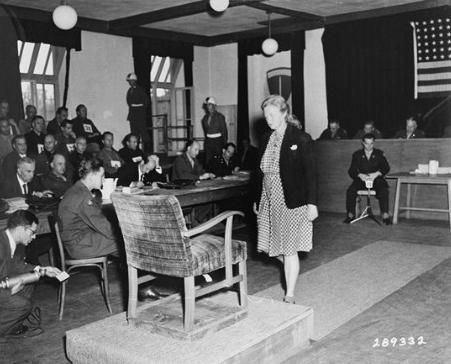
Notorious camp guard Ilse Koch during the trial against staff members of KZ Buchenwald. Source: NARA
Definitielijst
- concentration camp
- Closed camp where people are being held captive that are considered to be anti- social, enemies of the state, criminal or unwanted individuals. These groups mostly do not get a fair trial or are condemned to doing time in a camp.
- Mauthausen
- Place in Austria where the Nazi’s established a concentration camp from 1938 to 1945.
- Nazi
- Abbreviation of a national socialist.
Victims of the concentration camps
The number of deaths in a concentration camp being high has been mentioned more than once. To finalize this article, the total number of victims will be dealt with shortly but also the number of survivors who have been victimized just as well. Up until today, many people suffer from their memories of their stay in such a camp. This suffering has even been labeled in psychiatry as the concentration camp syndrome.
First off, the total number of deaths in the camps. Estimates show that during the period 1933-1945, between 2.5 and 3.5 million people have been imprisoned in these camps. It is estimated that a total of 600,000 prisoners died in the camps liberated by the western Allies. The exact number of people that died in camps in Germany, Poland and other countries is extremely hard to establish. The Nazis did keep extensive records of the number of prisoners but the reliability is questionable. In camps in the east for instance, Nazis let the number grow to 20,000. When of the total number of prisoners registered reached 20,000 – never more - the number of survivors would be subtracted and normally speaking. the number of mortalities would be known. Because of the limitations in record keeping, this calculation does not apply to many cases. Large parts of the camp records were also destroyed by the Nazis in the last days before the liberation.
Apart from that, the cause of death of prisoners is important to achieve a relevant number of victims. Then the question immediately pops up whether we have to take the number of deaths in the gas chambers in the extermination camps into account. This number stands at probably 2.6 million Jews but is in fact outside the number of victims of the concentration camps. Is it possible to determine how many people were murdered in the gas chambers of Auschwitz and Majdanek and how many perished in these concentration camps on the same location? Then the question remains whether we have to add the number of people who perished during transport or death marches to the total number of victims in the camps? And how do we deal for instance with a camp like Bergen-Belsen which changed goal many times and prisoners died outside the periods when the camp was designated a concentration camp? These are a few of the problems we will face when determining the number of prisoners.
All told, the best conclusion must be that it is extremely difficult to make a reliable estimate of the total number victims in the concentration camps. Revisionists and negationists will grab any badly founded estimate to prove that whatever is claimed about the history of concentration camps is incorrect. However, we have numerous documents and eyewitness accounts at our disposal that actually confirm the horrible and inhuman circumstances in the camps. We therefore better focus on facts and only mention the numbers of victims per camp. Of some camps, these numbers have been established rather meticulously and moreover, they are much better founded than a possible estimate of the total of all concentration camps.
| Concentration camp: | Number of inmates: | Number of deaths: | Source: |
| KZ Auschwitz | 1.100.000 - 1.500.000 | link | |
| KZ Bergen-Belsen | 50.000 (1) | link | |
| KZ Buchenwald | 250.000 (2) | 56.000 (2) | link |
| KZ Dachau | 200.000 | 30.000 | link |
| KZ Flossenbürg | 100.000 | 30.000 | link |
| KZ Groß-Rosen | 125.000 | 40.000 | link |
| KZ Herzogenbusch | 31.000 (3) | 749 | link | KZ Kaunas |
| KZ Krakau-Plaszów | 25.000 - 30.000 | 8.000 | link |
| KZ Lublin-Majdanek | 300.000 | 170.000 | link |
| KZ Mauthausen | 200.000 | 100.000 | link |
| KZ Mittelbau-Dora | 60.000 (4) | 20.000 (5) | link |
| KZ Natzweiler-Struthof | 40.000 | 10.000 - 12.000 | |
| KZ Neuengamme | 106 000 | 55.000 | link |
| KZ Niederhagen-Wewelsburg | 3.300 | 1.285 | link |
| KZ Ravensbrück | 153000 (6) | 20.000 - 30.000 | link | KZ Riga-Kaiserwald |
| KZ Sachsenhausen | > 200.000 | 30.000 - 35.000 | link |
| KZ Stutthof | 110.000 | 65.000 | link | KZ Vaivara | KZ Warsaw | SS-Sonderlager Hinzert |
(2) Excluded: murdered Soviet prisoners of war, an estimated 1,100 prisoners of the Gestapo, inmates evacuated from other camps and victims of death marches.
(3) Between January 1943 and March 1945.
(4) From August 1943 to March 1945.
(5) Some 12,000 deaths have officially been recorded in SS files. Still to be added are non-registered prisoners, 1,200 victims of a British air raid, some 5,000 deported from 1944 to Majdanek and Bergen-Belsen to be murdered there and an unknown number of victims of the death marches in 1945. A cautious estimate shows 20,000 dead.
(6) This number is made up of 132,000 female, 20,000 male prisoners and 1,000 girls from Jugendschutzlager Uckermark.
Any number of victims is horrendous, certainly when we realize that the majority of these people were being locked up only because their identity or origin wasn't accepted within the Weltanschauung of the Nazis. Racism and discrimination partly laid at the roots of the concentration camps and the mortality rate. Something we still have to remember today.
Apart from the people who have perished in the German concentration camps and their next of kin, we also have to remember those who survived the camp. The memory of the inhuman conditions there and the fact they were balancing on the brink of death has been the mainstay of many former prisoners and this is still the case with those still alive. Former prisoners often contracted mental problems many years later as a result of their pent-up memories of the past. After the war, some people got so severely deranged mentally that medics and psychologists have labeled their suffering the concentration camp syndrome, a form of PTSS. Research has shown that former inmates would do better than ignore their experiences in the camp as this can cause mental problems that can severely disrupt life. To that end, the 'Stichting Post-Concentration Camp Syndroom' was founded in the Netherlands in 1971. In 1973, the foundation was renamed 'Stichting Centrum 1945'.
For many victims, an important manner to try and deal with their memories was describing their experiences in the concentration camps. Former prisoners not only told about their experiences as a way of dealing with them, many wished to make a contribution to history, so these atrocities wouldn't be forgotten and people could learn from them. Two very commendable autobiographies of former concentration camp inmates are: 'Mijn belevenissen in de Duitse concentratie kampen by Johannes Teunissen and Leven met de dood. Een vrouw overleeft Birkenau by Olga Lengyel. Dutchmen Johannes Teunissen was picked up because he was a member of the 'Geuzengroep' and he was imprisoned in KZ Buchenwald, Groß-Rosen and Dachau. Hungarian-Jewish physician Olga Lengyel spent eight months in Auschwitz-Birkenau – actually not a concentration camp but an extermination camp – and survived as the only member of her family. Both authors write in a gripping and extensive manner about camp life and the way they managed to survive in the atrocious world of a concentration an extermination camp. These are but two titles in the massive amount of impressive, touching and horrifying autobiographies written by former inmates.
Definitielijst
- Auschwitz-Birkenau
- The largest German concentration camp, located in Poland. Liberated on 26 January 1945. An estimated 1,1 million people, mainly Jews, perished here mainly in the gas chambers.
- concentration camp
- Closed camp where people are being held captive that are considered to be anti- social, enemies of the state, criminal or unwanted individuals. These groups mostly do not get a fair trial or are condemned to doing time in a camp.
- Jews
- Middle Eastern people with own religion that lived in Palestine. They distinguished themselves by their strong monotheism and the strict observance of the Law and tradition. During World War 2 the Jewish people were ruthlessly persecuted and annihilated by the German Nazis. . An estimated 6,000,000 Jews were exterminated.
- Majdanek
- Concentration camp nearby the Polish city of Lublin. Originally a POW camp. From 1942 an extermination camp.
- Mauthausen
- Place in Austria where the Nazi’s established a concentration camp from 1938 to 1945.
- Racism
- Discrimination based on race.
- raid
- Fast military raid in enemy territory
- Weltanschauung
- This expression has often been used to refer to the "wide worldview" or "wide world perception" of a people, family, or person.
Epilogue
At the end of this article, we return to the thesis of philosopher Hannah Arendt. She calls concentration camps indispensable for the existence of a totalitarian state. In her opinion, such a state stands or falls by the existence of concentration and extermination camps. Furthermore, she calls these camps: the actual central institute of the total power and ruling apparatus. We asked ourselves in this article to what extent and why these camps actually were an important pillar of the Third Reich. Meanwhile we know the role of the camps within the country and in what way this role changed. In the period of 1933 to 1945 the camps played different roles in the political, social, racial and economic spheres.
From a social point of view, from about 1935 to 1937, the camps played an increasingly important role. Hitler's Weltanschauung – the way he looked at society – was the foundation for this. Socially undesired persons, such as homosexuals, prostitutes, wanderers and longtime jobless people were arrested in growing numbers and locked up in camps for an extended period of time. In this way, German society was being adapted to the norms and values of national socialism.
After the Kristallnacht of 1938 but mainly from 1942 on, the camps not only played a political or a social role but became instruments with which the racial policy of the Nazis was shaped. Mainly Jews but also Gypsies for instance were considered racially inferior, a blemish on German society which should consist of pure Aryans only. Whereas at first, concentration camps were to spread fear in Jewish society in order to encourage them to leave Germany, after a few years this policy increasingly focused on the physical extermination of Jews. Auschwitz and Lublin-Majdanek were for a part converted to extermination camps were Jews were murdered in assembly line fashion. But in the 'normal' concentration camps, until the end of the war and even after that, Jews died in large numbers. They were killed simply because the Nazi ideology stipulated that Jews were inferior.
Finally the camps played an important economic role in Nazi society. Because German males were sent to the front in their masses, their work places within the war industry and elsewhere had be filled. The large number of prisoners in concentration camps made up an extremely important labor pool. Since the outbreak of war, inmates were deployed as forced laborers in increasing numbers. Work conditions were extremely bad and frequently, labor and mass extermination went hand in hand. According to the slogan 'Vernichtung durch Arbeit', large numbers of prisoners were sent to their death as forced laborers.
The political, social, racial and economic role of the camps made these institutes into a very important pillar of the national-socialist state. Just like for instance the propaganda apparatus, the police system and, not to be forgotten, the person of Adolf Hitler himself, the camps stood at the roots of the national-socialist regime and were an indispensable element of it. Hannah Ahrendt called concentration camps the actual central institute of the total power and rule apparatus and this can only be fully endorsed, although the impact of for instance propaganda should not be forgotten either. Based on the various roles of the concentration camps we can state that this camp system was indeed one of the most important foundations of the Third Reich. The camps were a major instrument in achieving the horrible goals of the national socialists and today they are an important warning from history.
When within a state, institutes similar to concentration camps are being established, this means that human rights are being endangered. Institutes with the sole aim to limit personal freedoms and suppress people have no place within a healthy, democratic society. Unfortunately, this warning from history couldn't prevent that concentration camps were being established after the war. People were shocked for instance when in 1992, images appeared on television of a Serbian concentration camp in which Croatians were locked up in dismal conditions. The setup of these camps may have differed but the misery was the same. It is the misery of the victims of Nazi Germany we commemorate each year but that isn't enough either. We must stay alert that concentration camps will and shall never ever be established again so the many inmates in the concentration camps of Nazi Germany have not died entirely for nothing.
Definitielijst
- concentration camp
- Closed camp where people are being held captive that are considered to be anti- social, enemies of the state, criminal or unwanted individuals. These groups mostly do not get a fair trial or are condemned to doing time in a camp.
- ideology
- A collection of principles and ideas of a certain system.
- Jews
- Middle Eastern people with own religion that lived in Palestine. They distinguished themselves by their strong monotheism and the strict observance of the Law and tradition. During World War 2 the Jewish people were ruthlessly persecuted and annihilated by the German Nazis. . An estimated 6,000,000 Jews were exterminated.
- national socialism
- A political ideology drawn up by Hitler based on the superiority of the German race, the leader principle and fierce nationalism that was fed by the hard Peace of Versailles. National socialism was anti-democratic and racist. The doctrine was elaborated in Mein Kampf and organised in the NSDAP. From 1933 to 1945 National socialism was the basis of totalitarian Germany.
- Nazi
- Abbreviation of a national socialist.
- propaganda
- Often misleading information used to gain support among supporters or to gain support. Often used to accomplish ideas and political goals.
- socialism
- Political ideology aiming at slight or no class differences. Means of production are owned by the state. Evolved as a response to capitalism. Karl Marx tried to substantiate socialism scientific.
- Weltanschauung
- This expression has often been used to refer to the "wide worldview" or "wide world perception" of a people, family, or person.
Information
- Article by:
- Kevin Prenger
- Translated by:
- Arnold Palthe
- Published on:
- 06-07-2024
- Last edit on:
- 09-07-2024
- Feedback?
- Send it!
Related sights
Related books
Sources
- BREITMAN, R., Heinrich Himmler, Verbum, Laren, 2005.
- GOLDHAGEN, D.J., Hitlers gewillige beulen, Manteau - De Bezige Bij, Amsterdam, 2002.
- KERSHAW, I., Hitler - Hoogmoed 1889-1936, Het Spectrum, Utrecht, 2003.
- KERSHAW, I., Hitler - Vergelding 1936-1945, Het Spectrum, Utrecht, 2003.
- KNOPP, G., Hitlers moordenaars, Het Spectrum, Utrecht, 2004.
- LENGYEL, O., Leven met de dood, Uitgeverij Verbum, 2005.
- MACLEAN, F., The Camp Men, Schiffer Military History, Atglen (USA), 1999.
- POHL, D., Holocaust, Verbum, Laren, 2005.
- PRENGER, K., Meer dan alleen Auschwitz, Just Publishers, 2021.
- SNYDER, L., Encyclopedia of the Third Reich, Wordsworth, Hertfordshire (UK), 1998.
- SPECTOR, S. & ROZETT, R., Encyclopedie van de Holocaust, Kok, Kampen, 2004.
- TEUNISSEN, J., Mijn belevenissen in de Duitse concentratiekampen, Kok, Kampen, 2002.
- THOMPSON, J., De Bevrijding, Kosmos Z&K, Utrecht/Antwerpen, 2005.
- TISSIER, T. LE, The Third Reich, After the Battle, 2005.
- MAGRY, K., '40~'45 Toen & Nu nr. 89 - Bergen-Belsen, Soest, Uitgeverij Quo Vadis.
- MOLLO, A., '40~'45 Toen & Nu nr. 27, Amstelveen, Tijl Periodieken.
- DISTEL, B., Zur Rolle und Struktur der nationalsozialistischen Konzentrationslager (link)
- LANZMANN, C., SHOAH, Les Films Aleph, 1985
- Microsoft Encarta Naslagbibliotheek (cd-rom), Winkler Prins, 2003.
- www.jewishvirtuallibrary.org
- www.jewishgen.org
- www.shoa.de
- www.keom.de/denkmal
- www.dhm.de
- www.documentatiegroep40-45.nl/dwangarbeid
- motlc.learningcenter.wiesenthal.org
- de.wikipedia.org
- en.wikipedia.org
